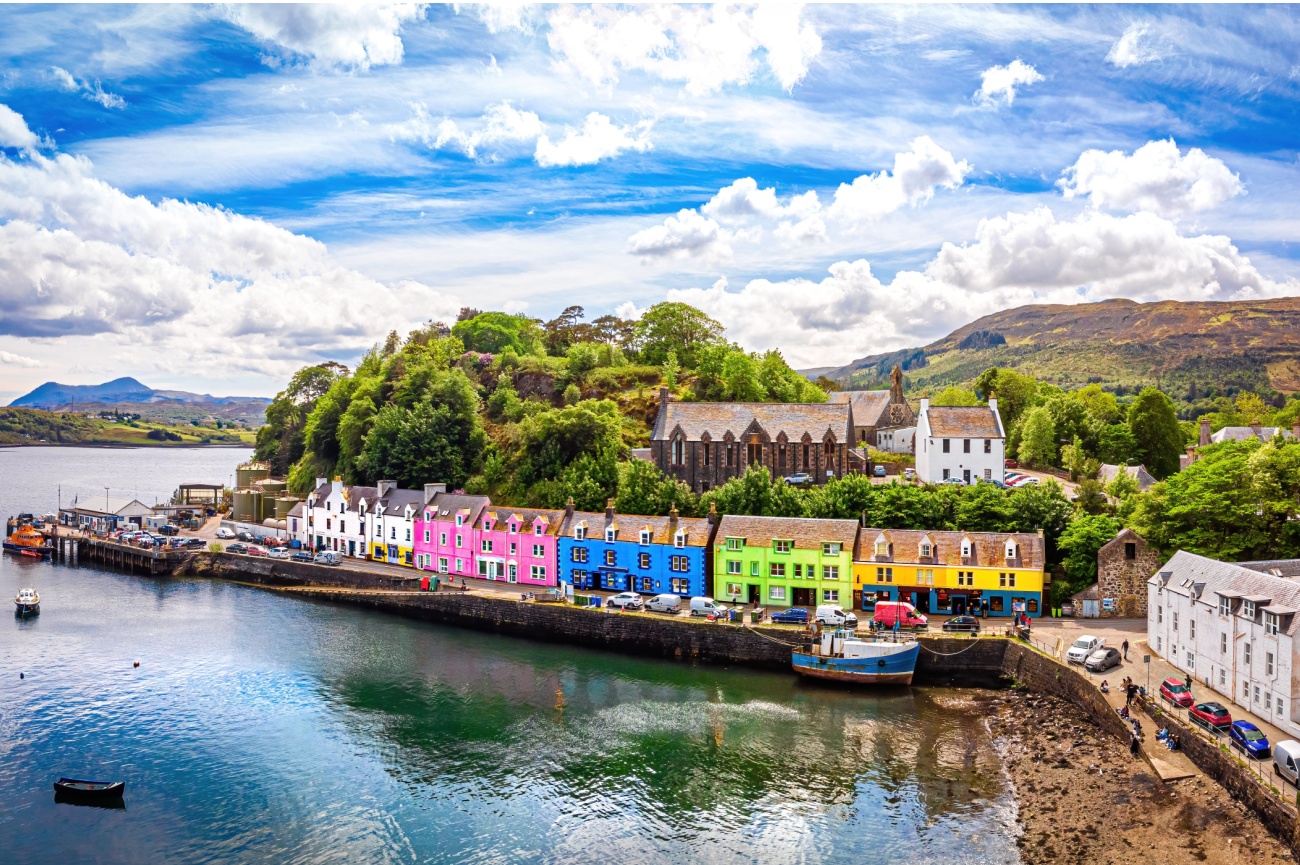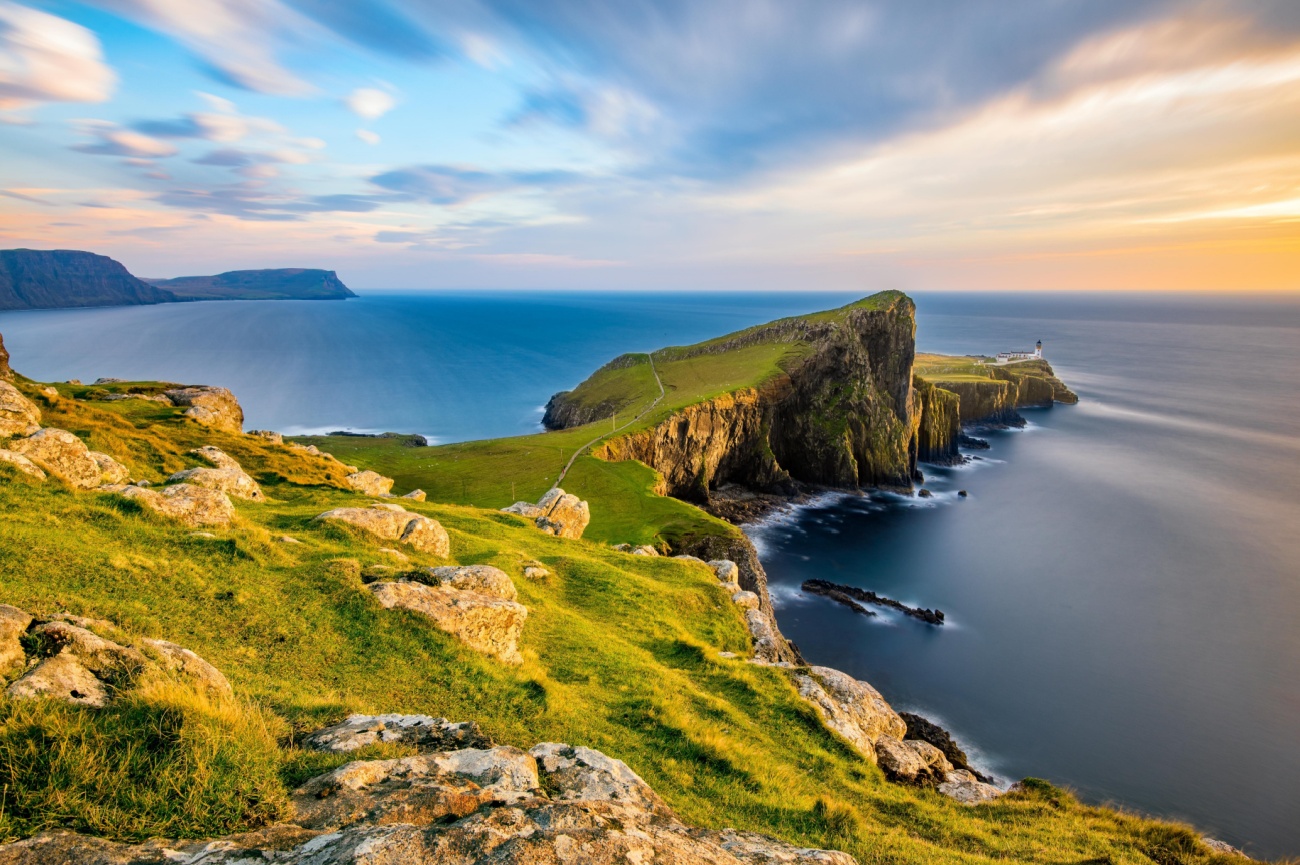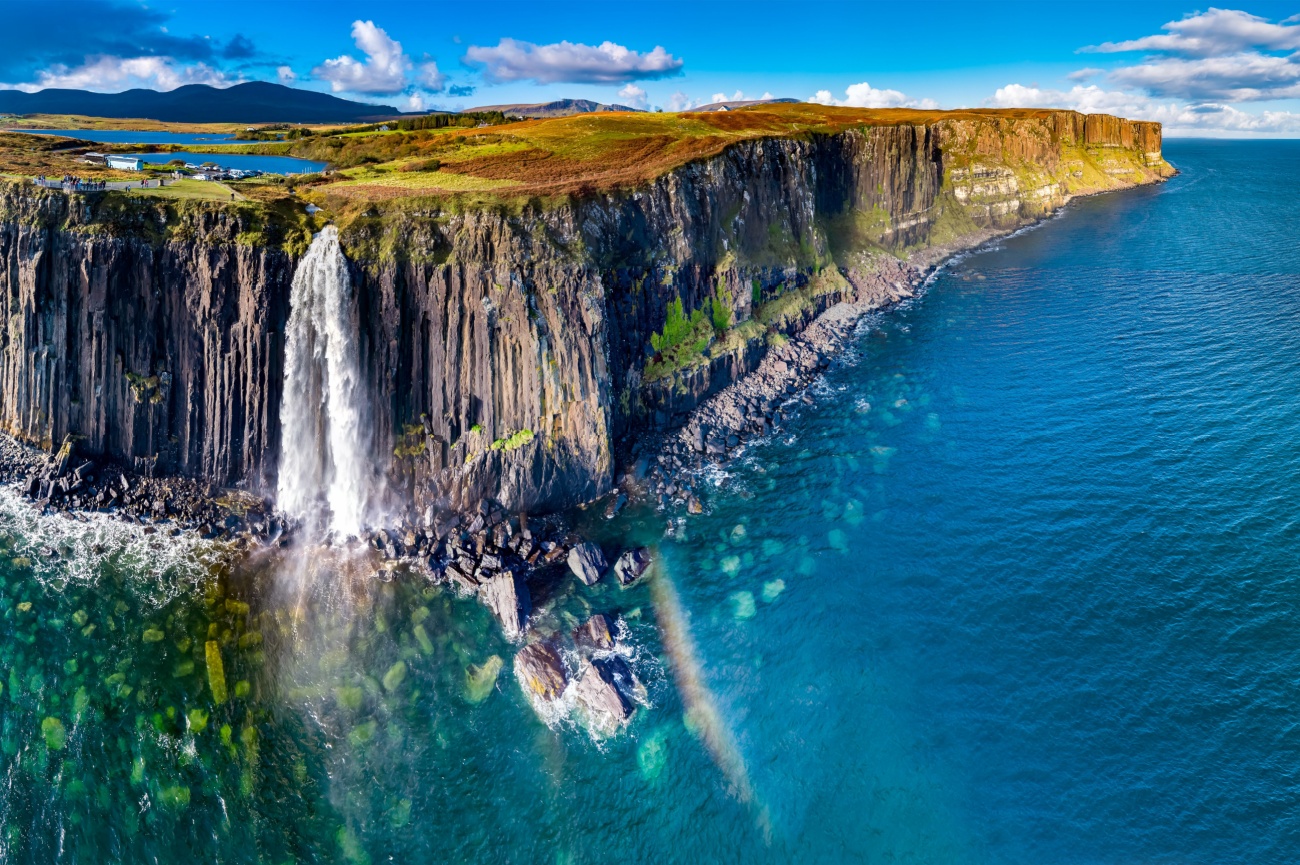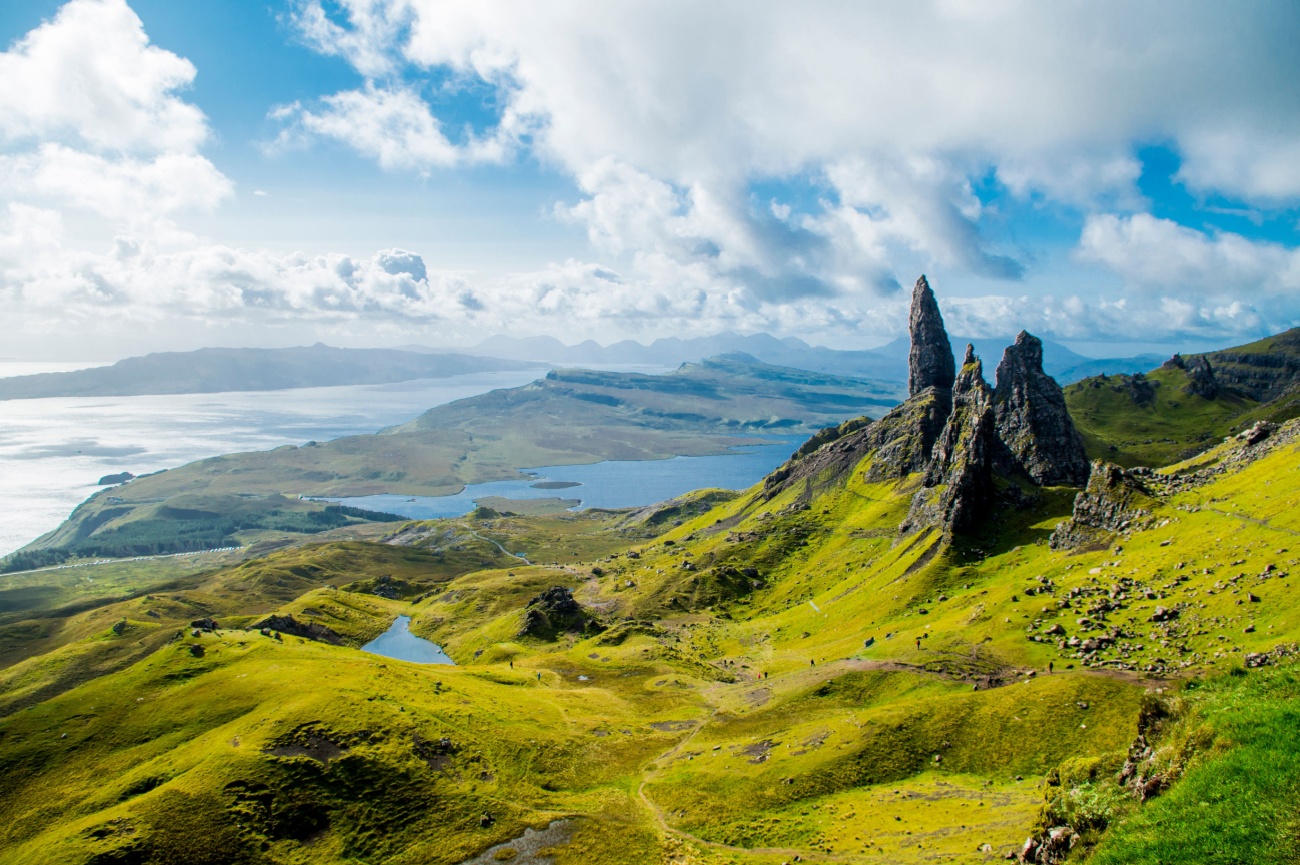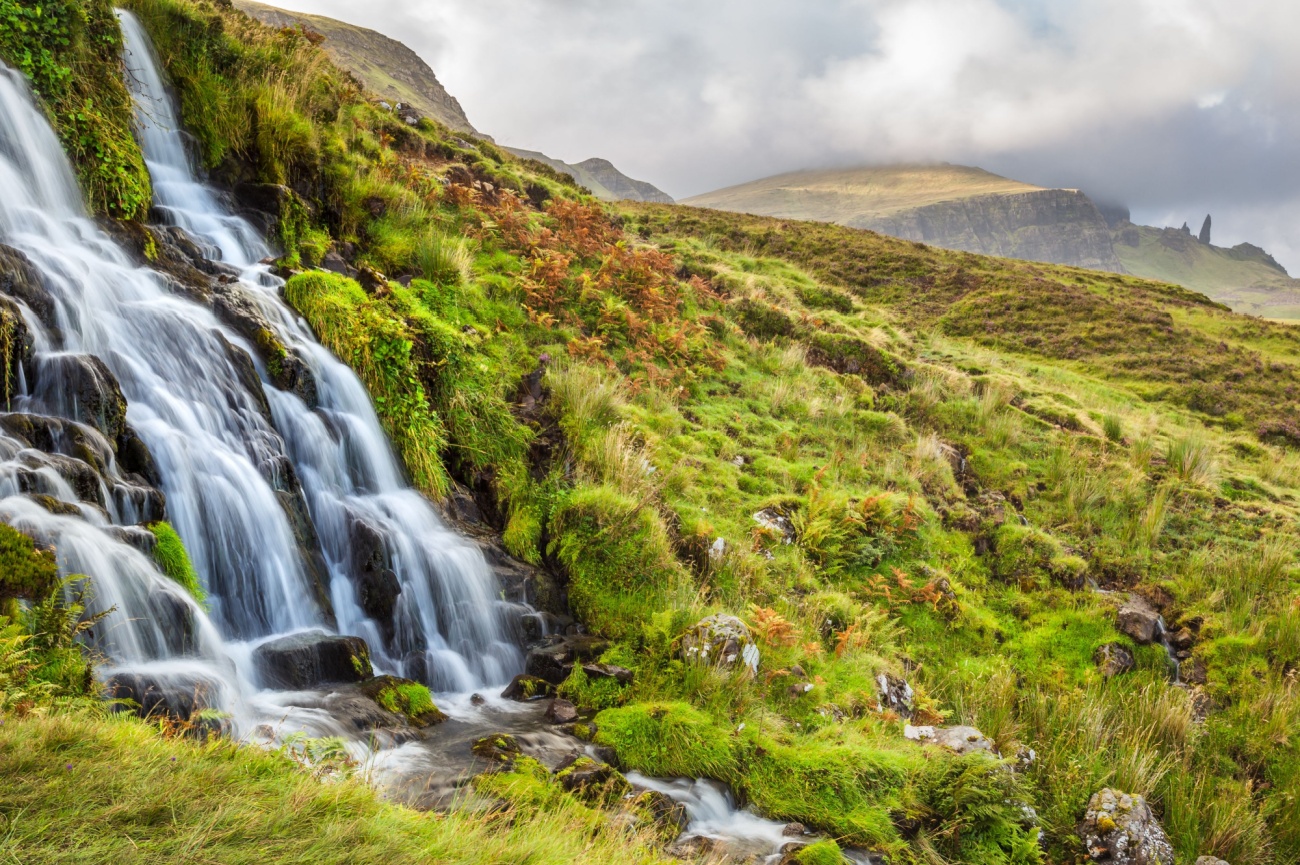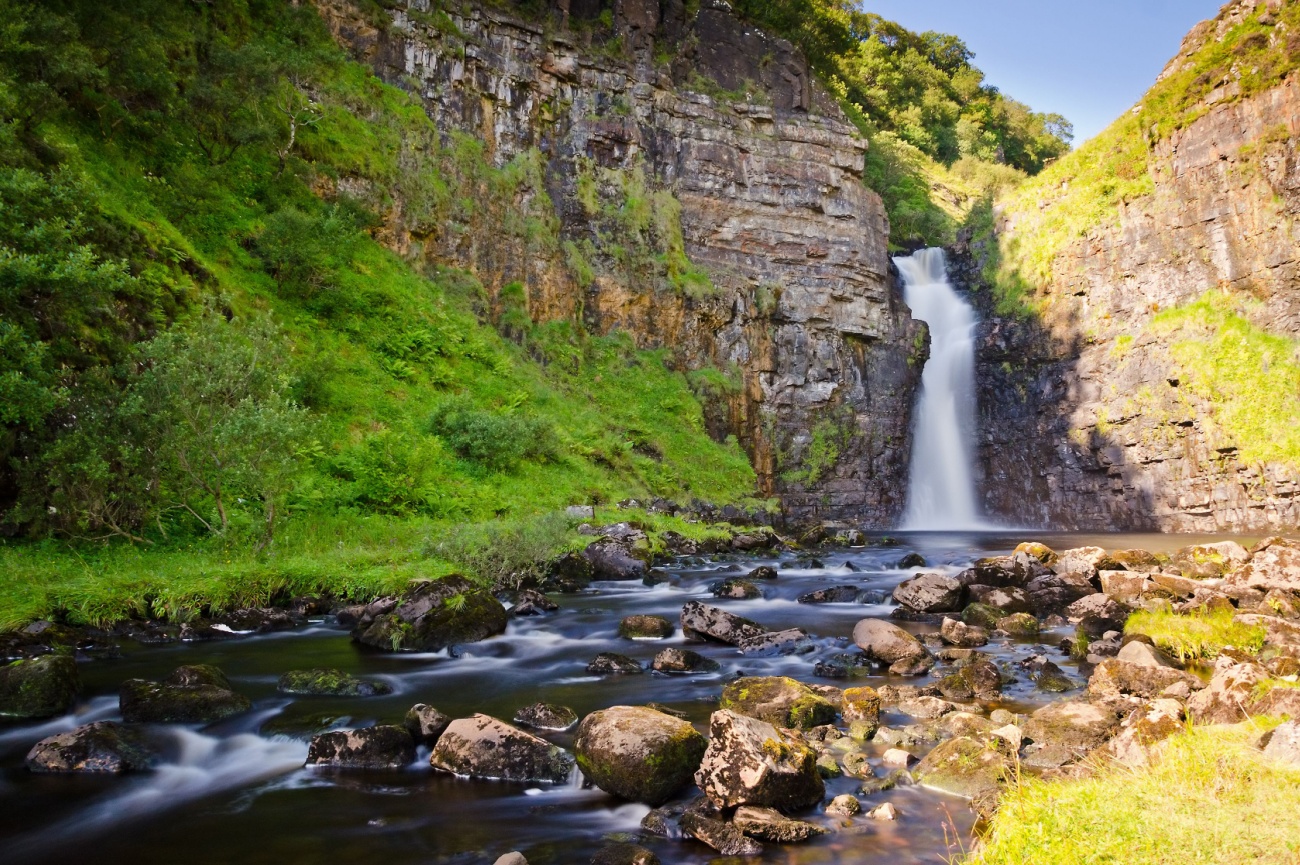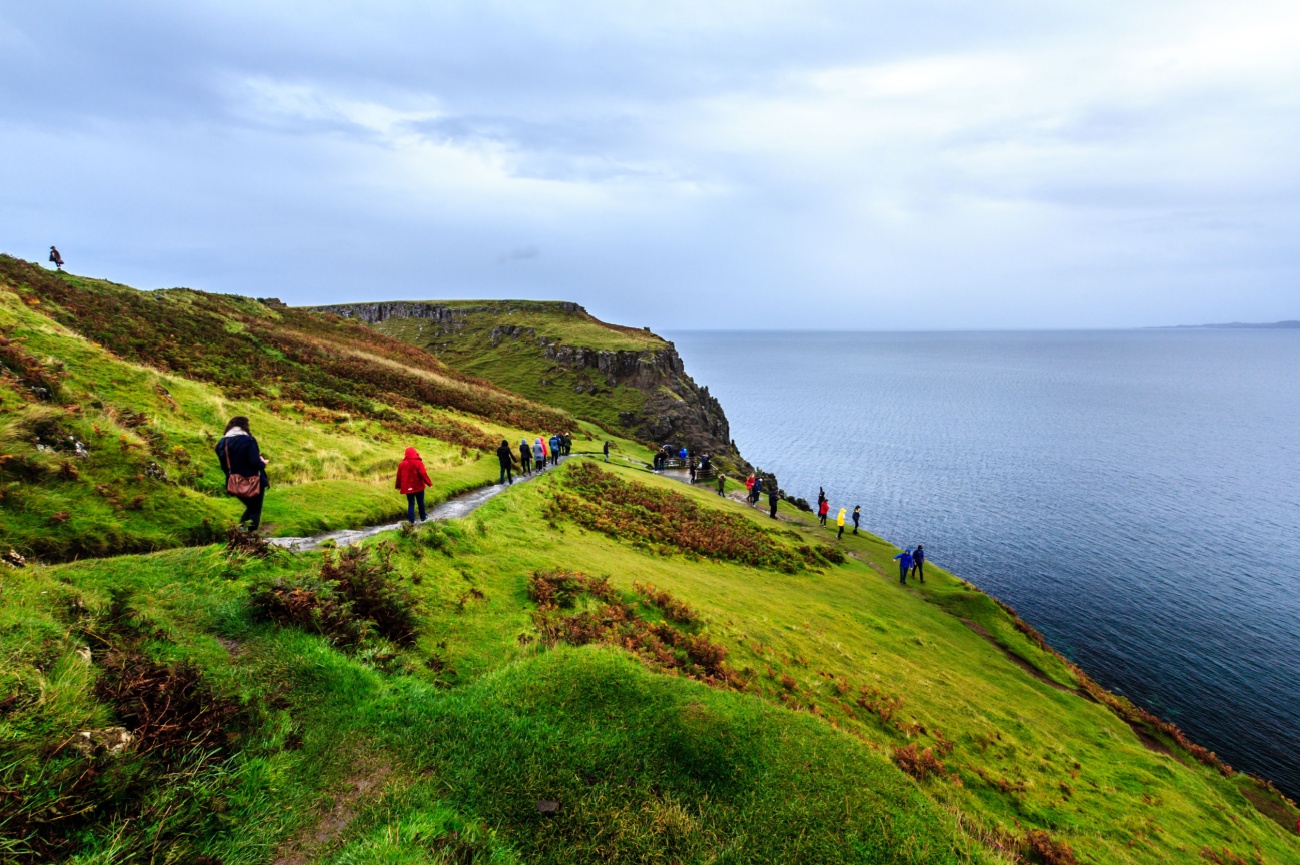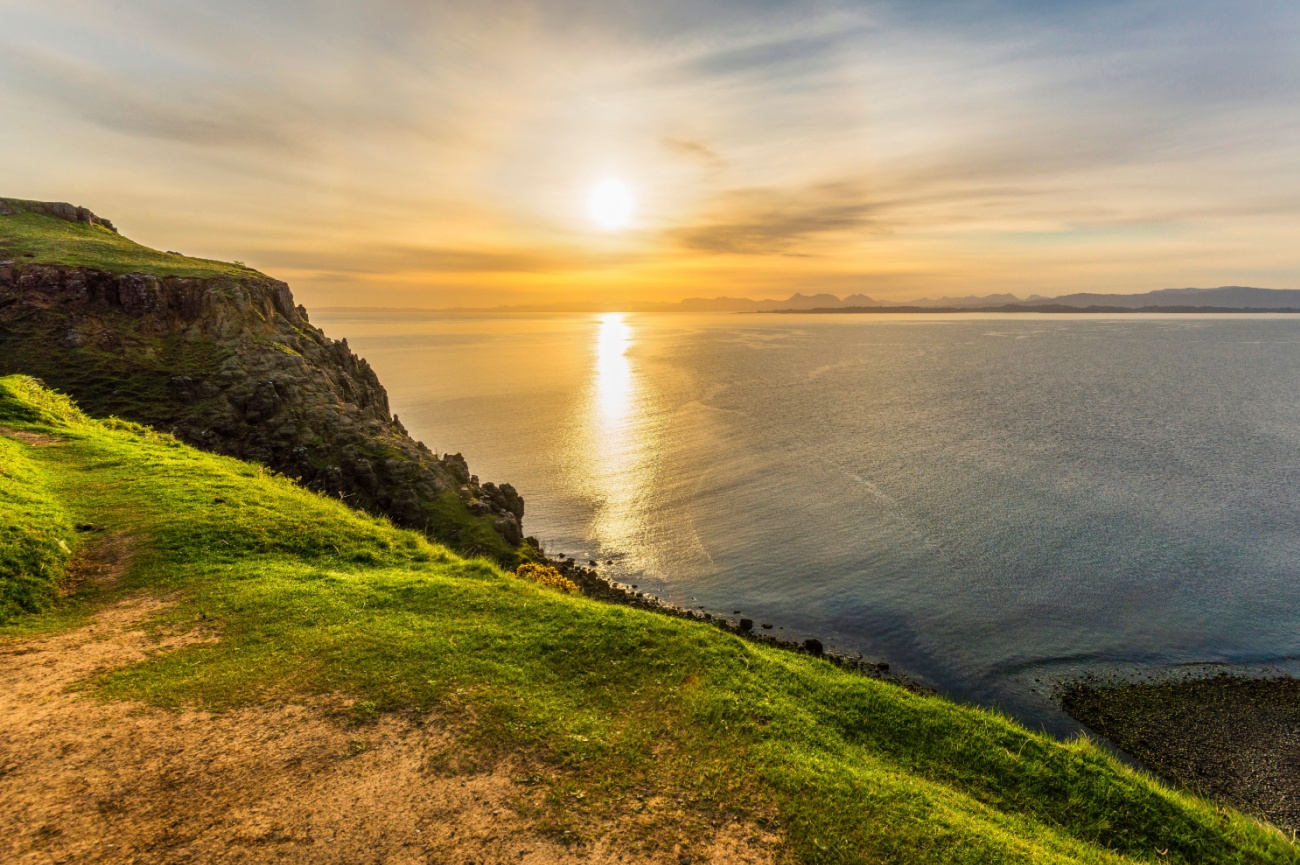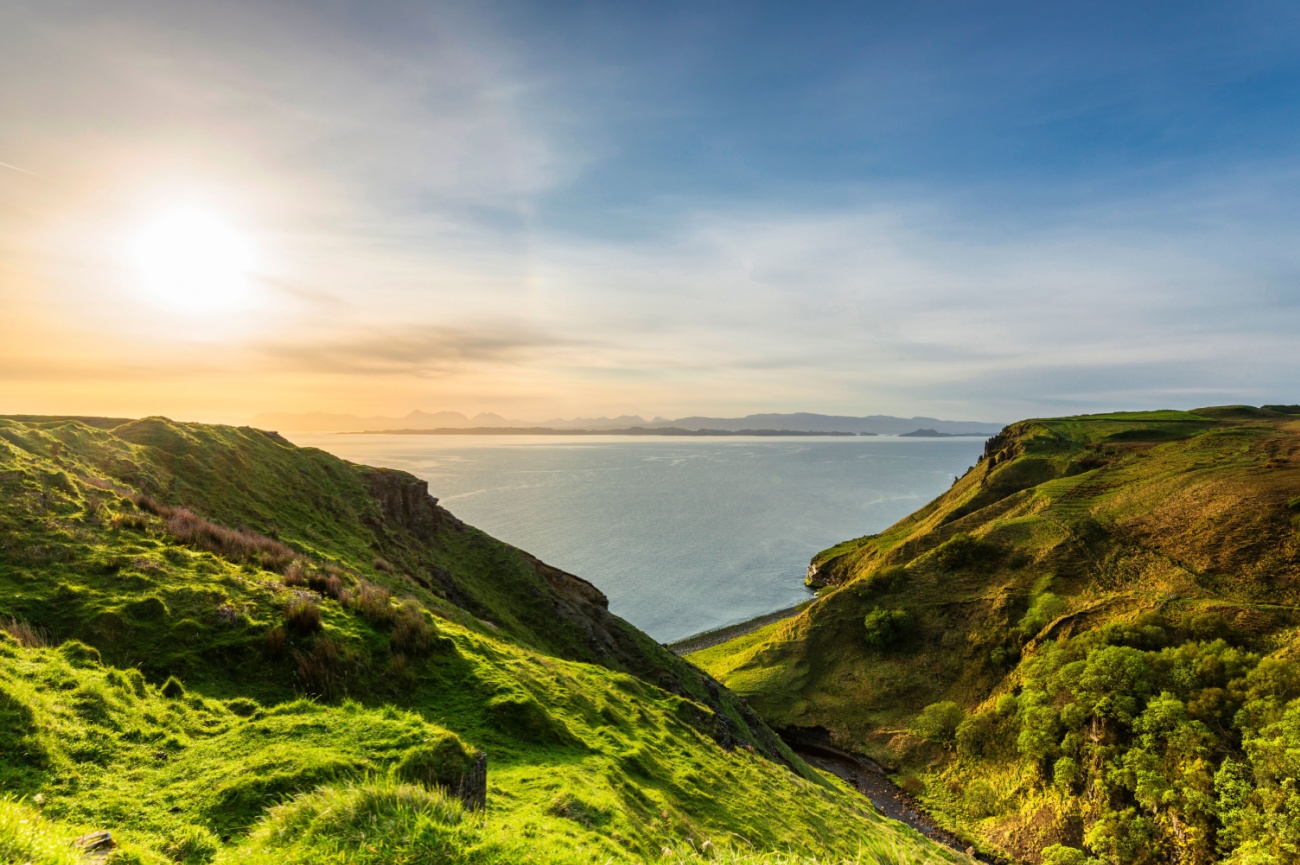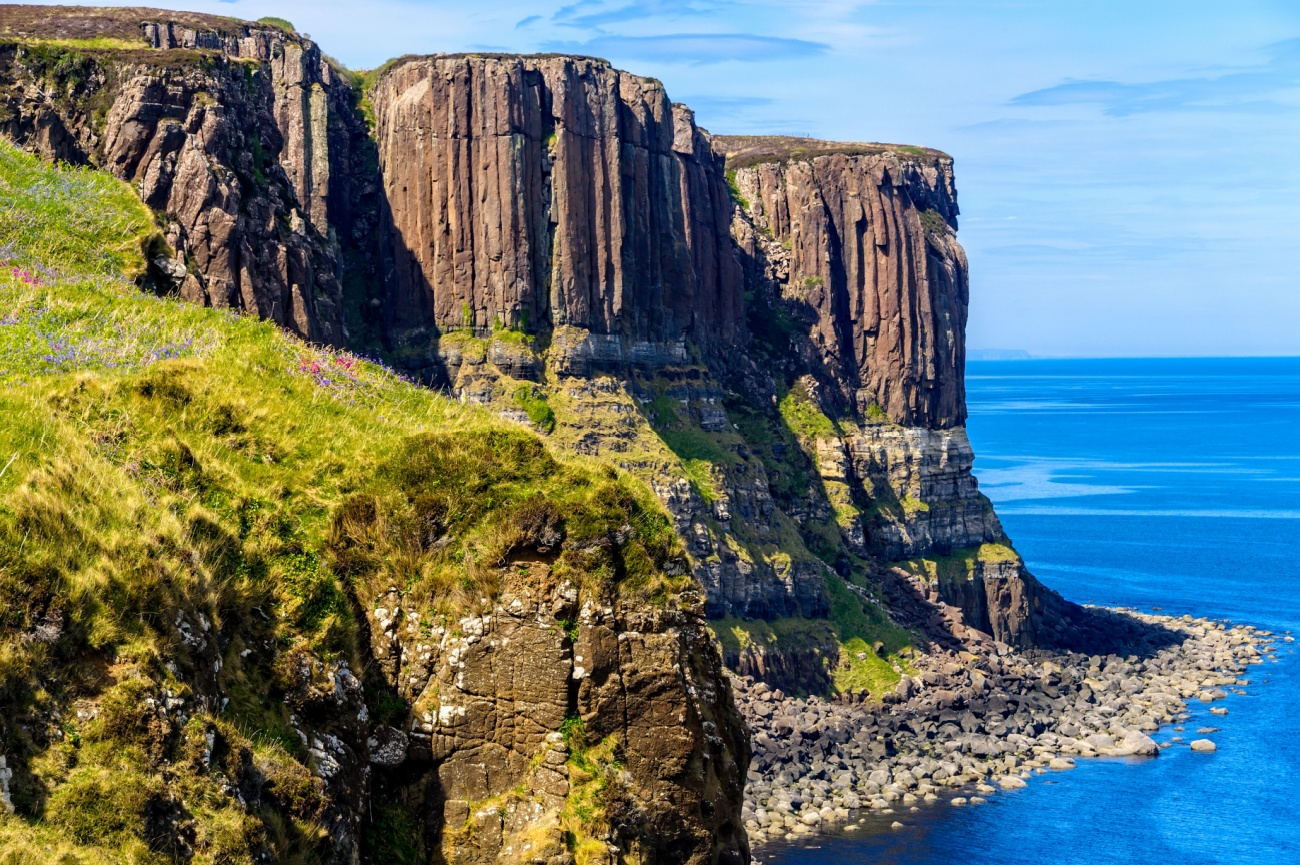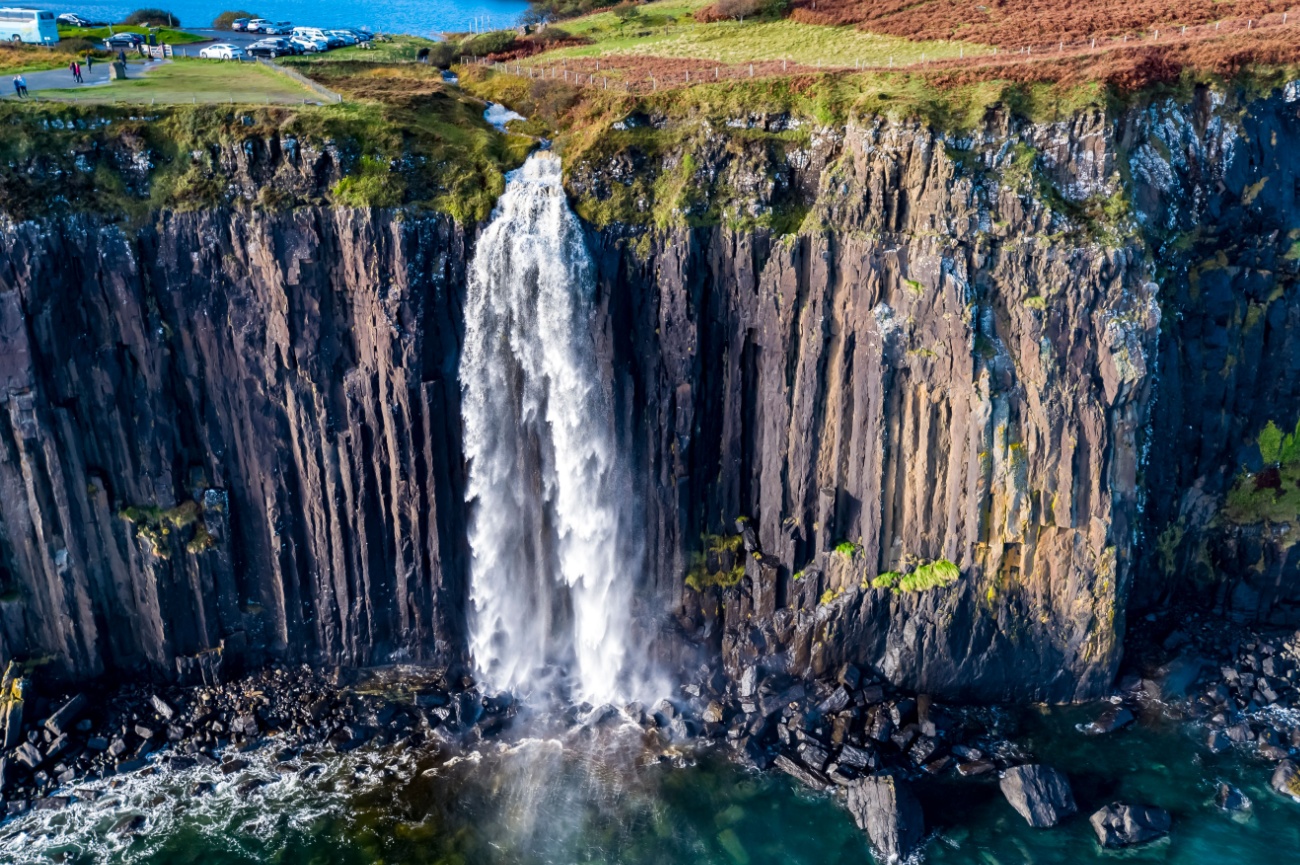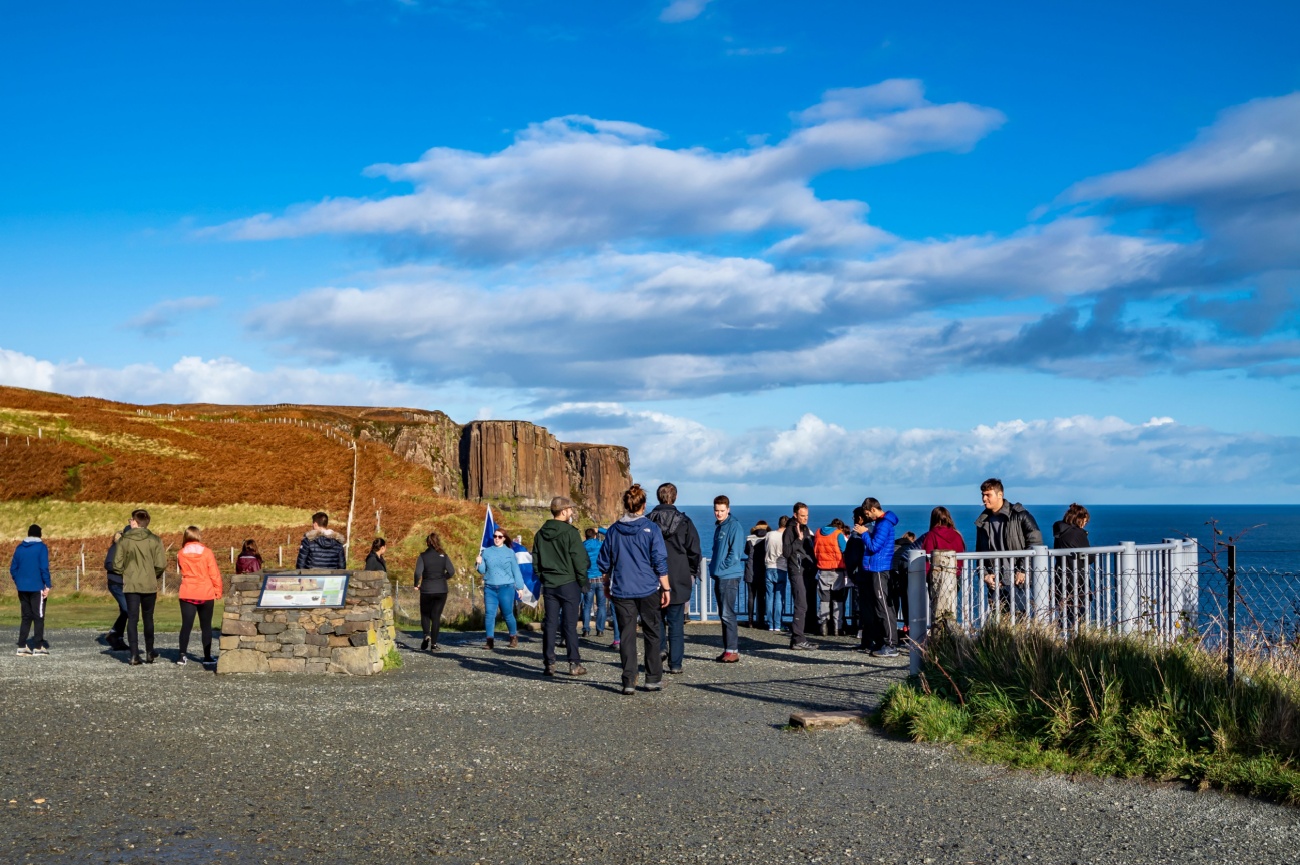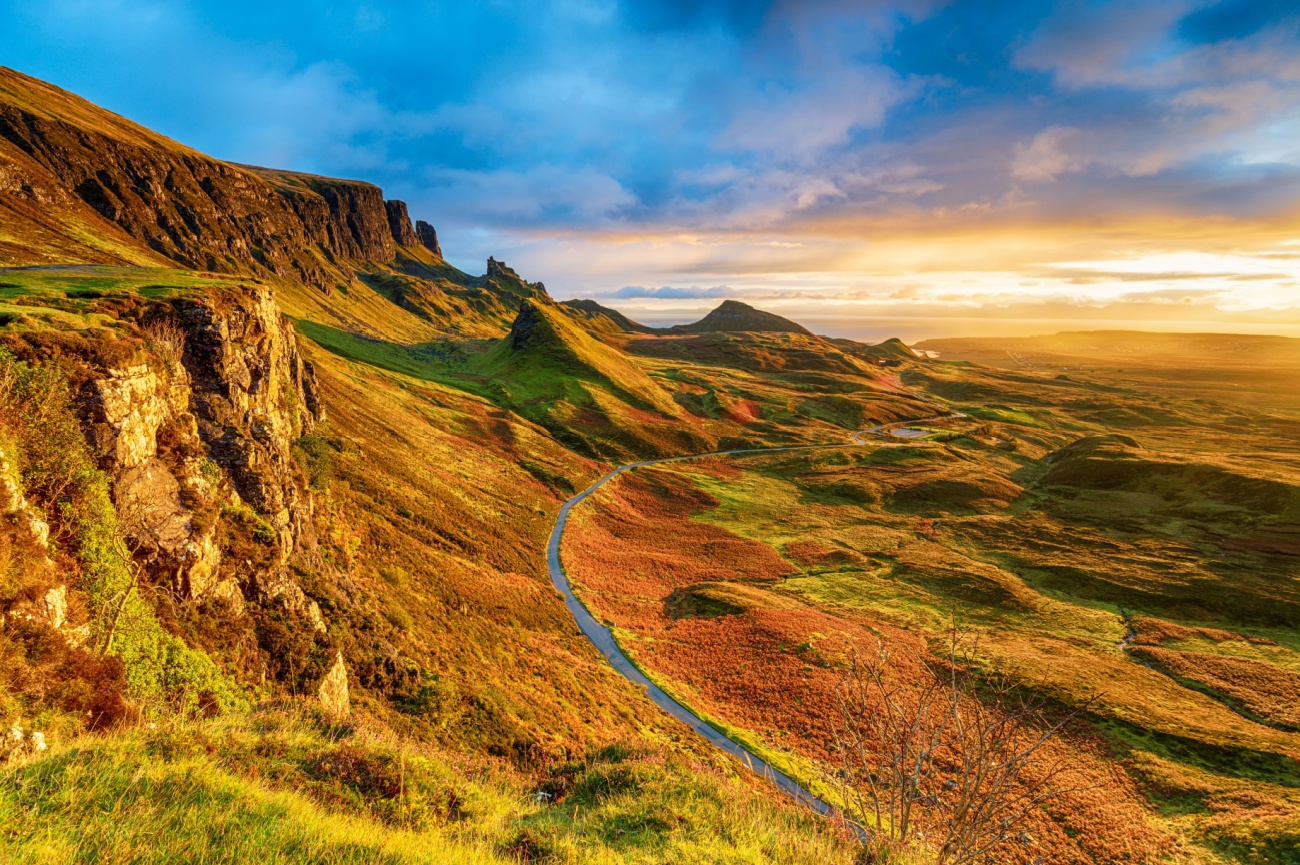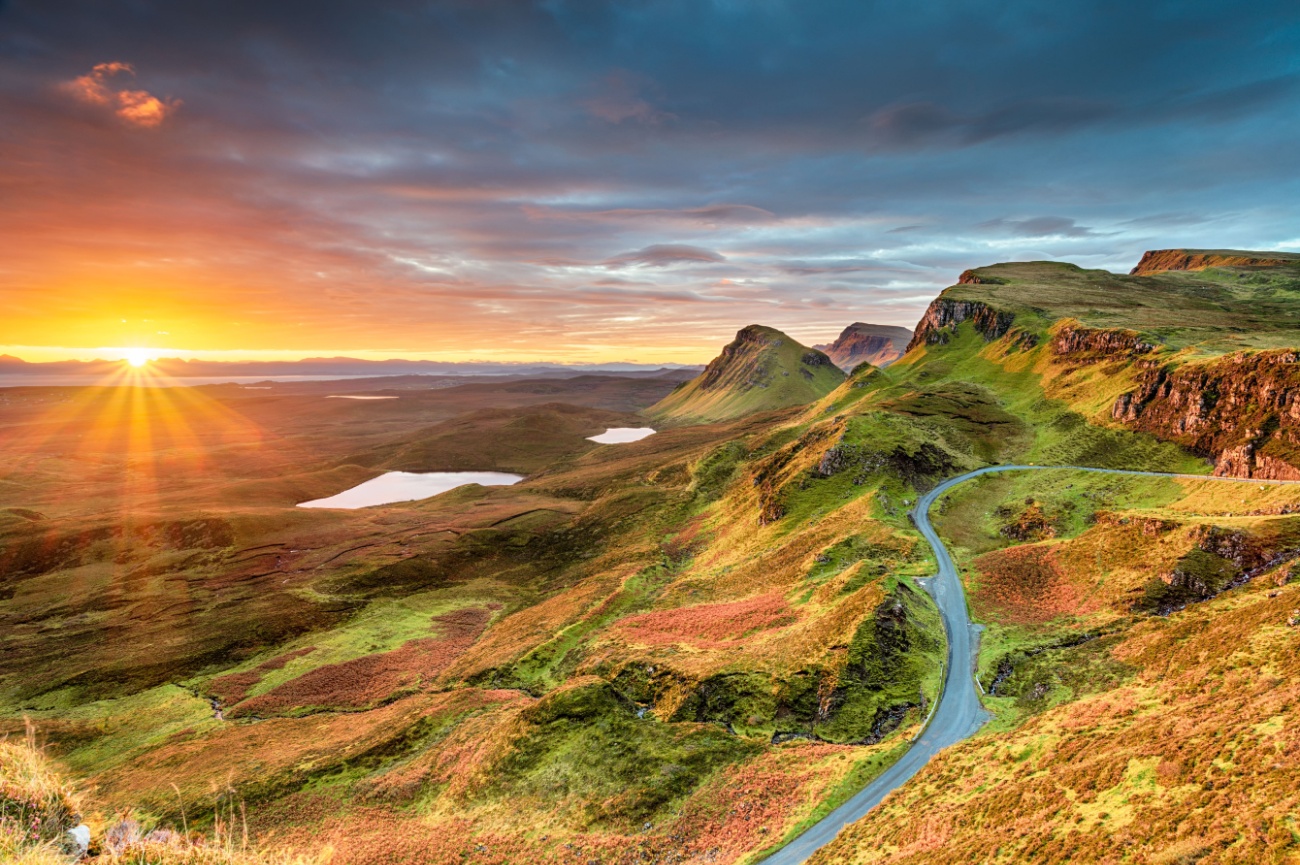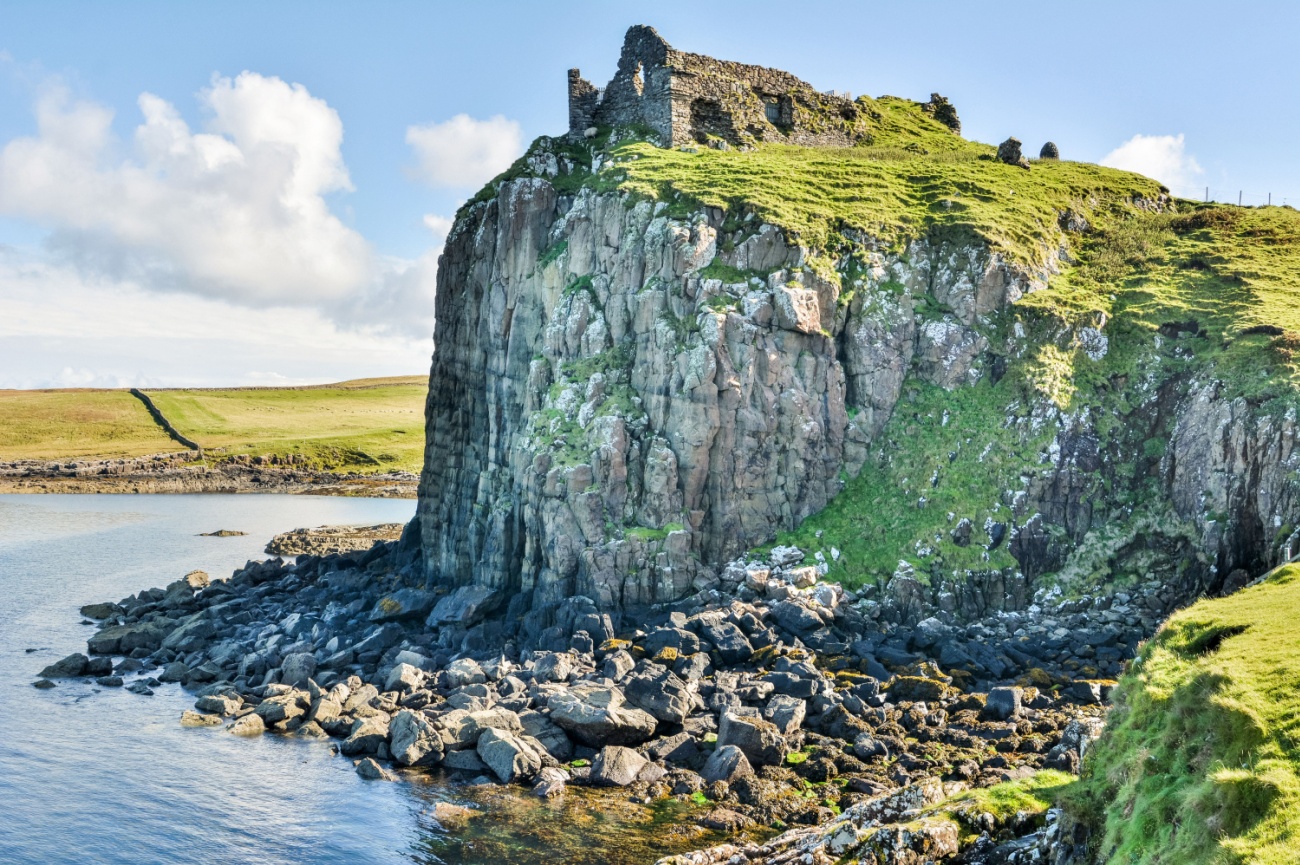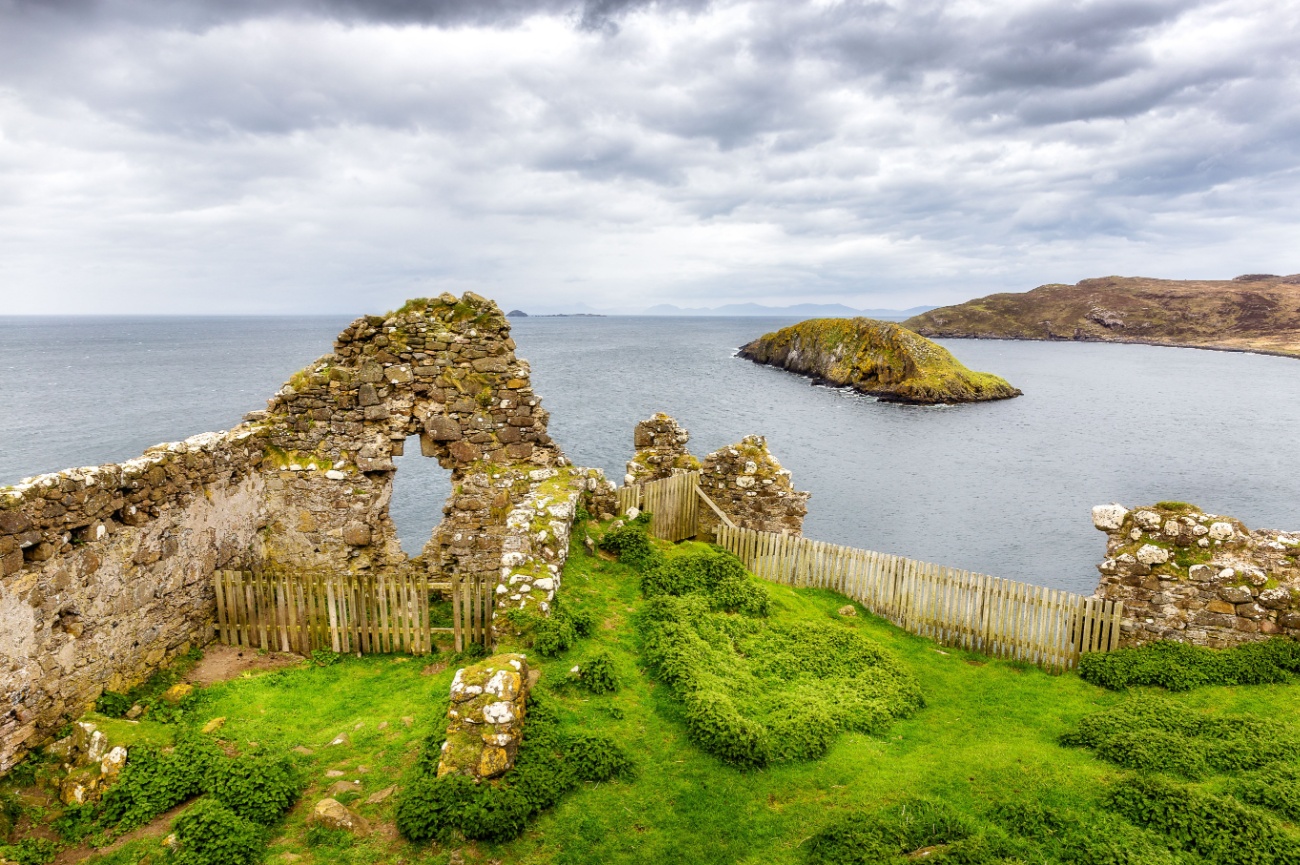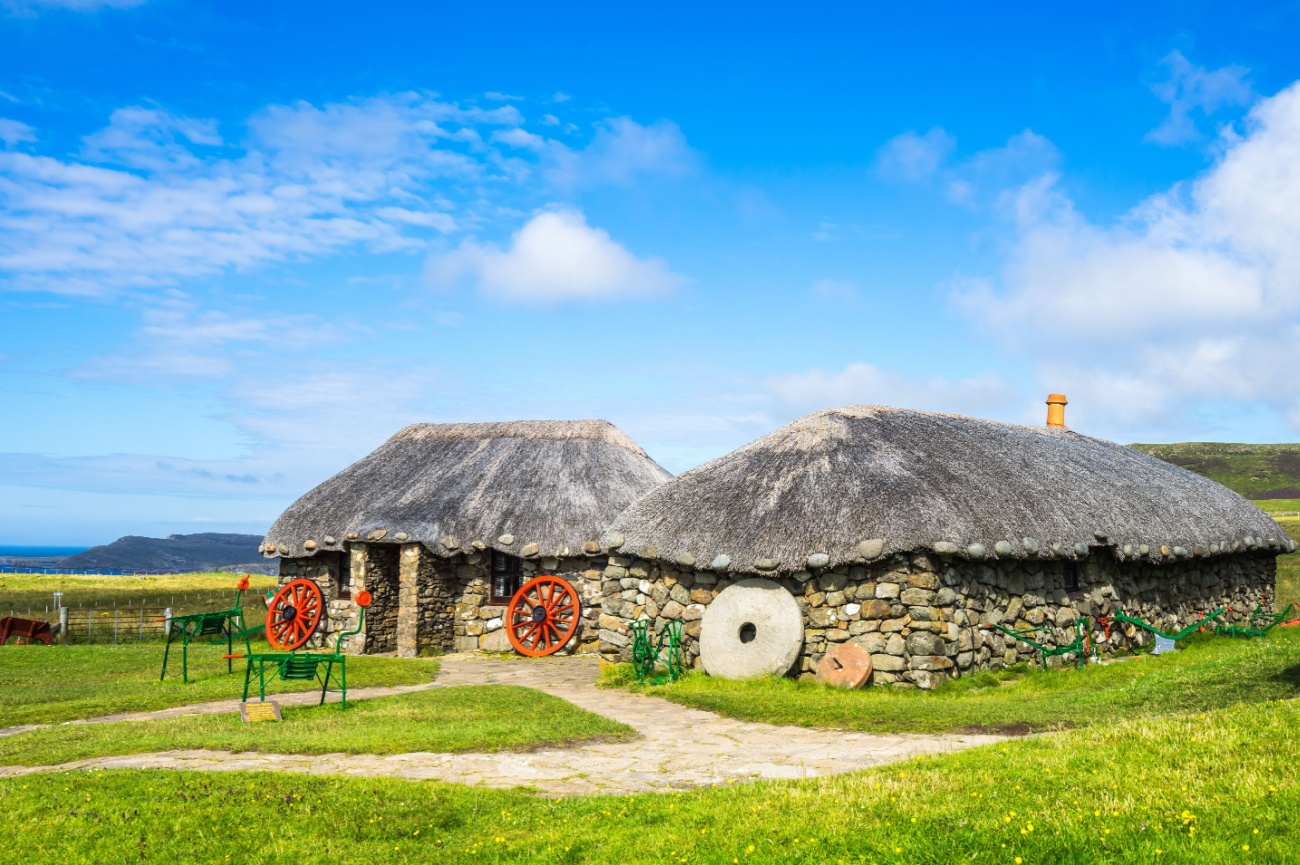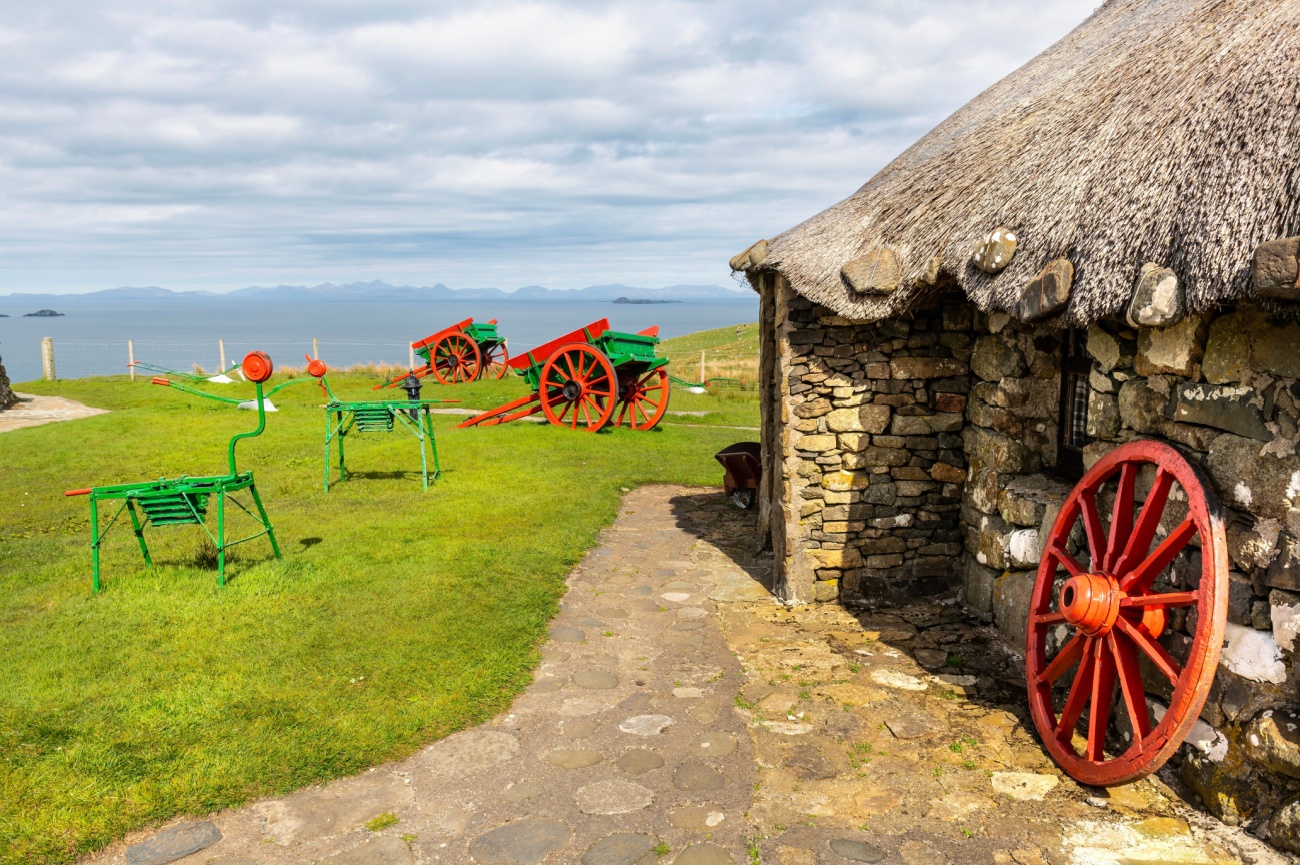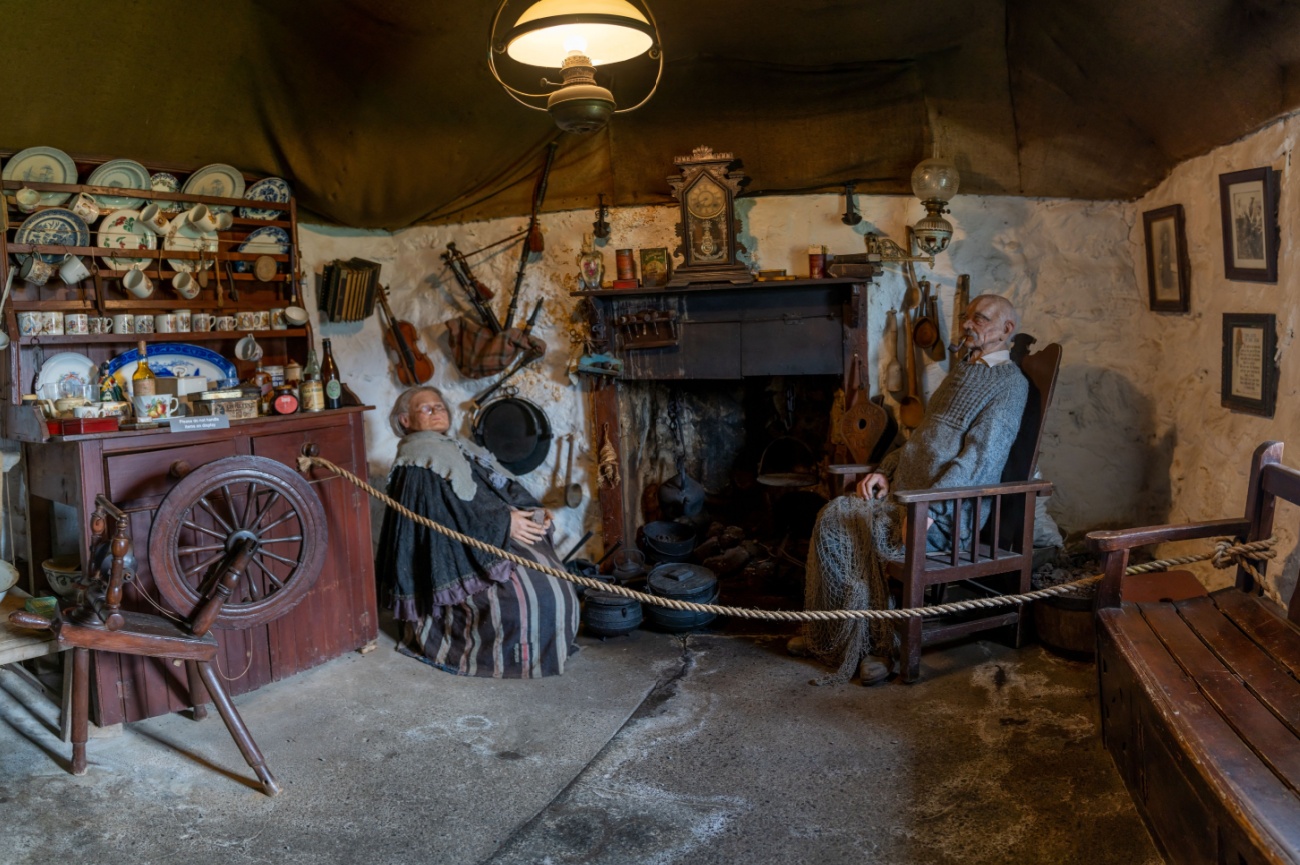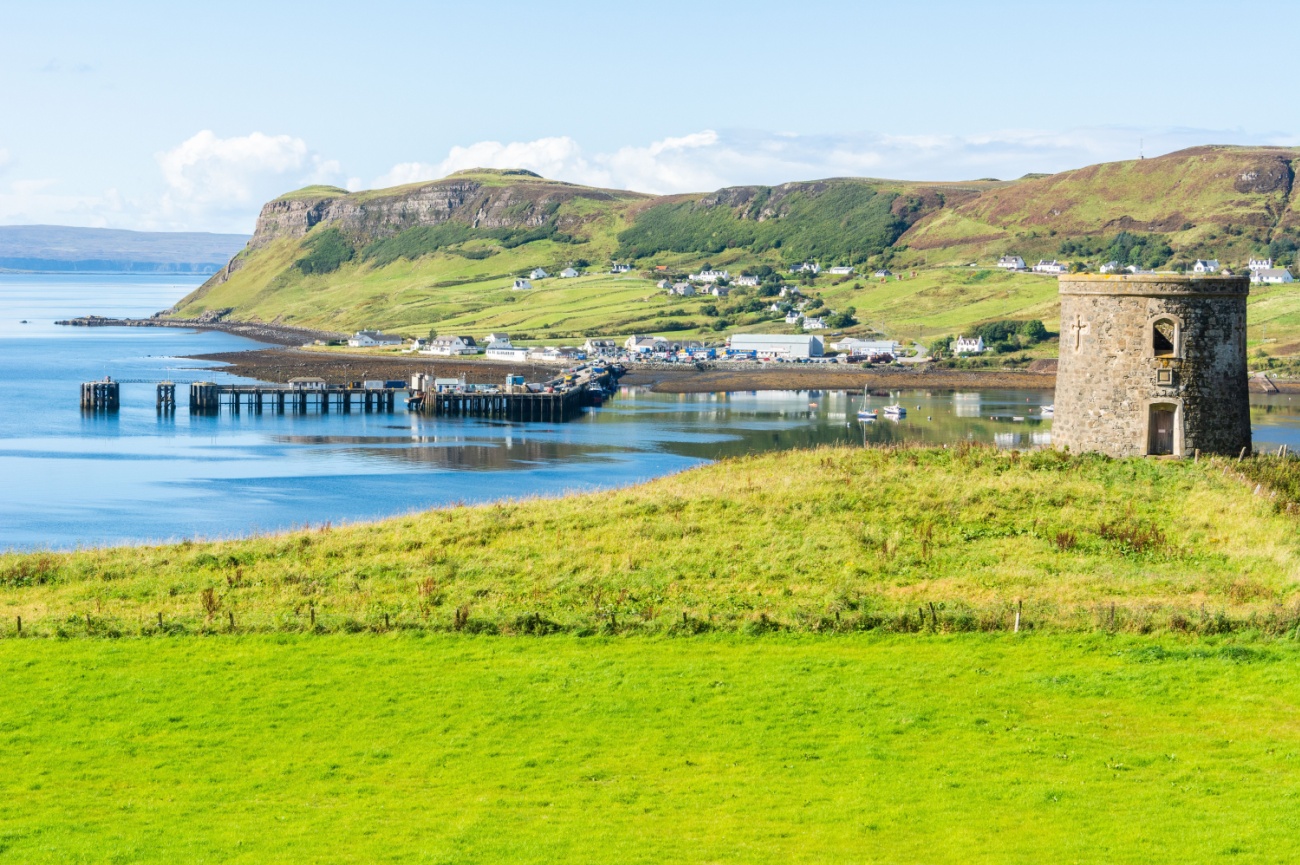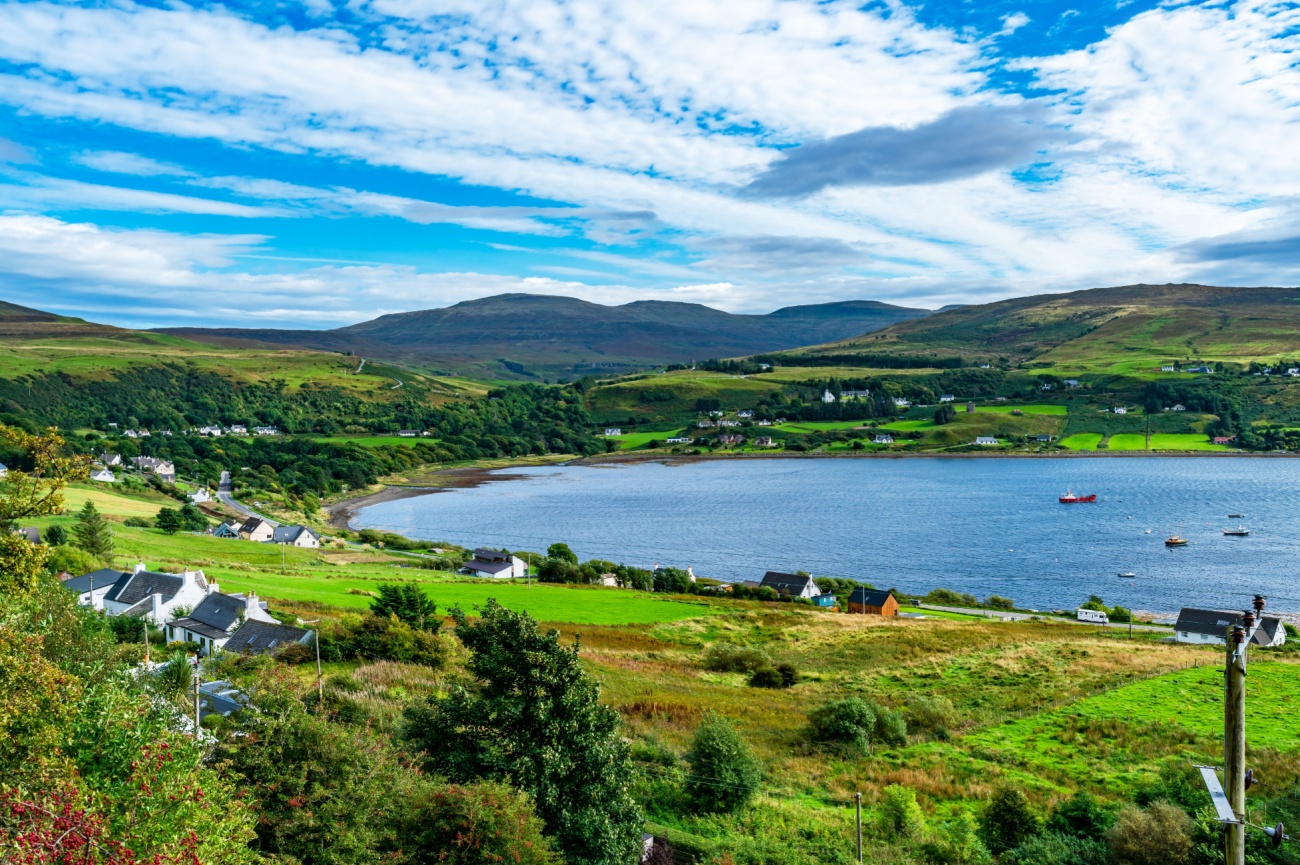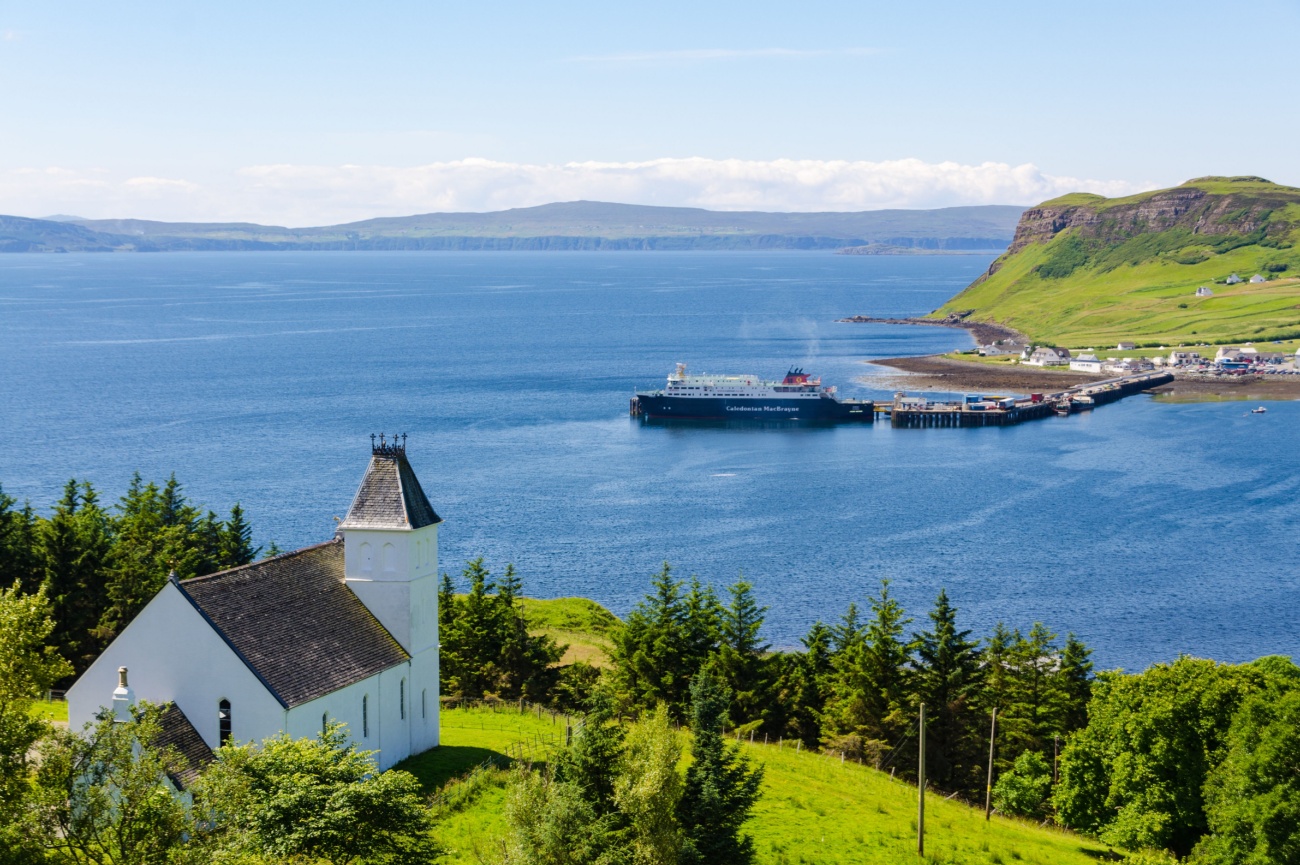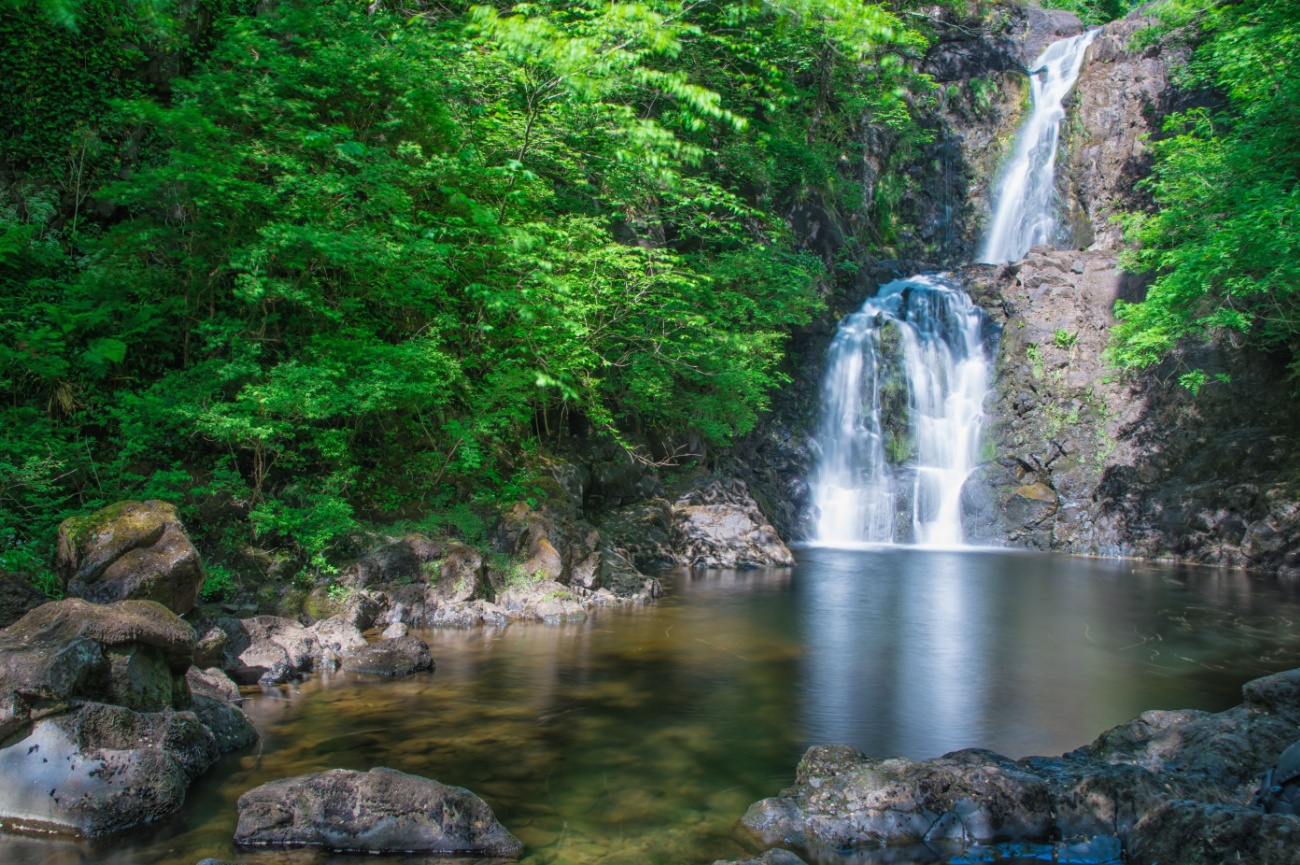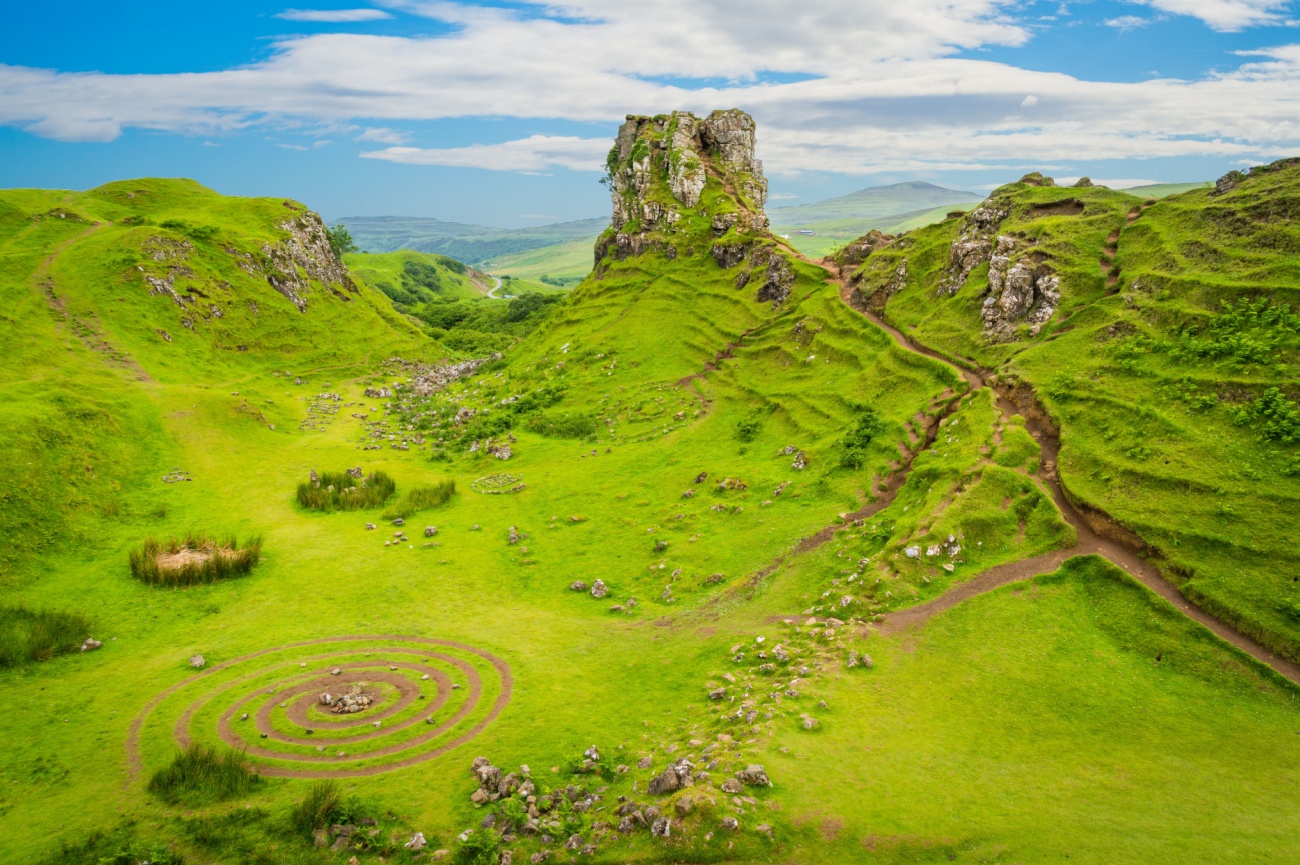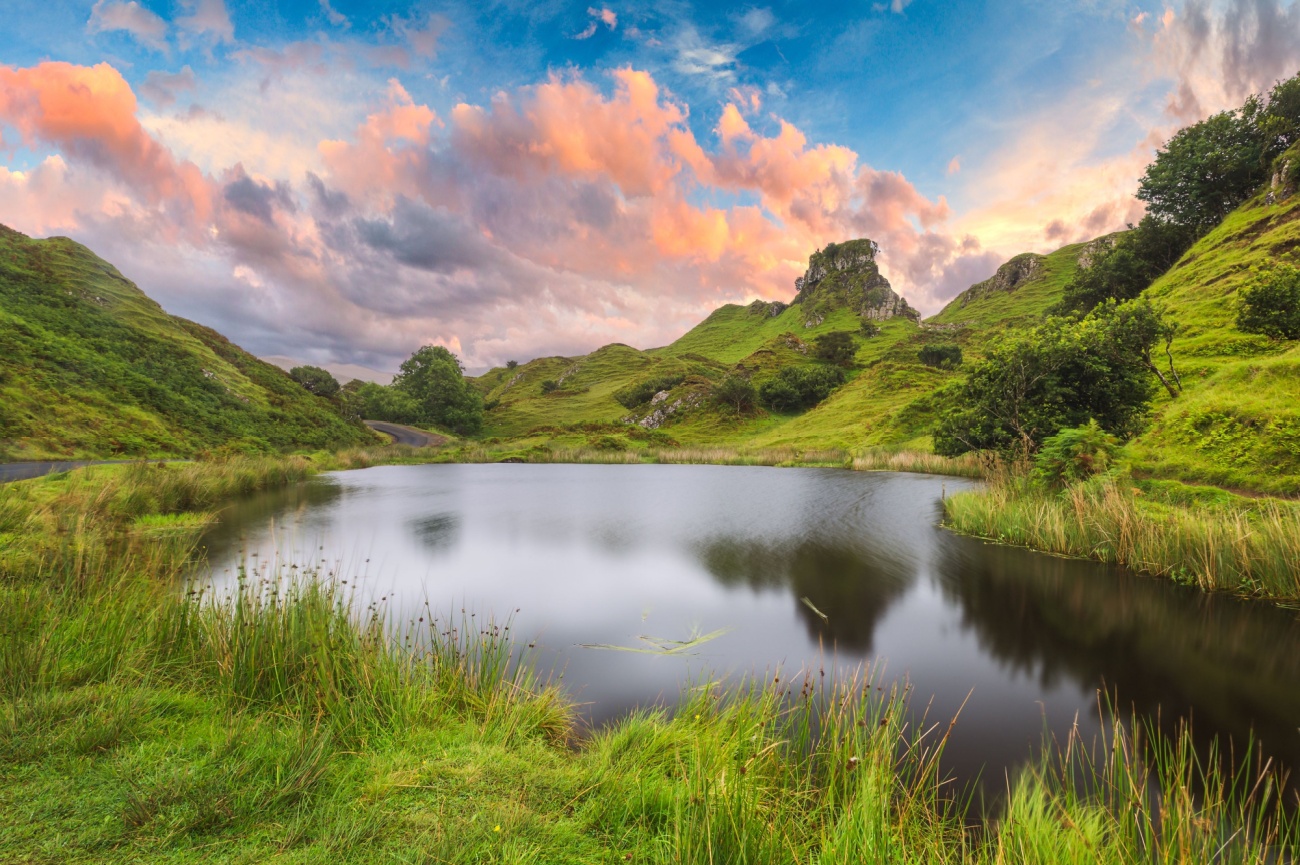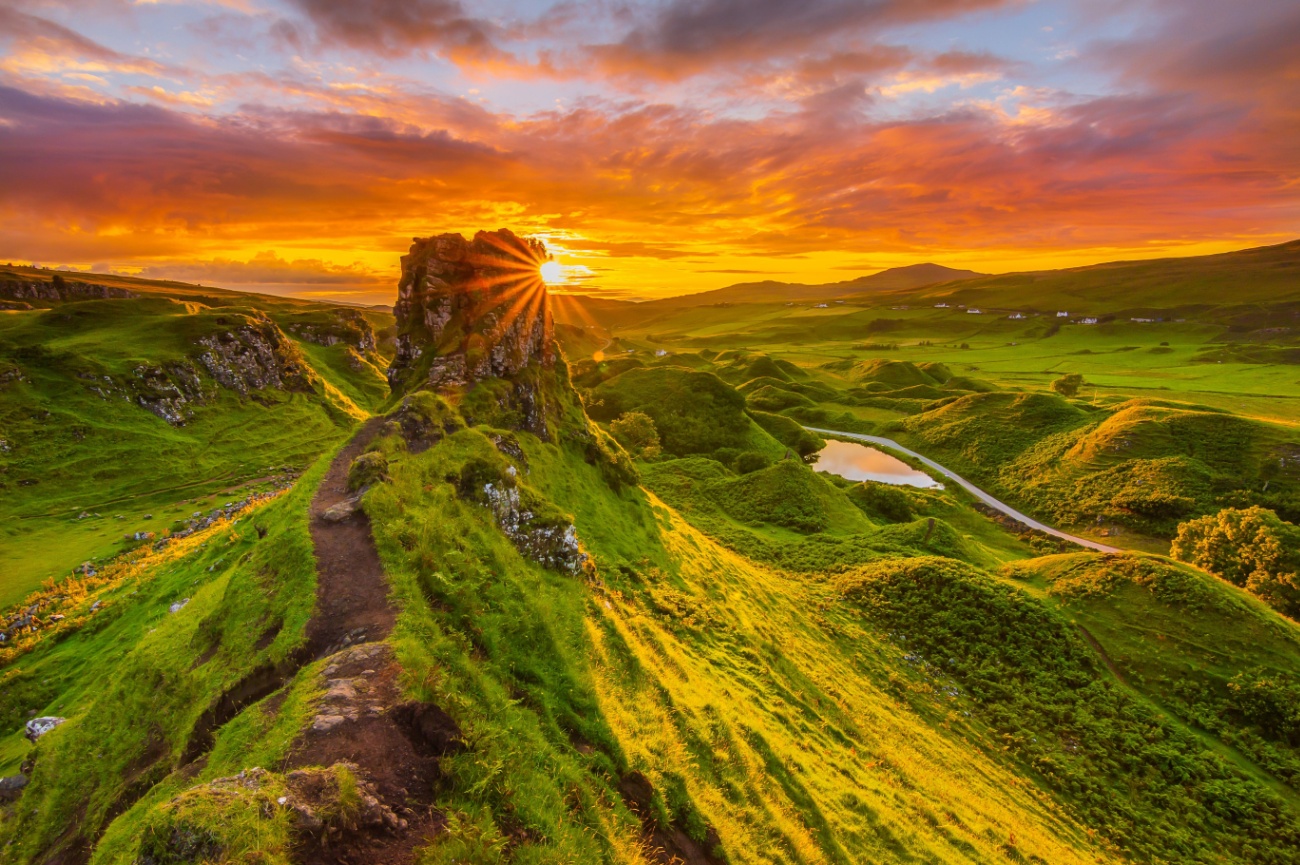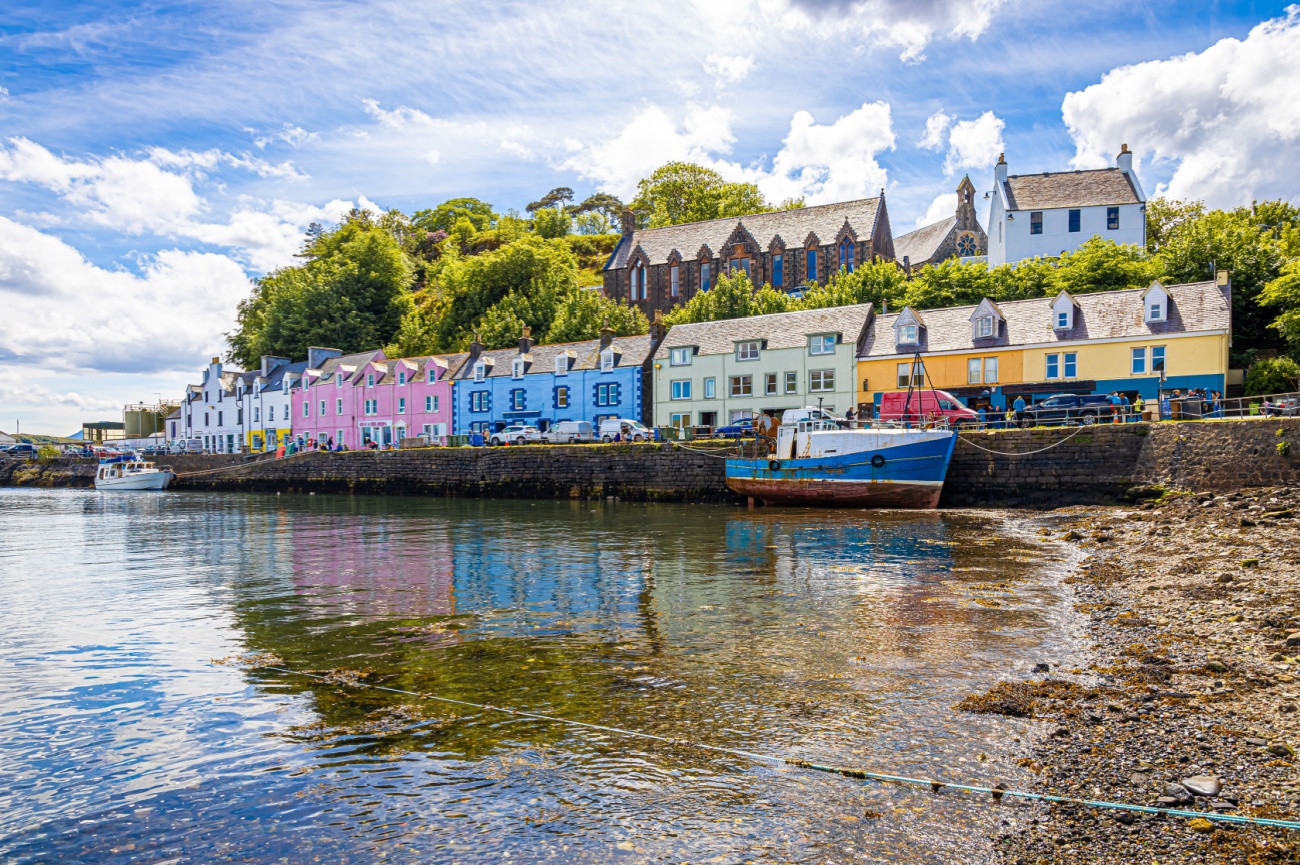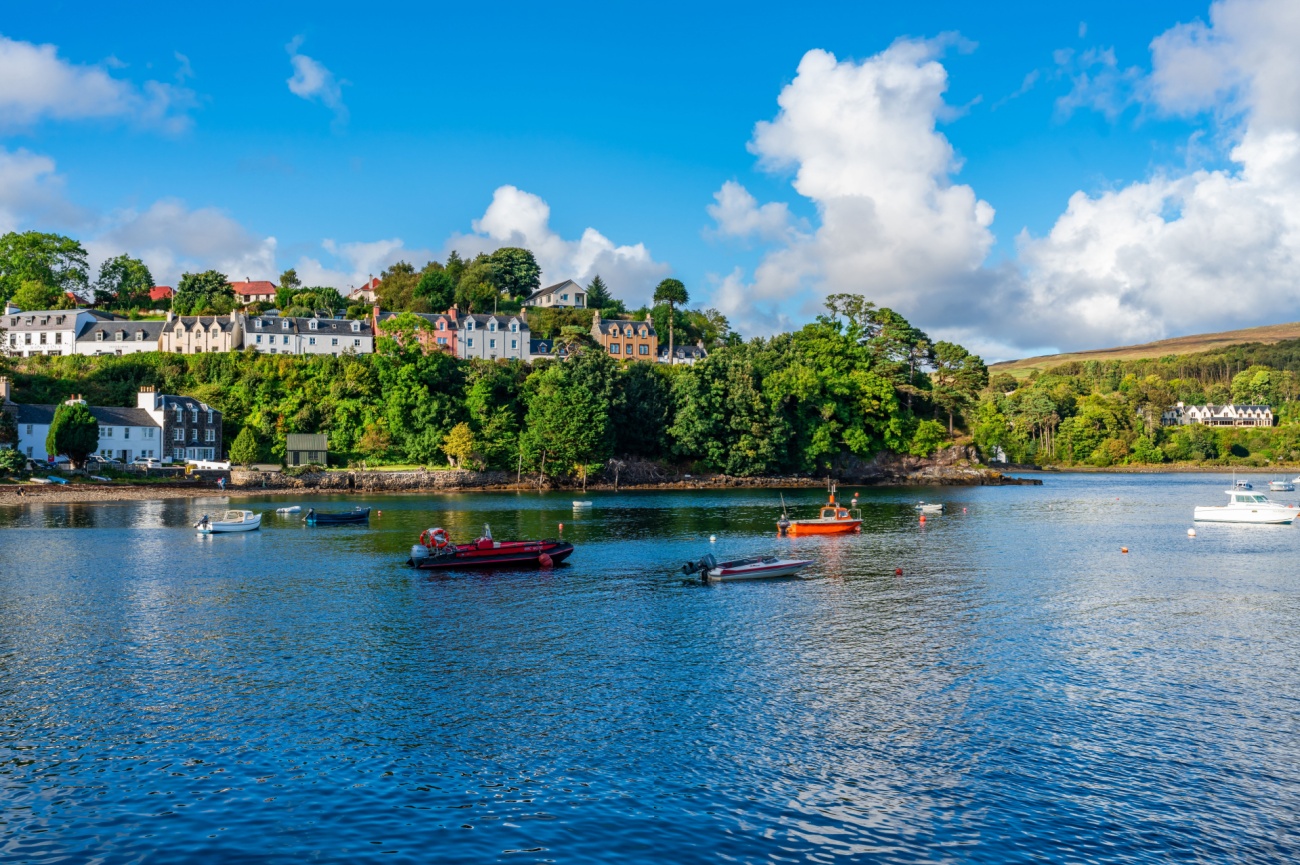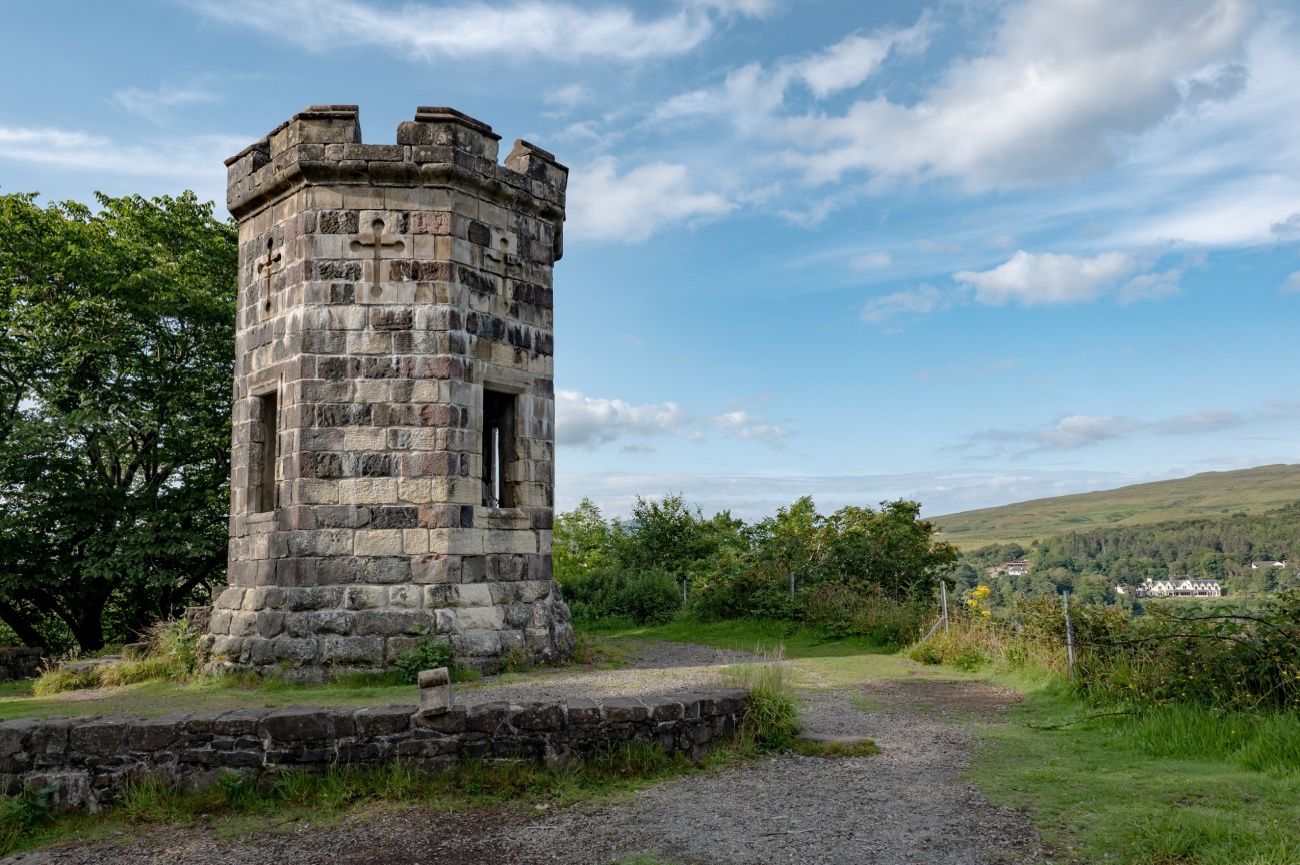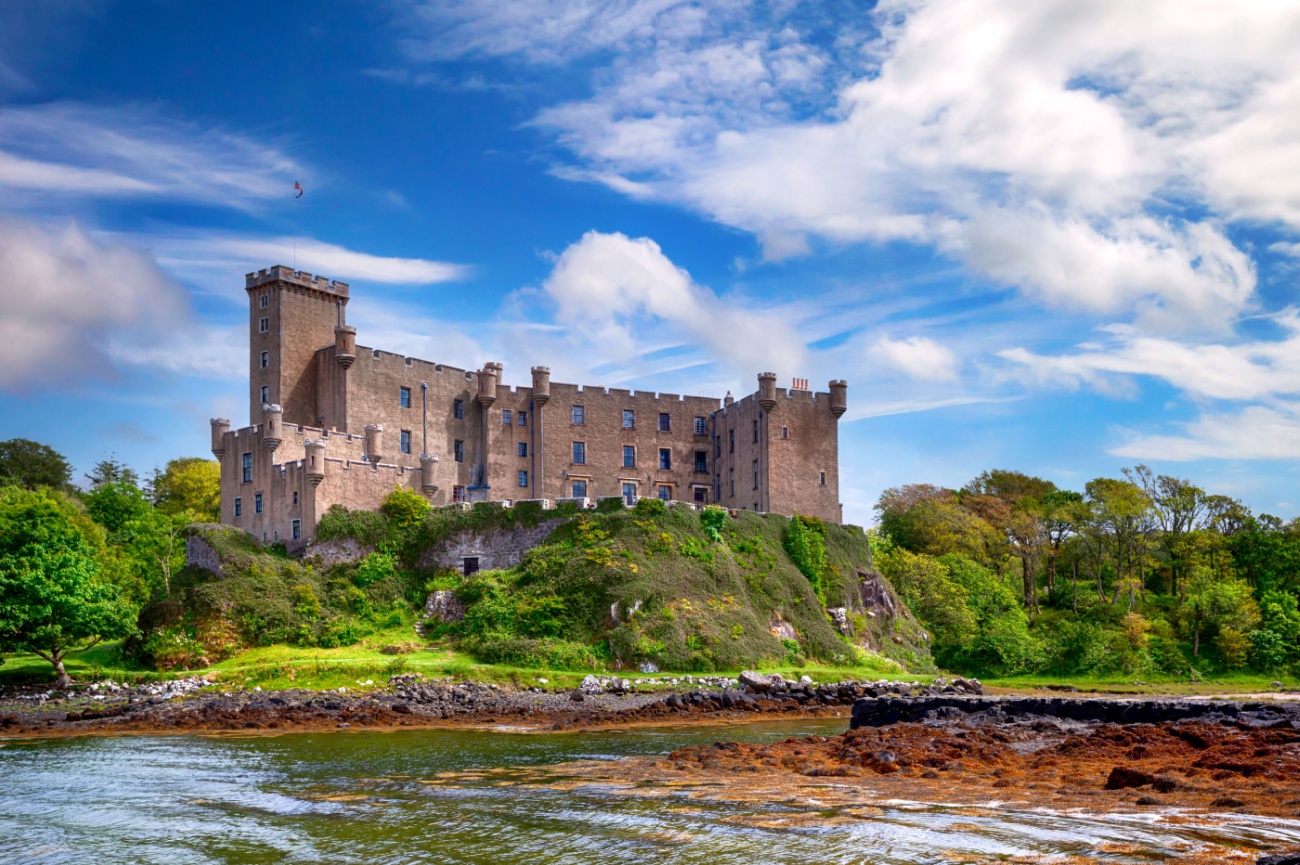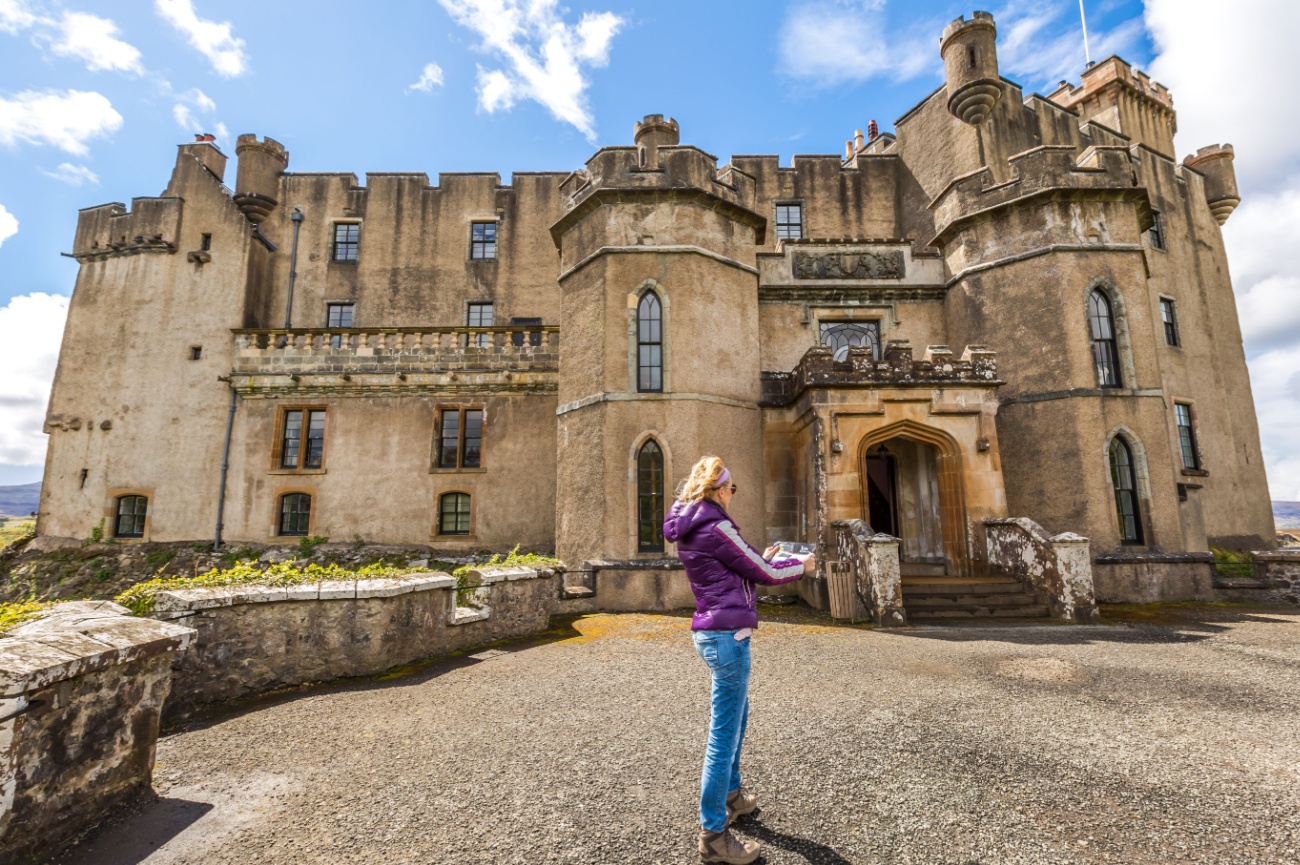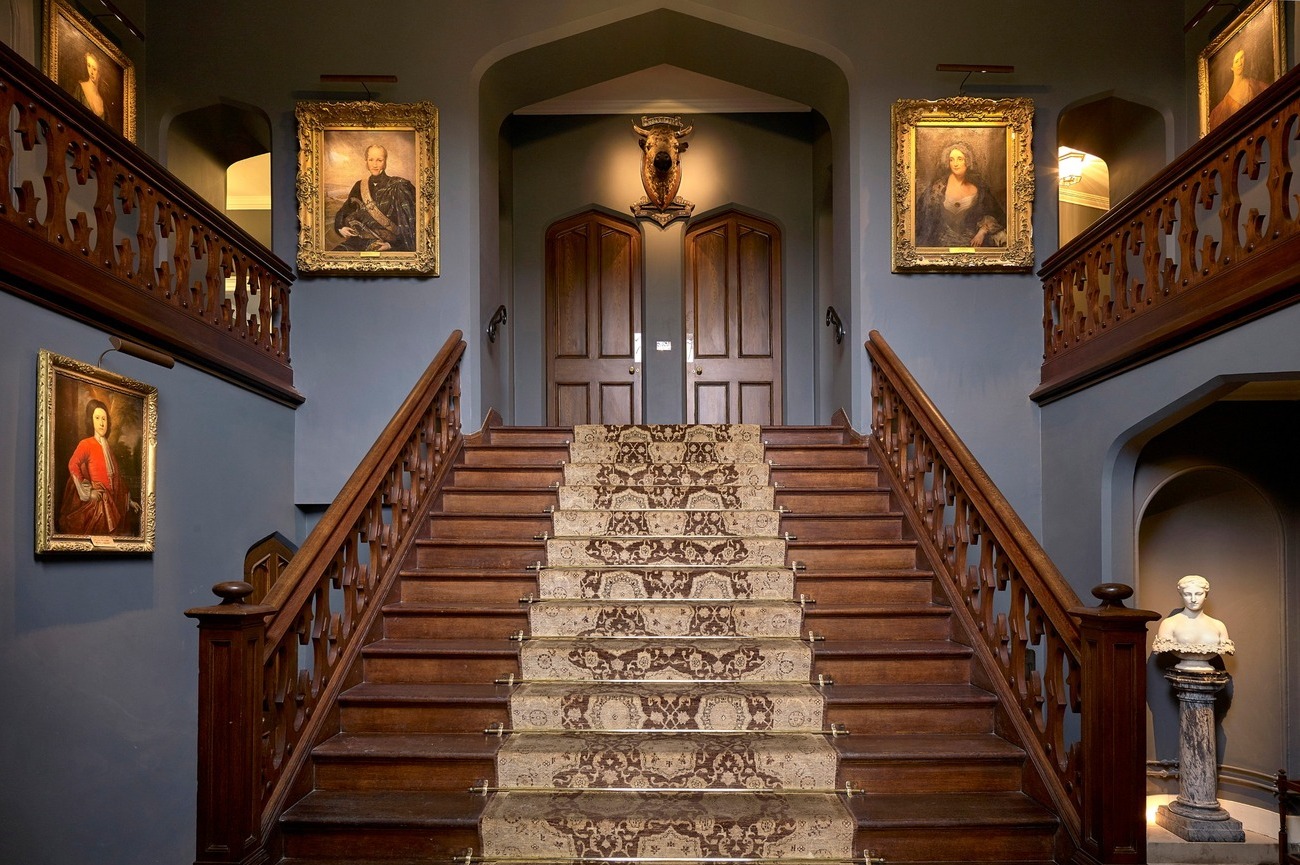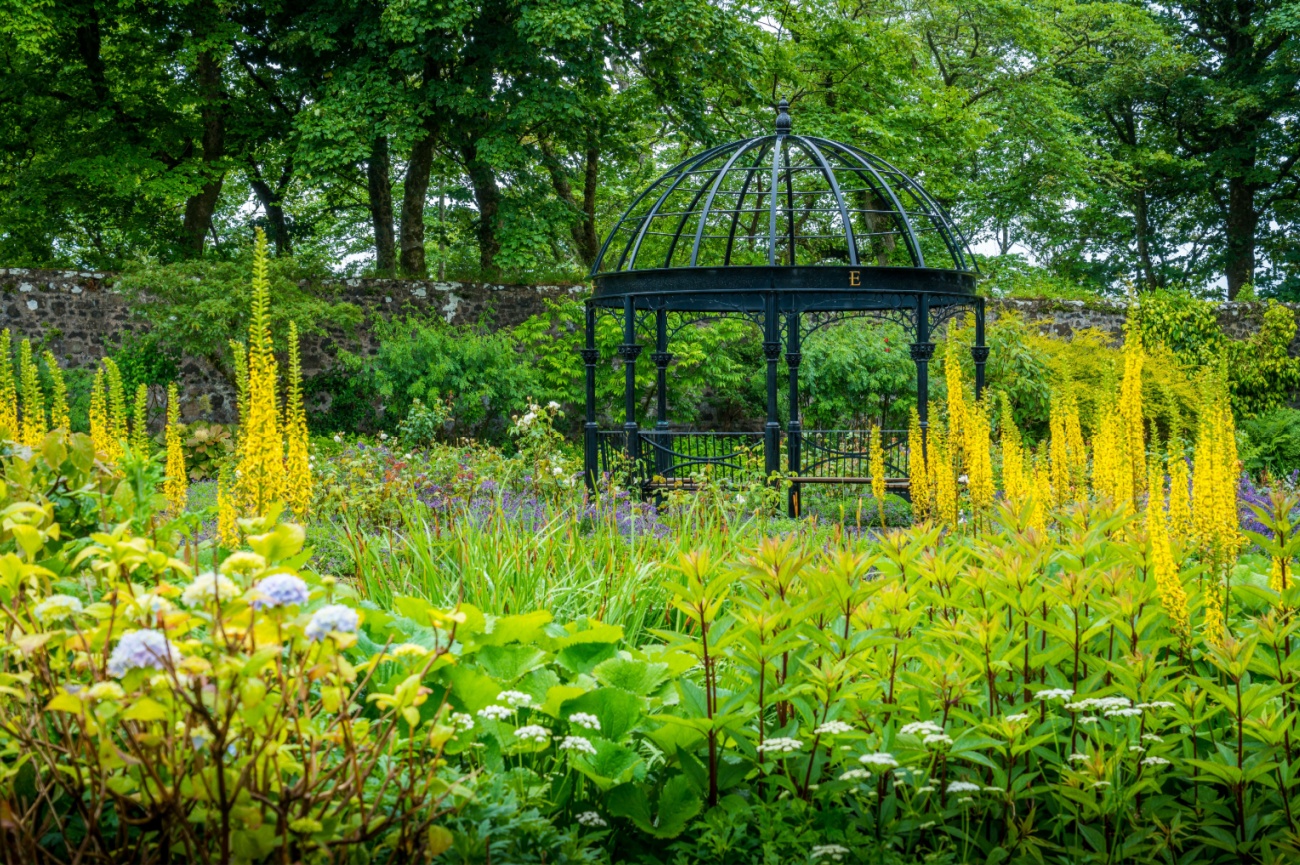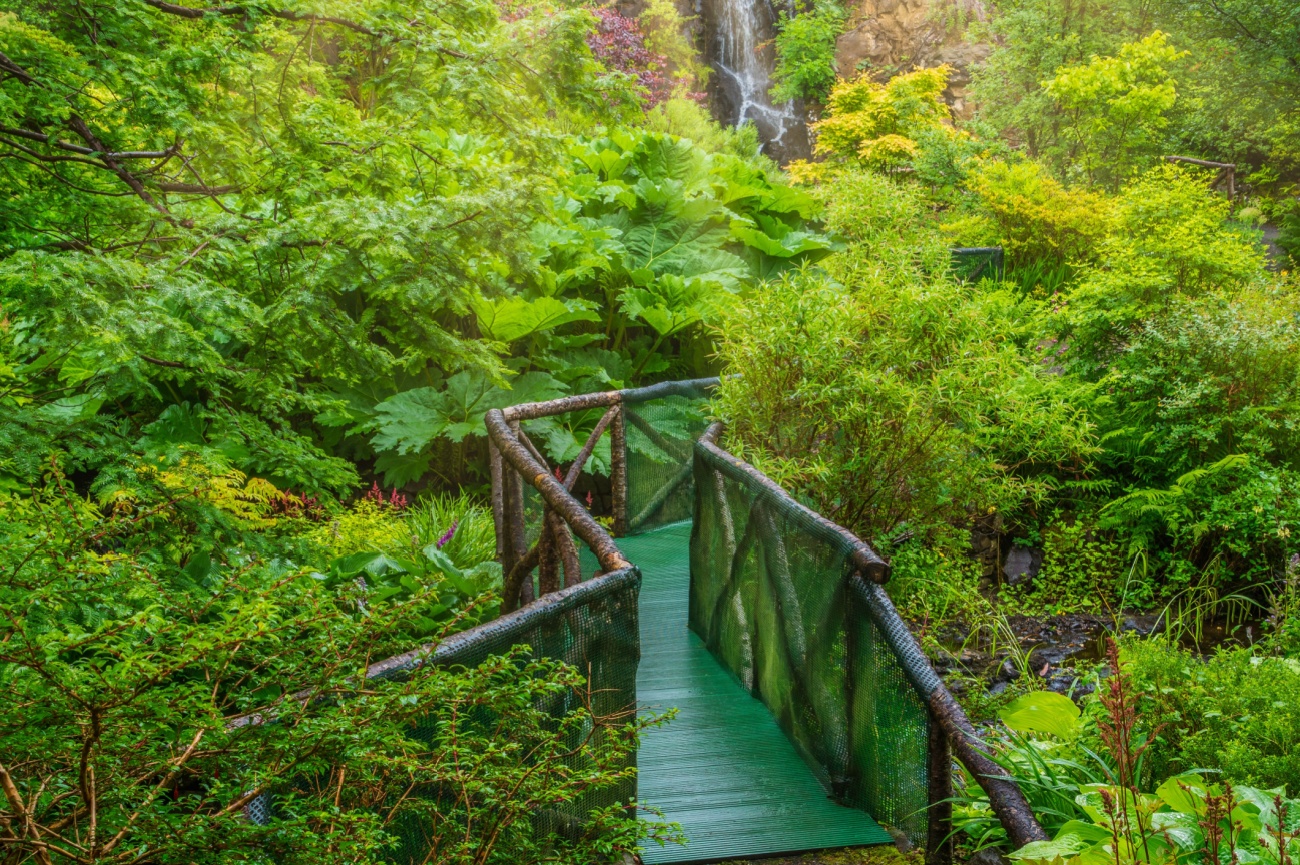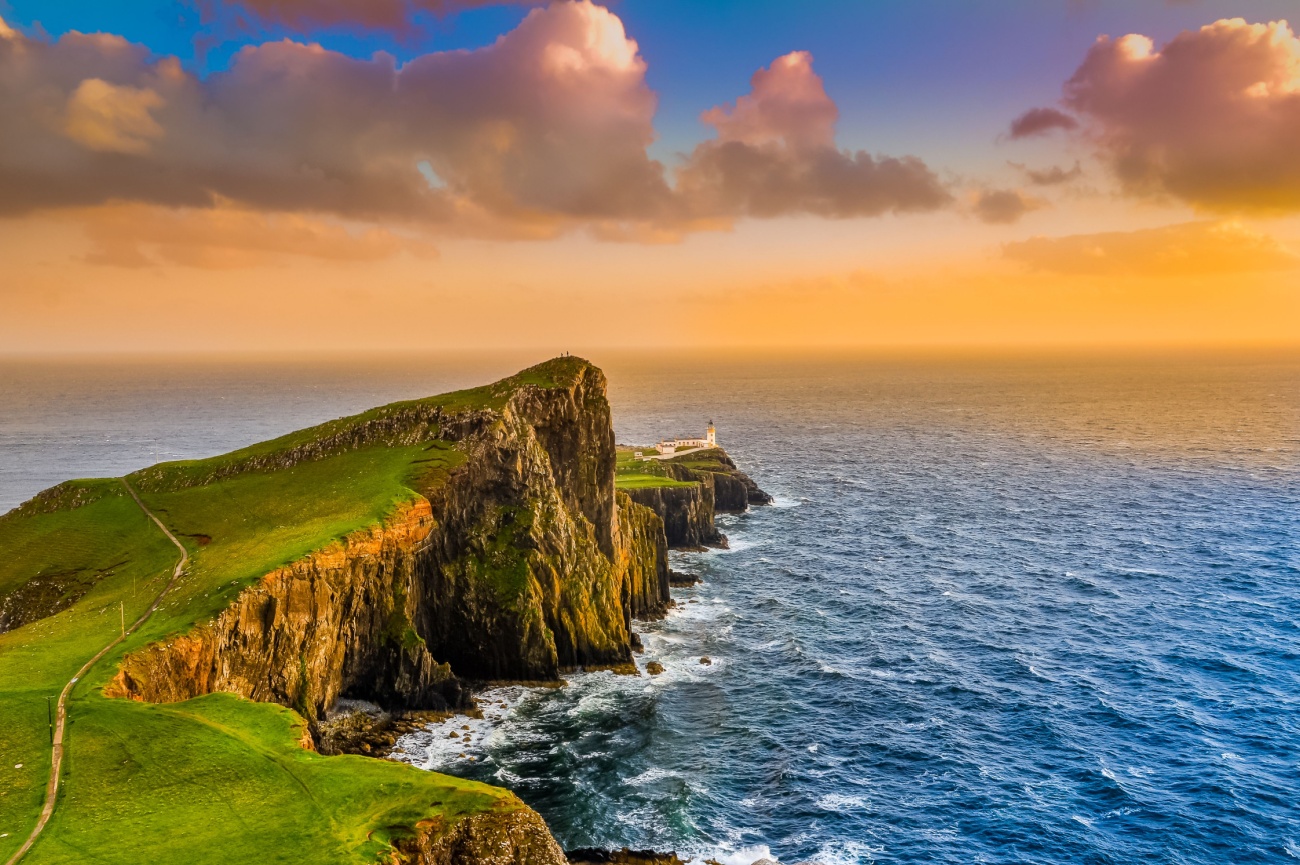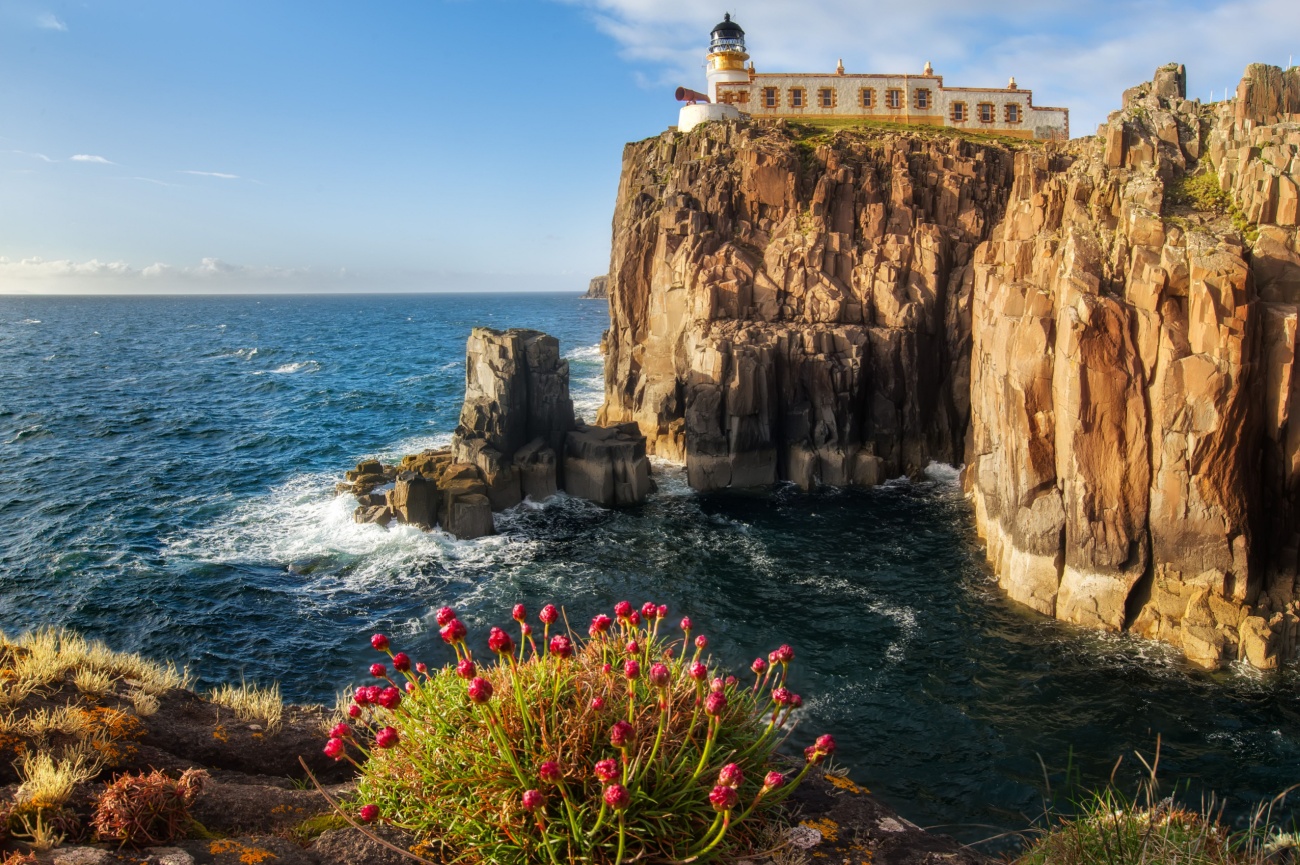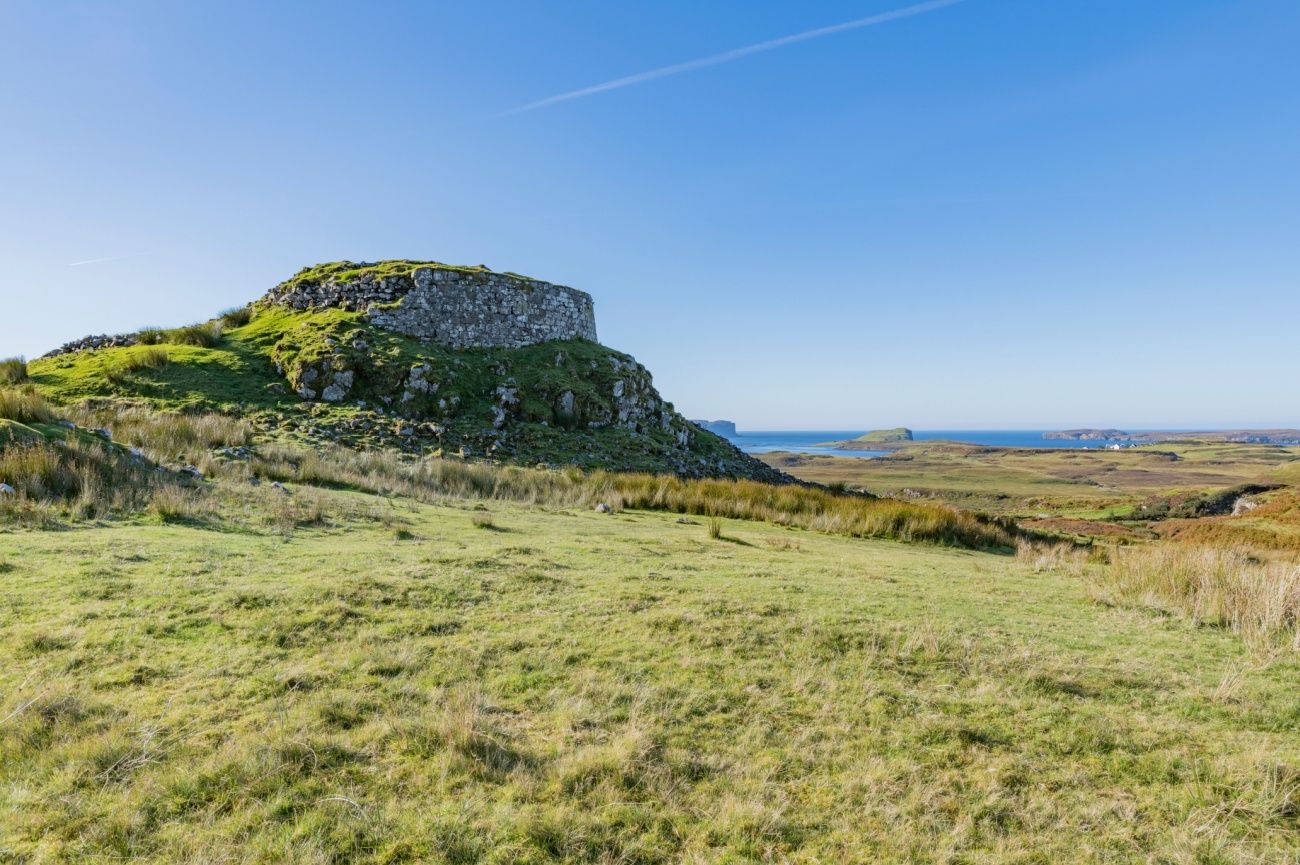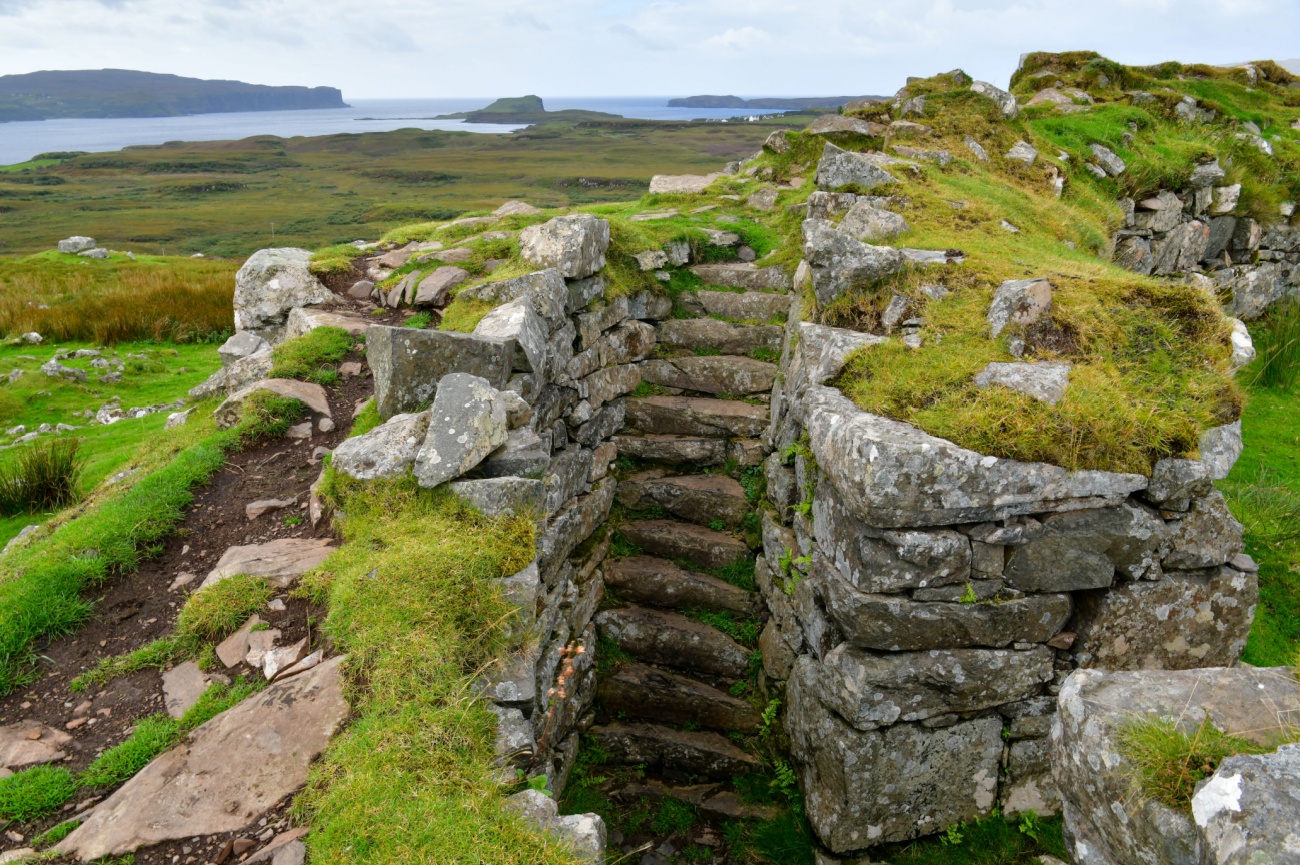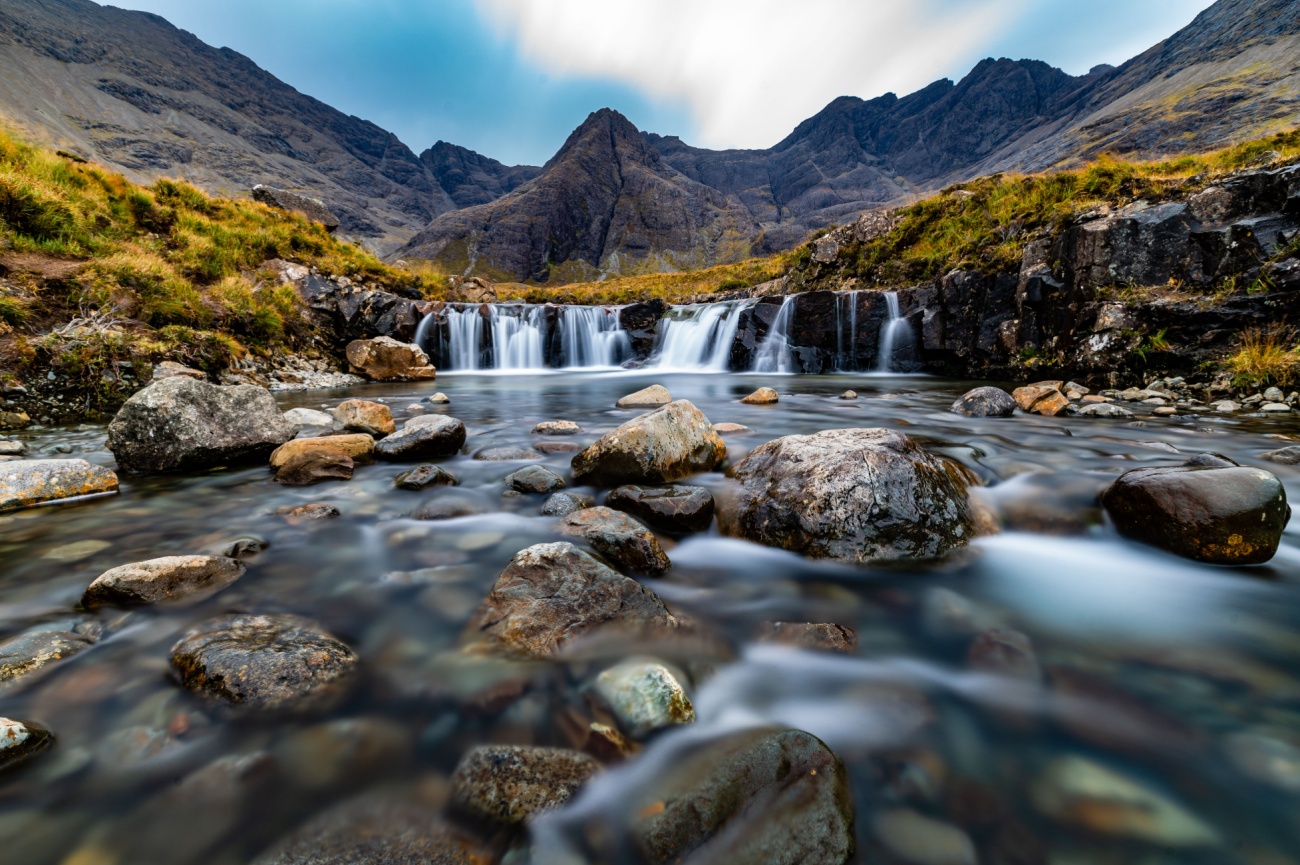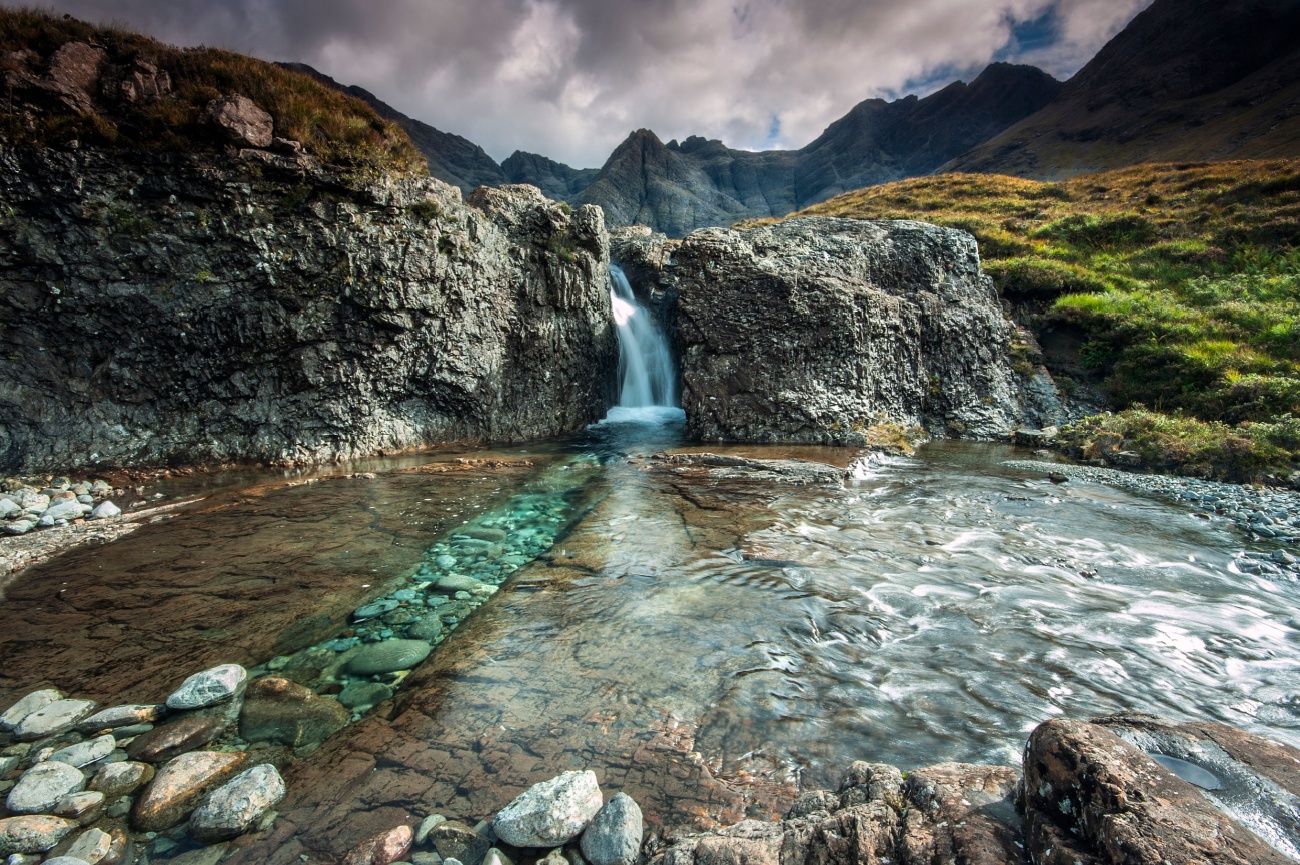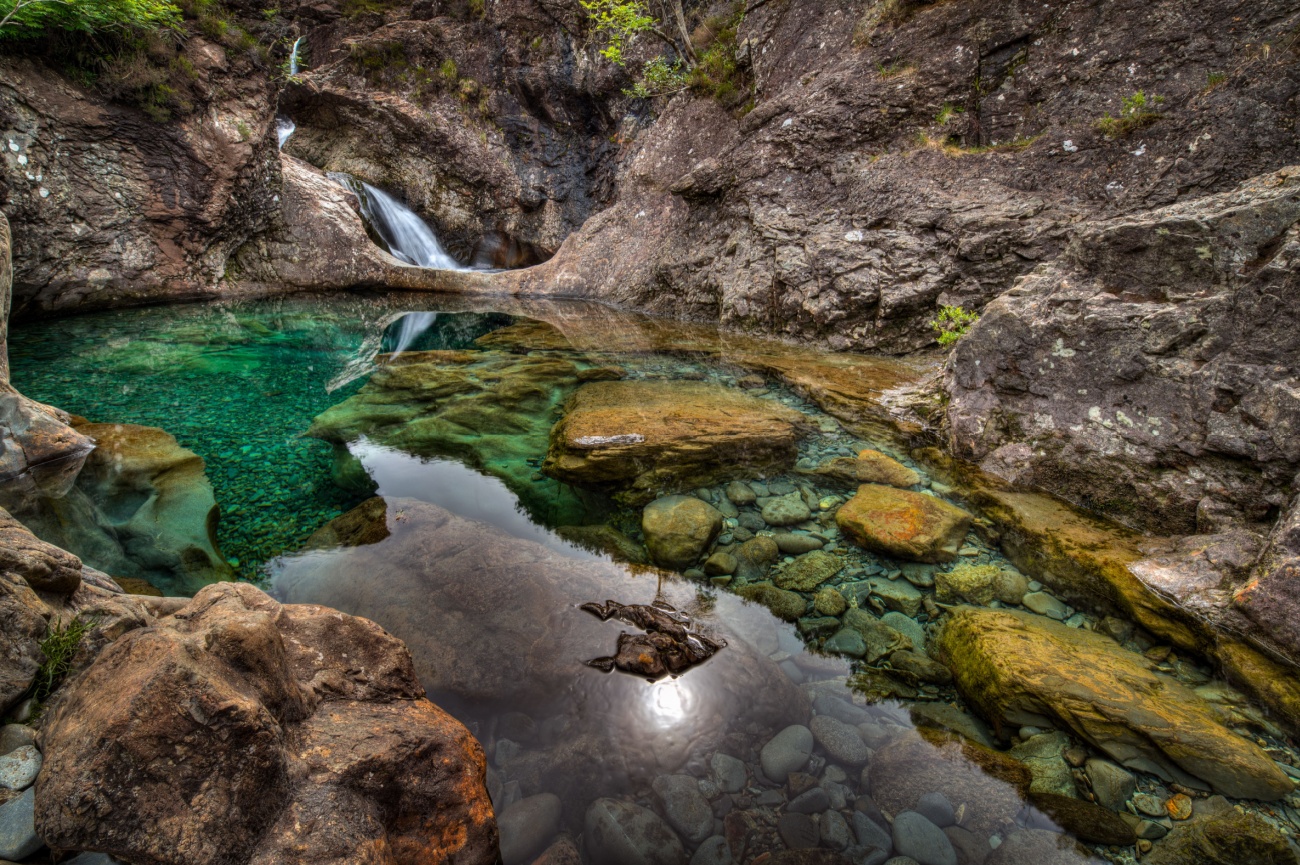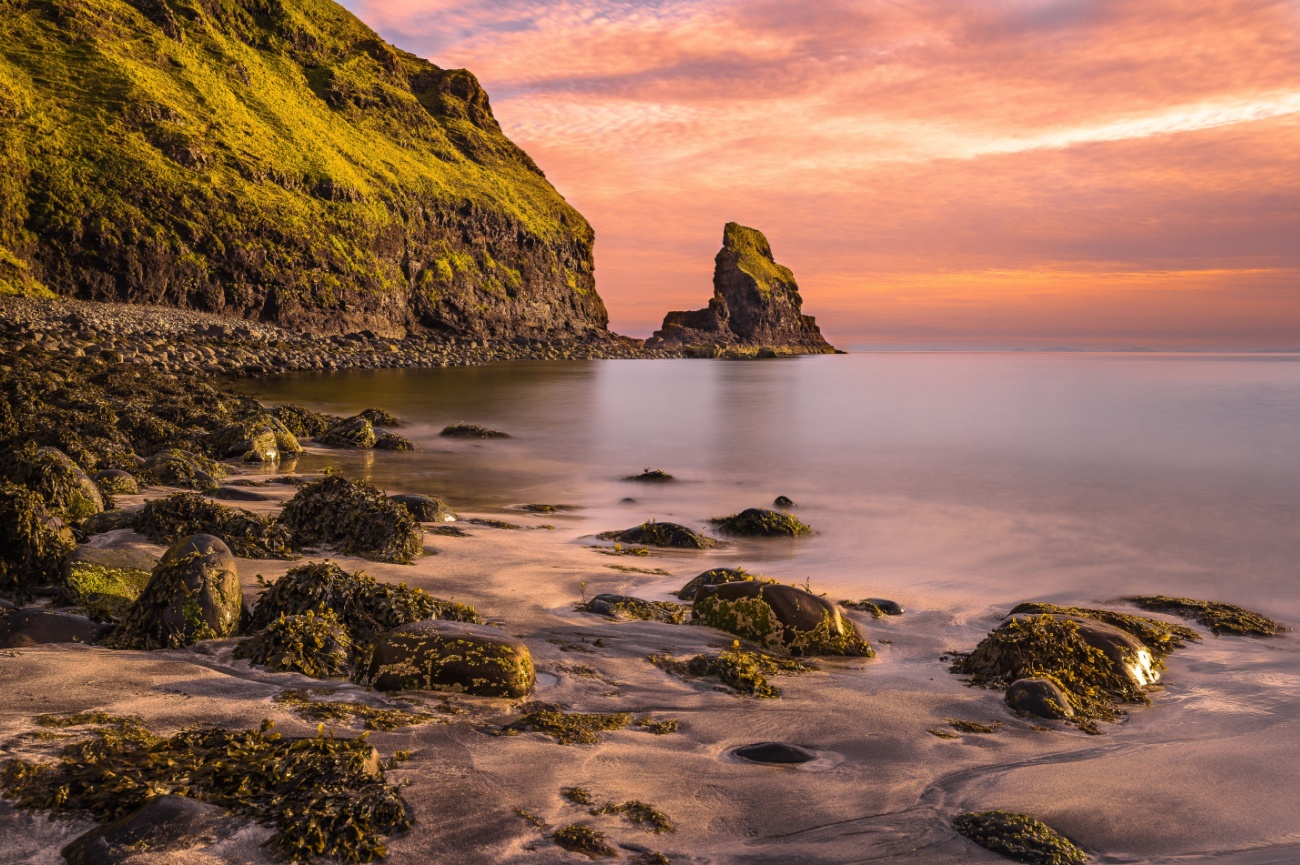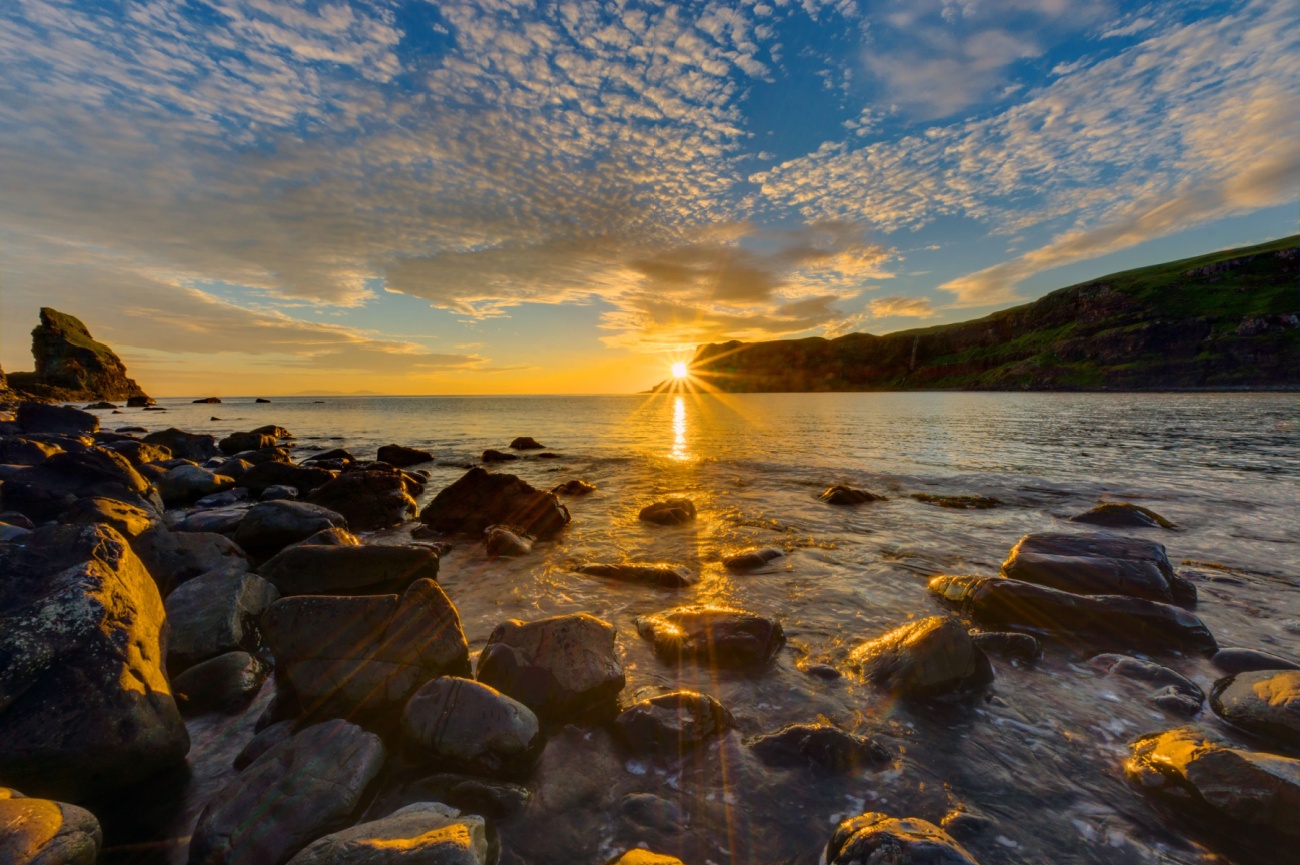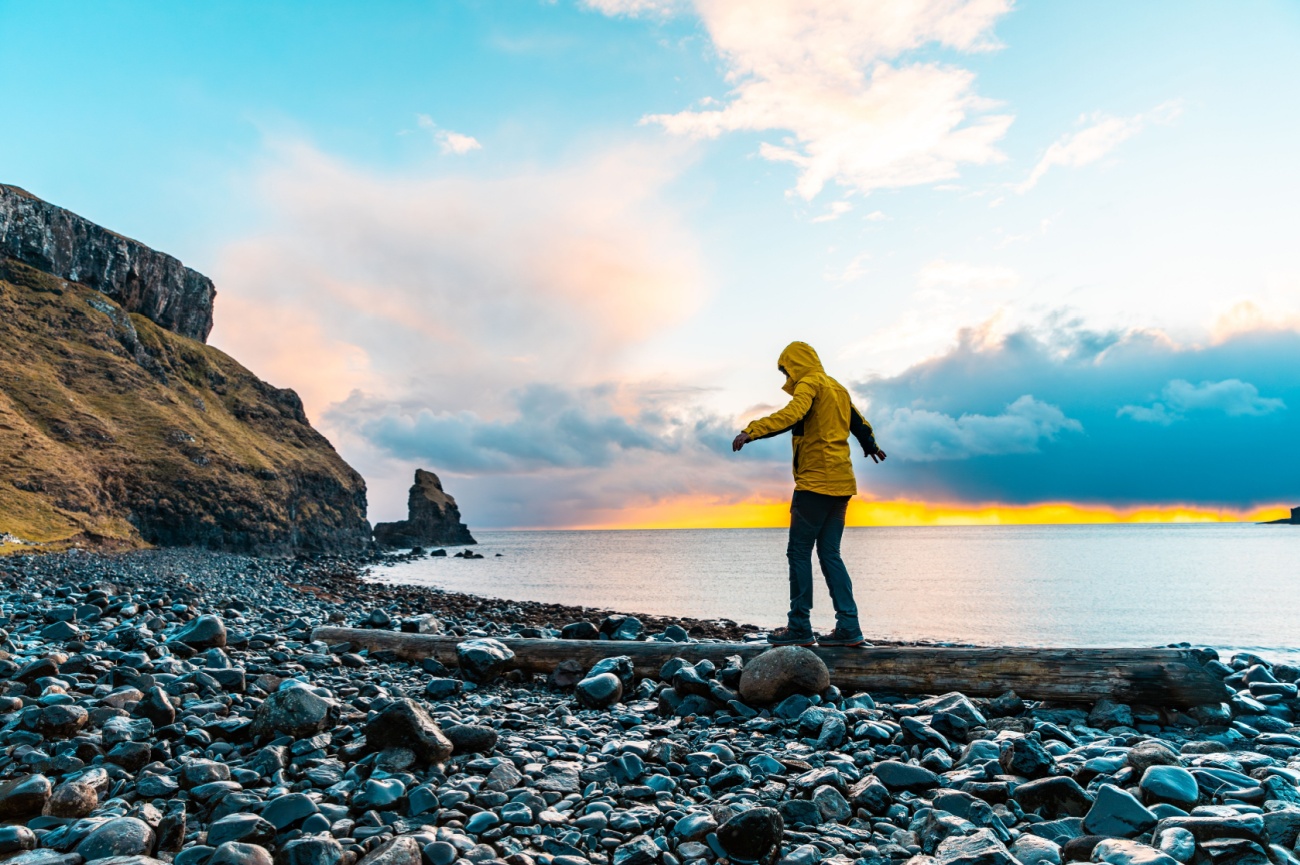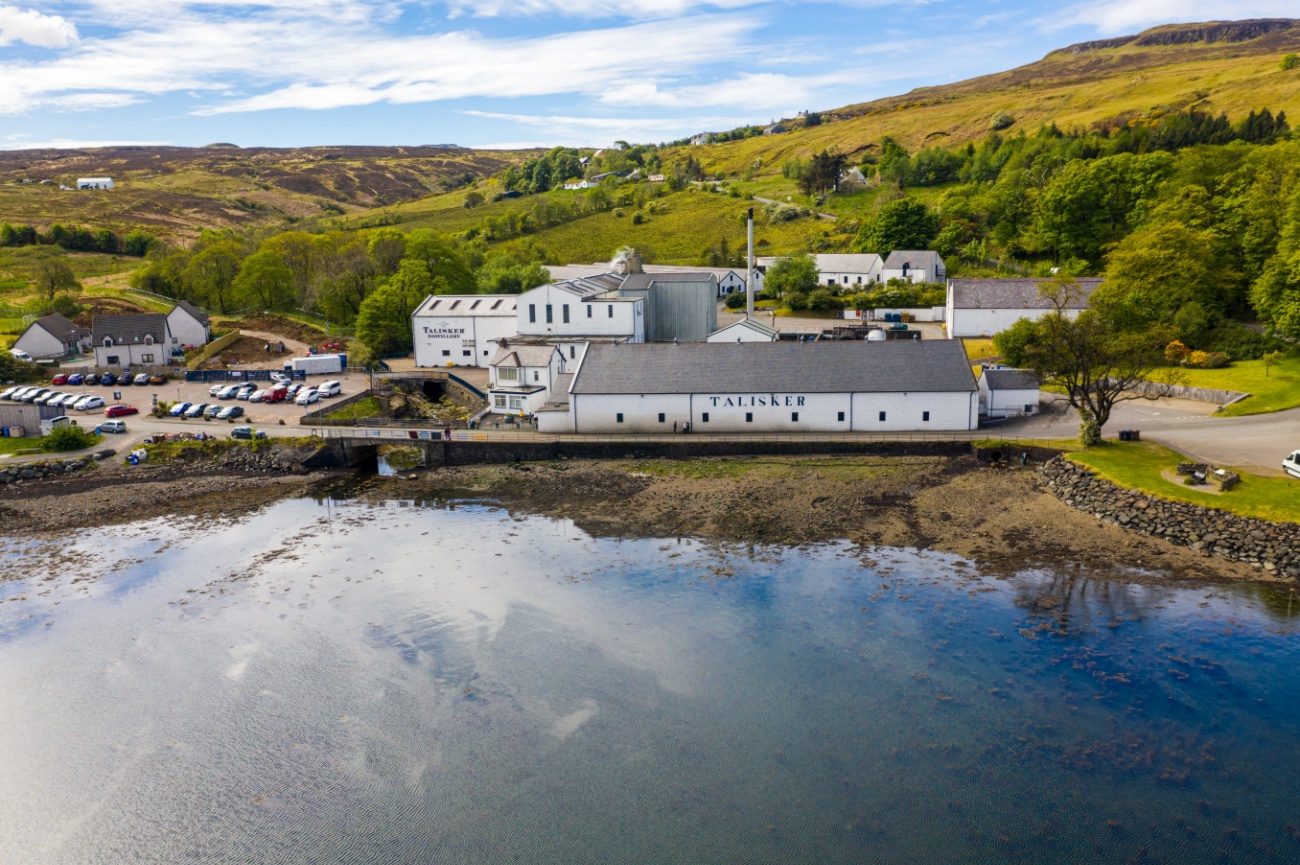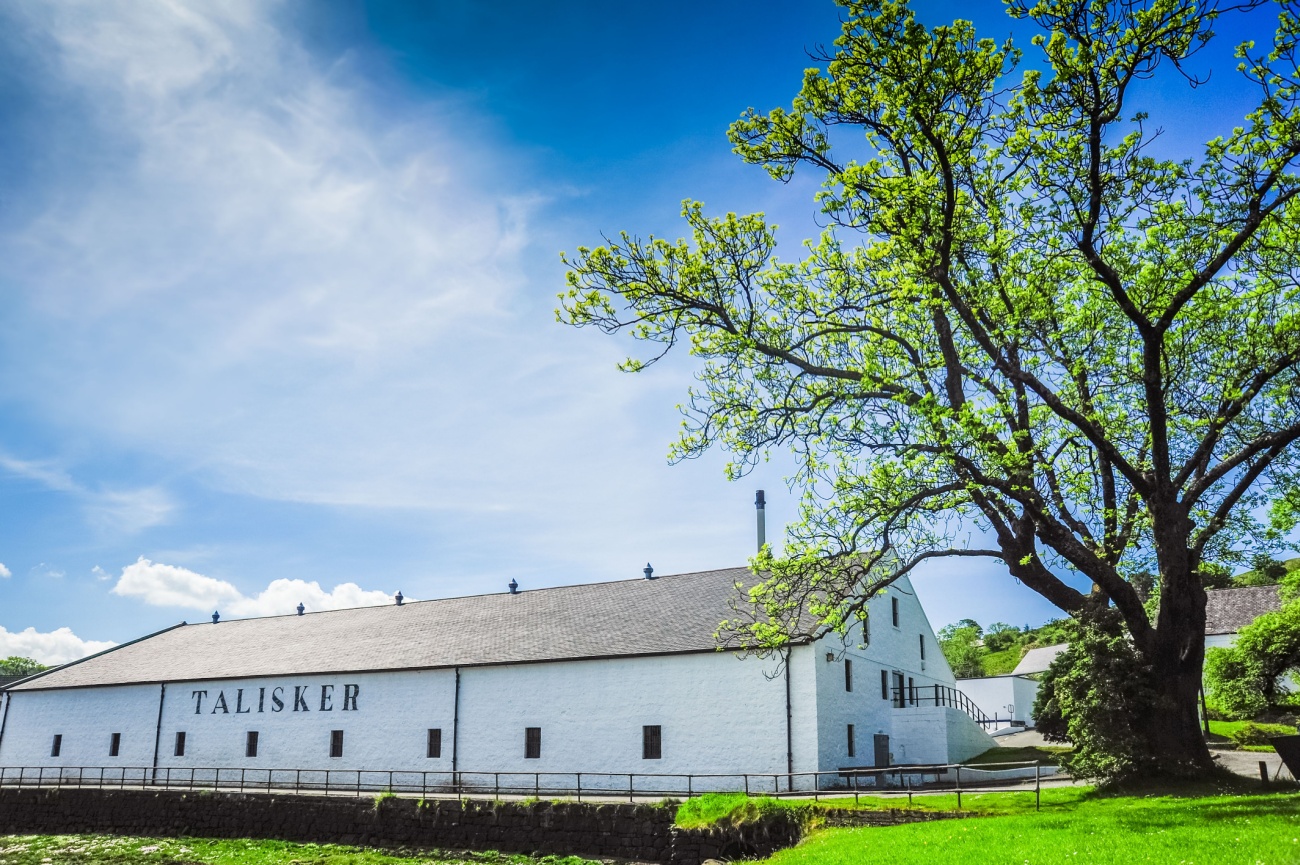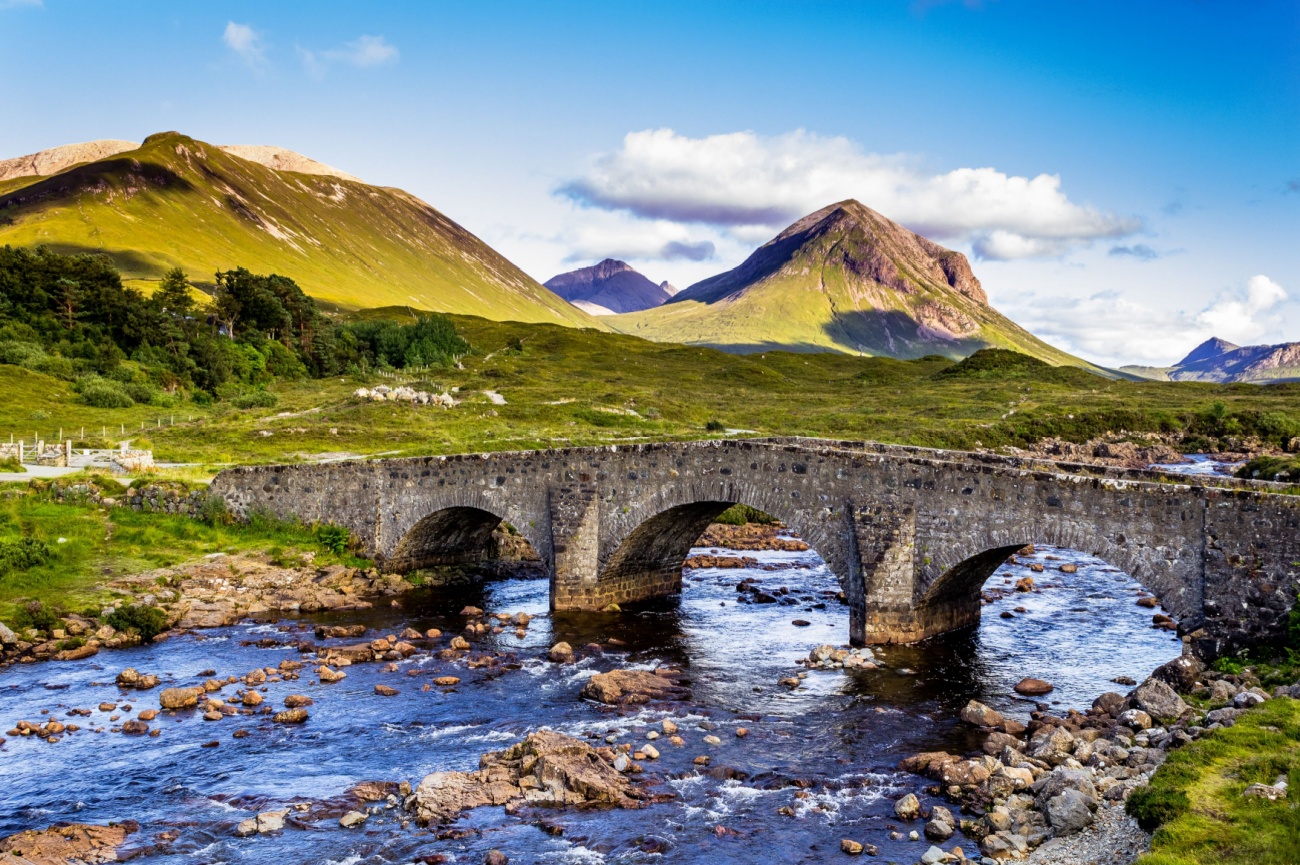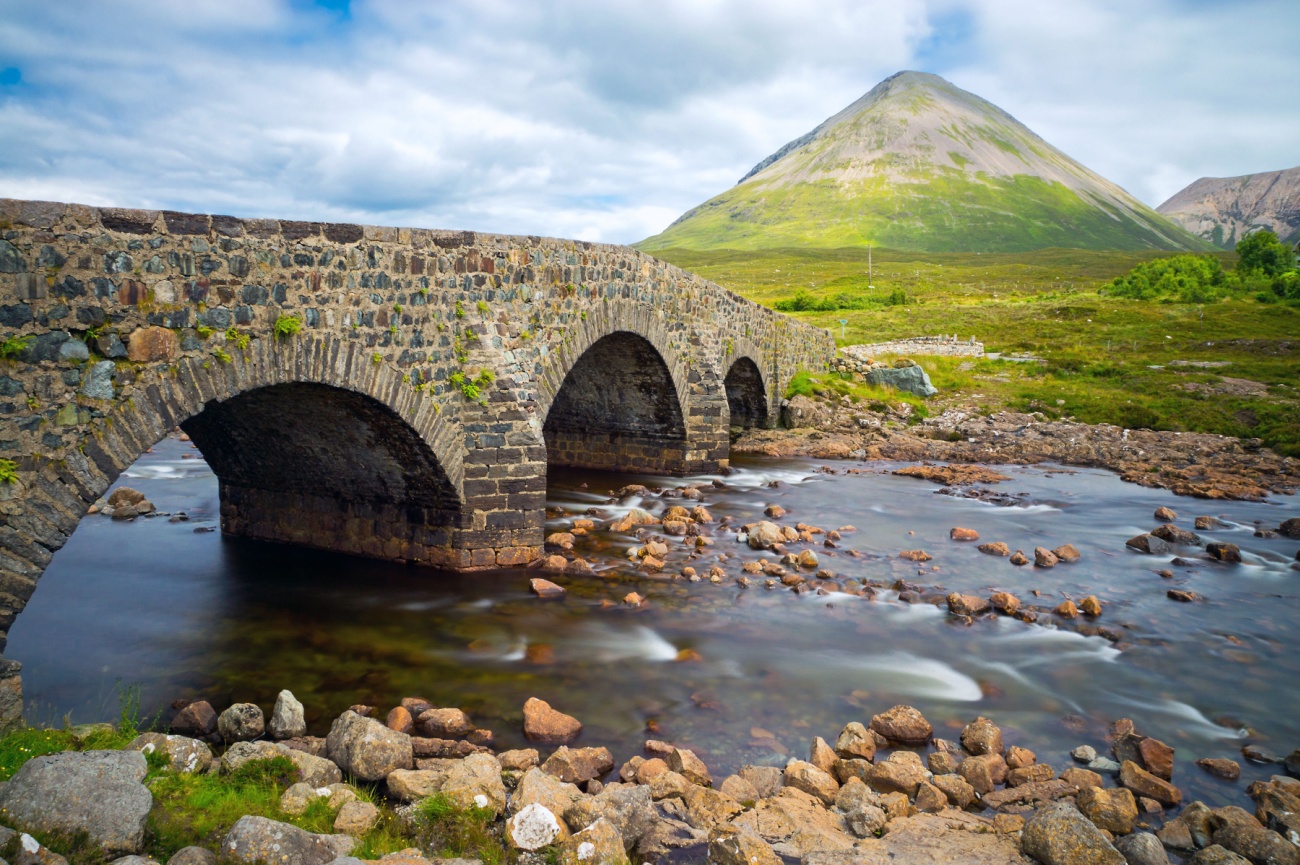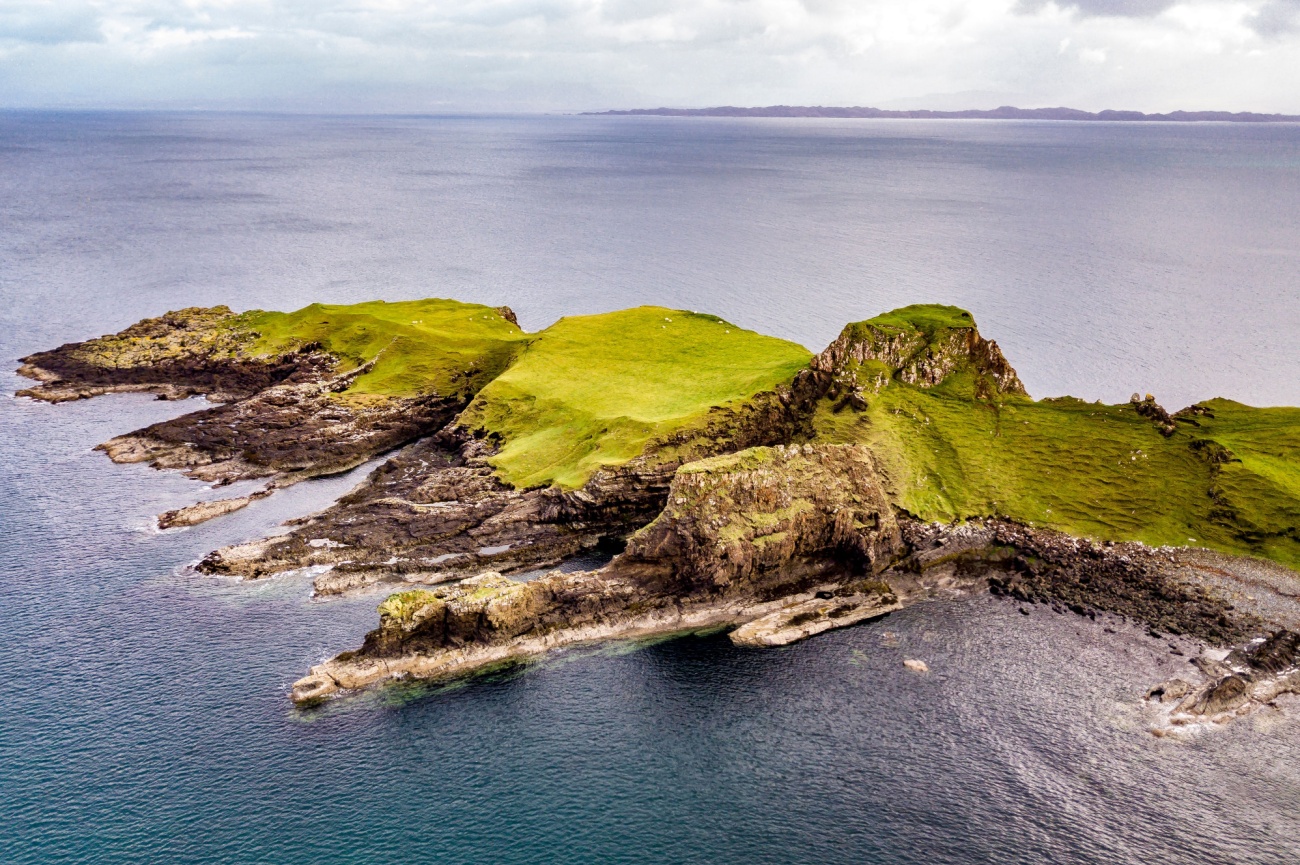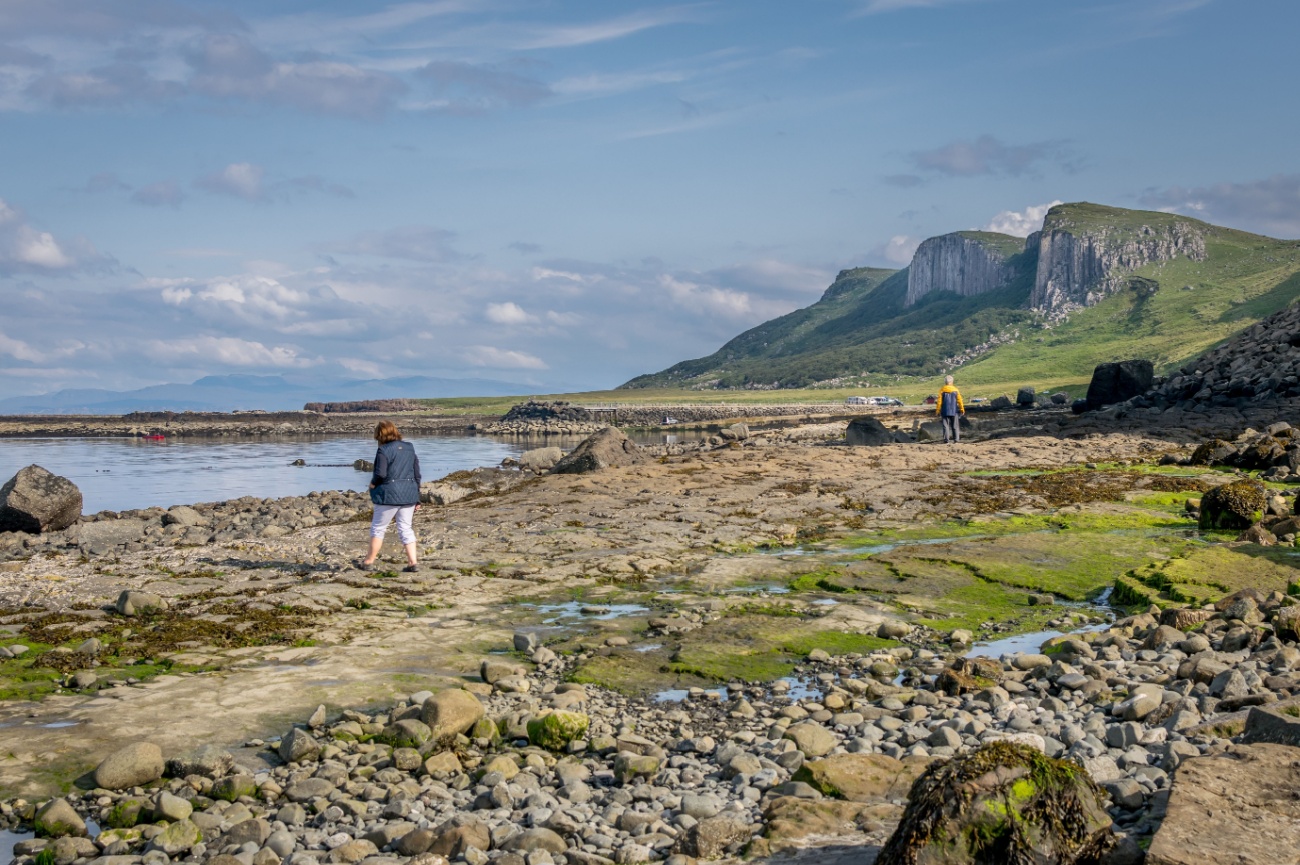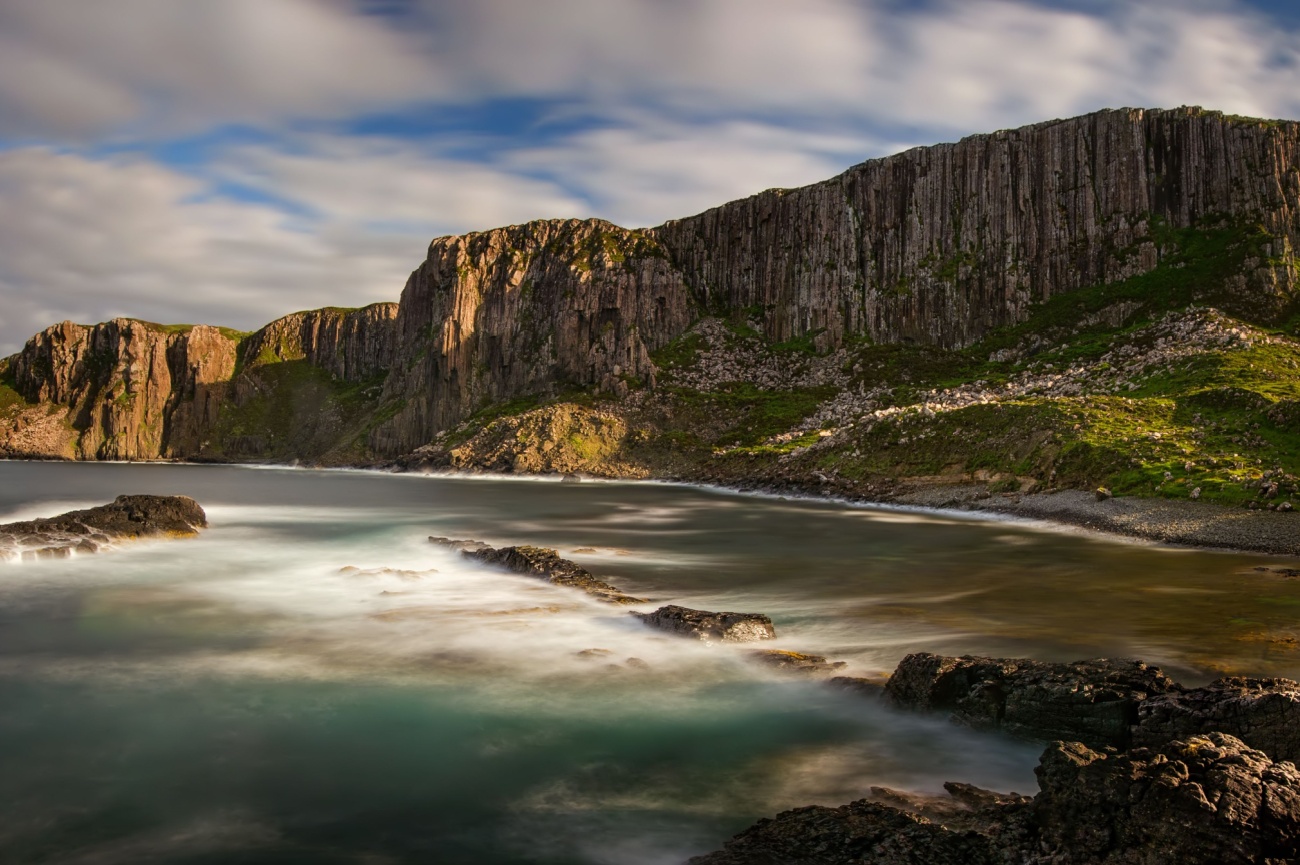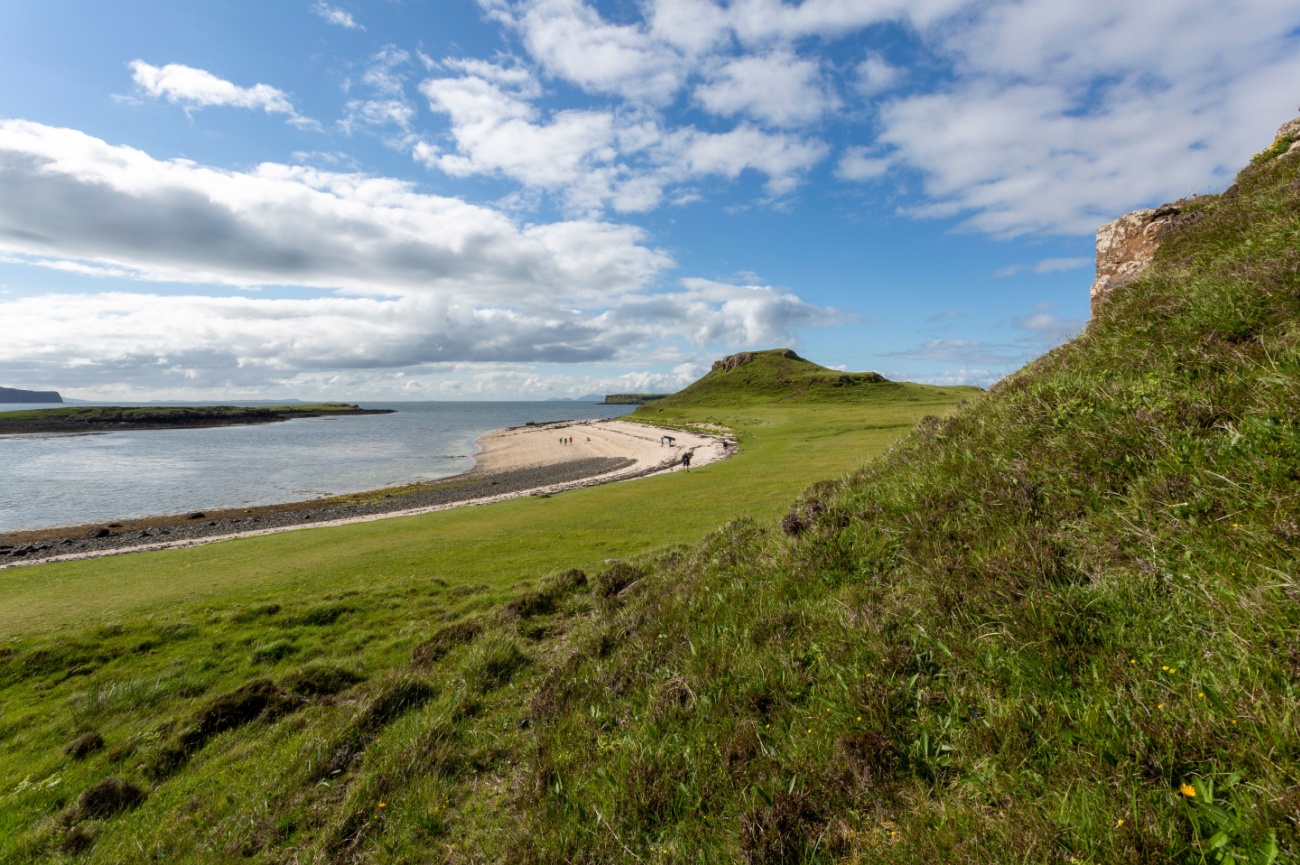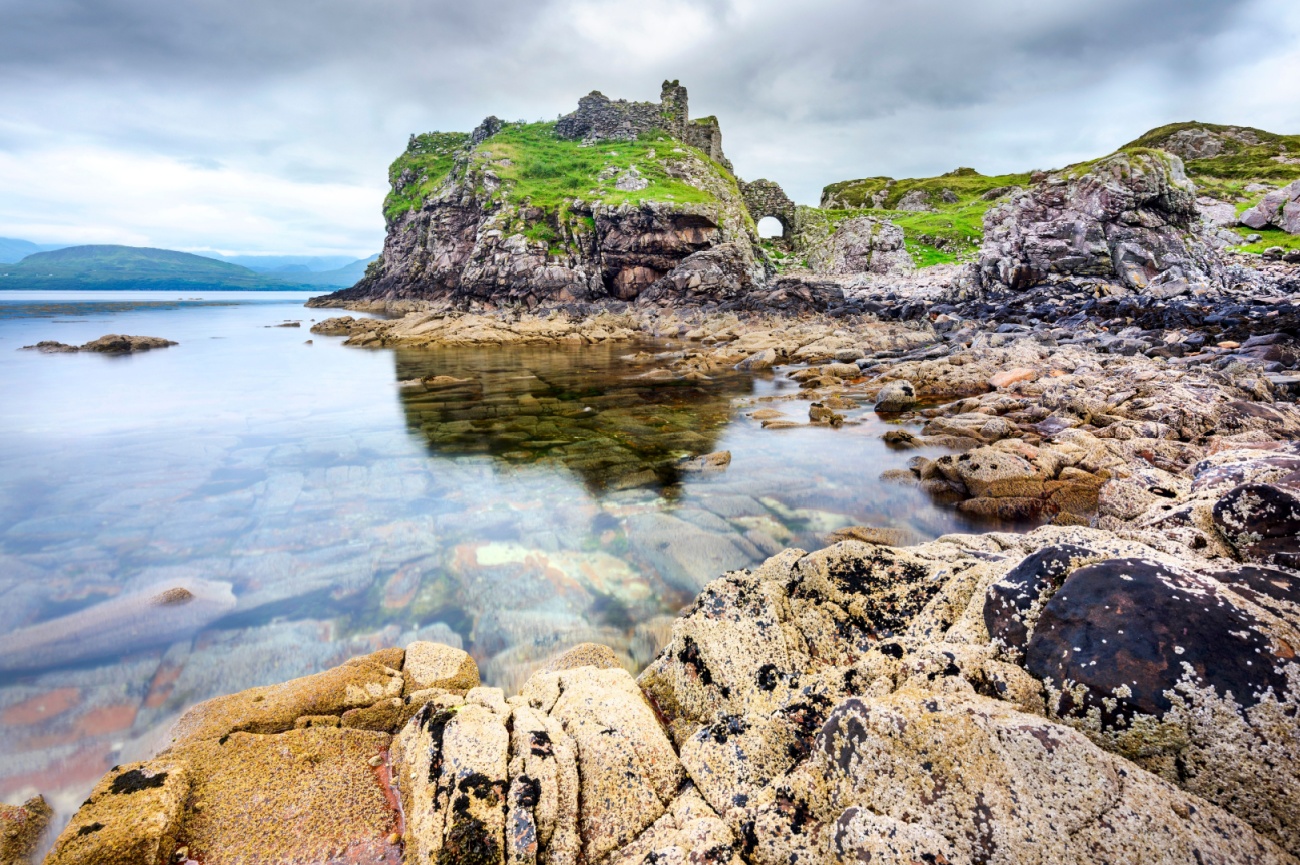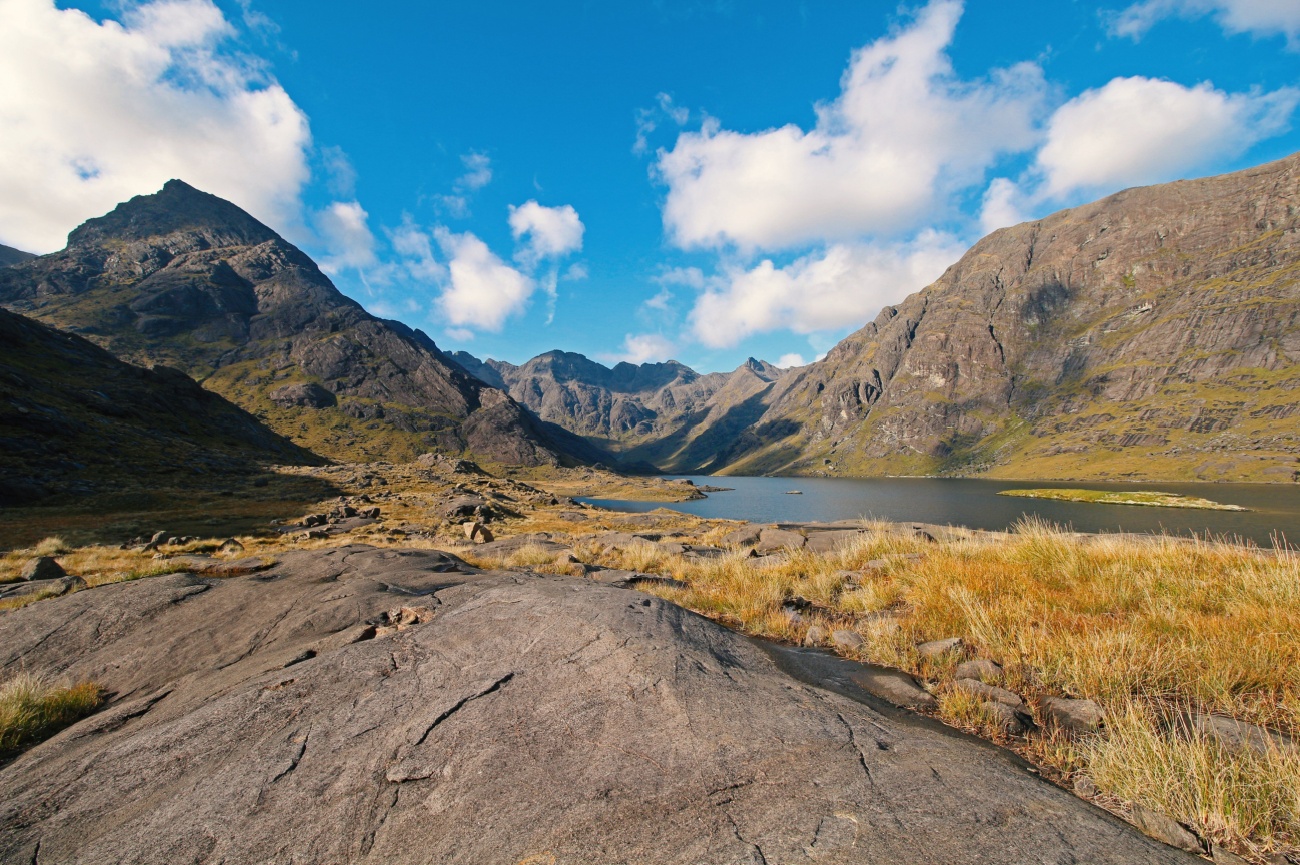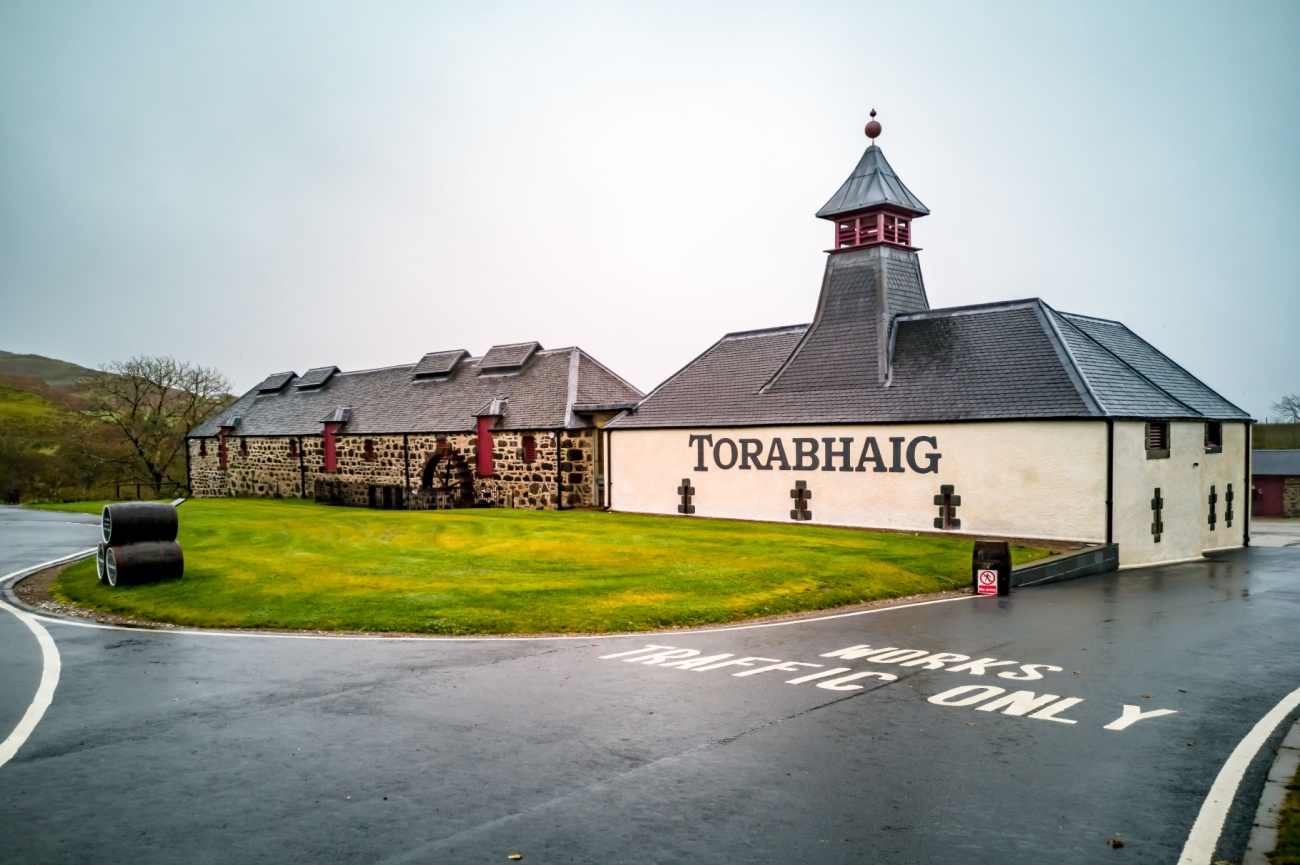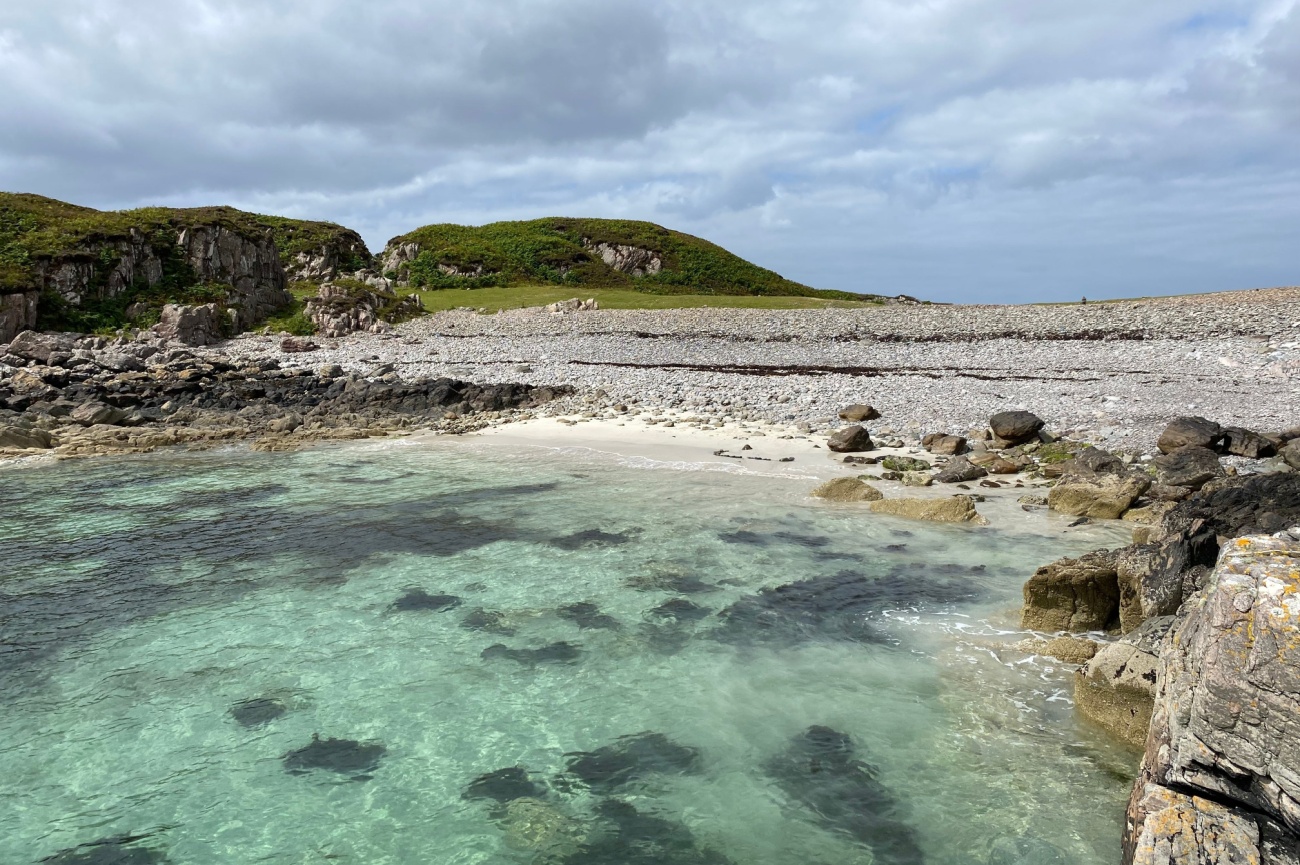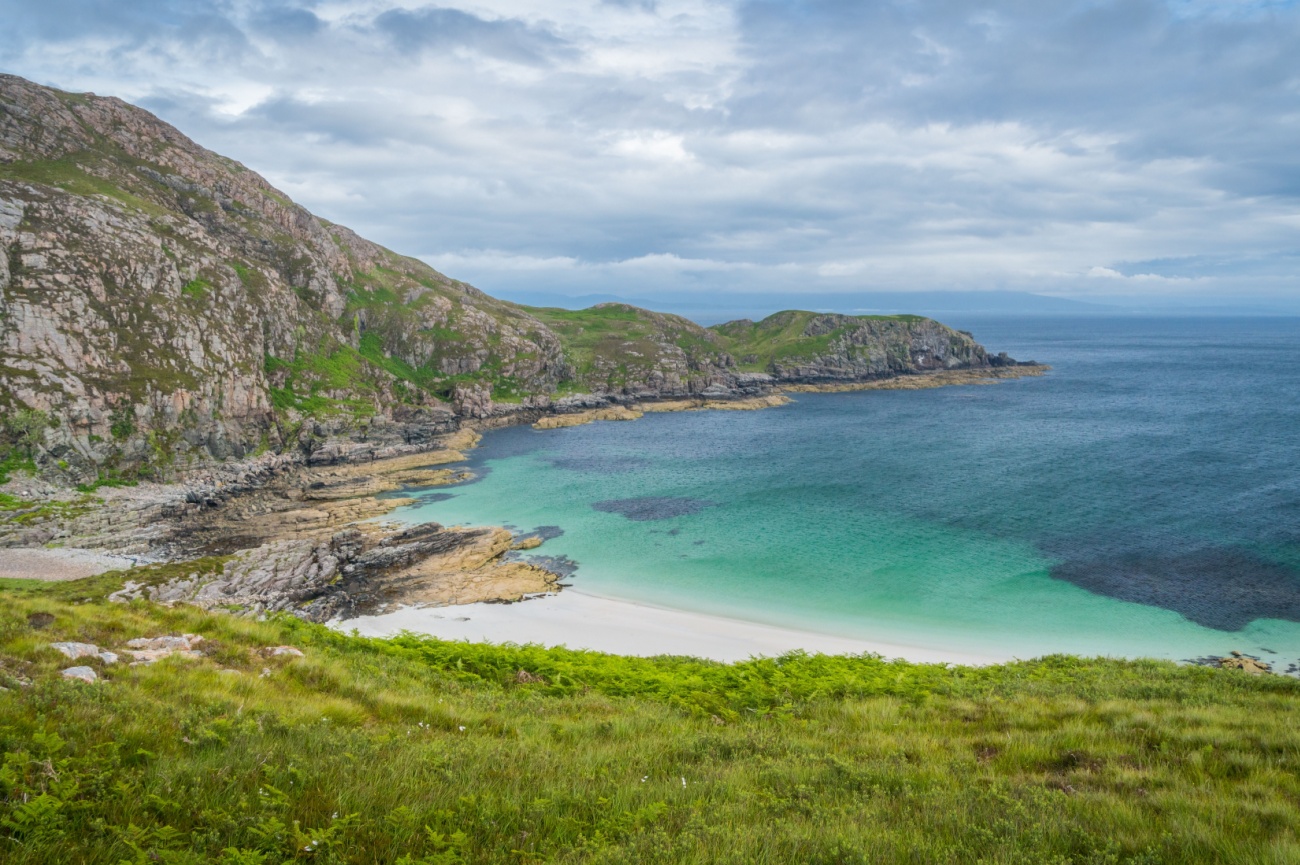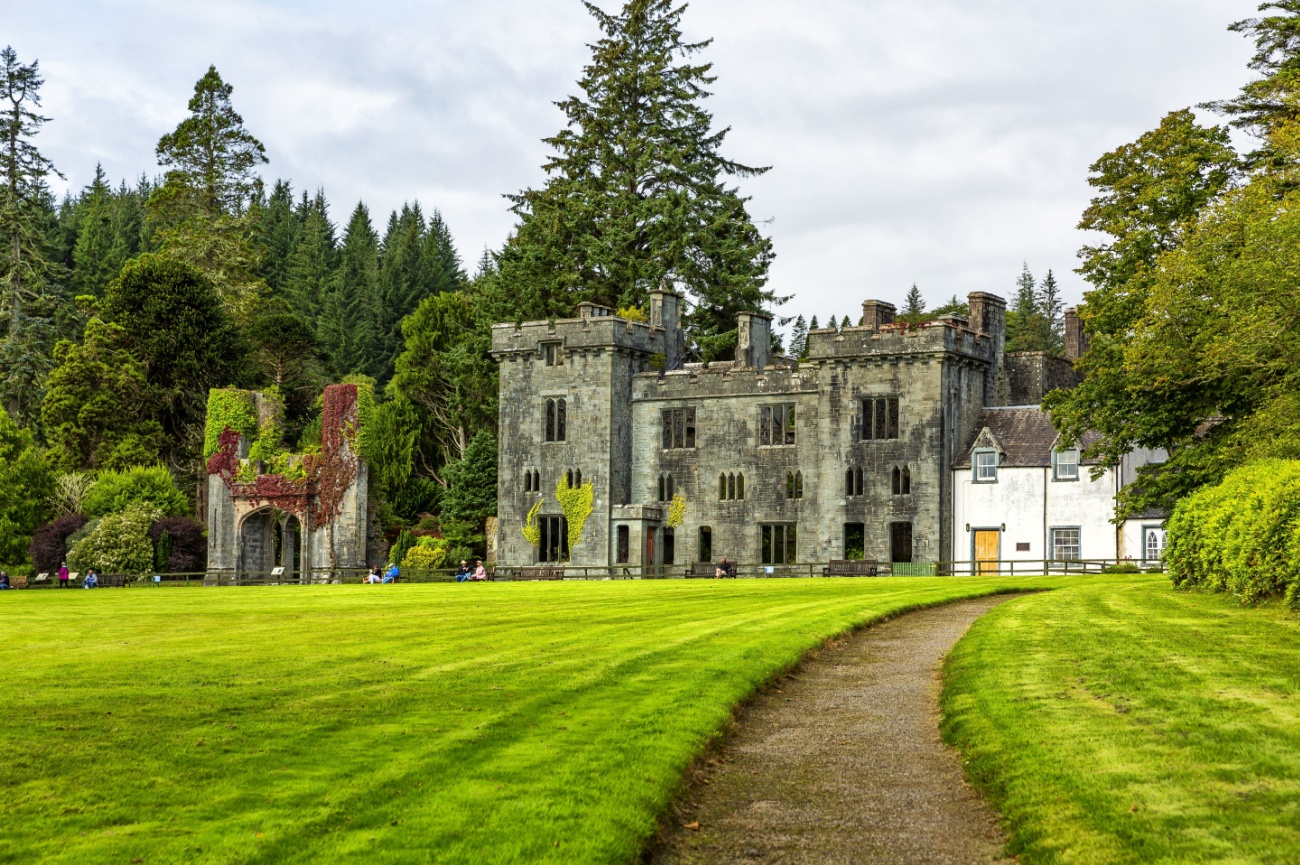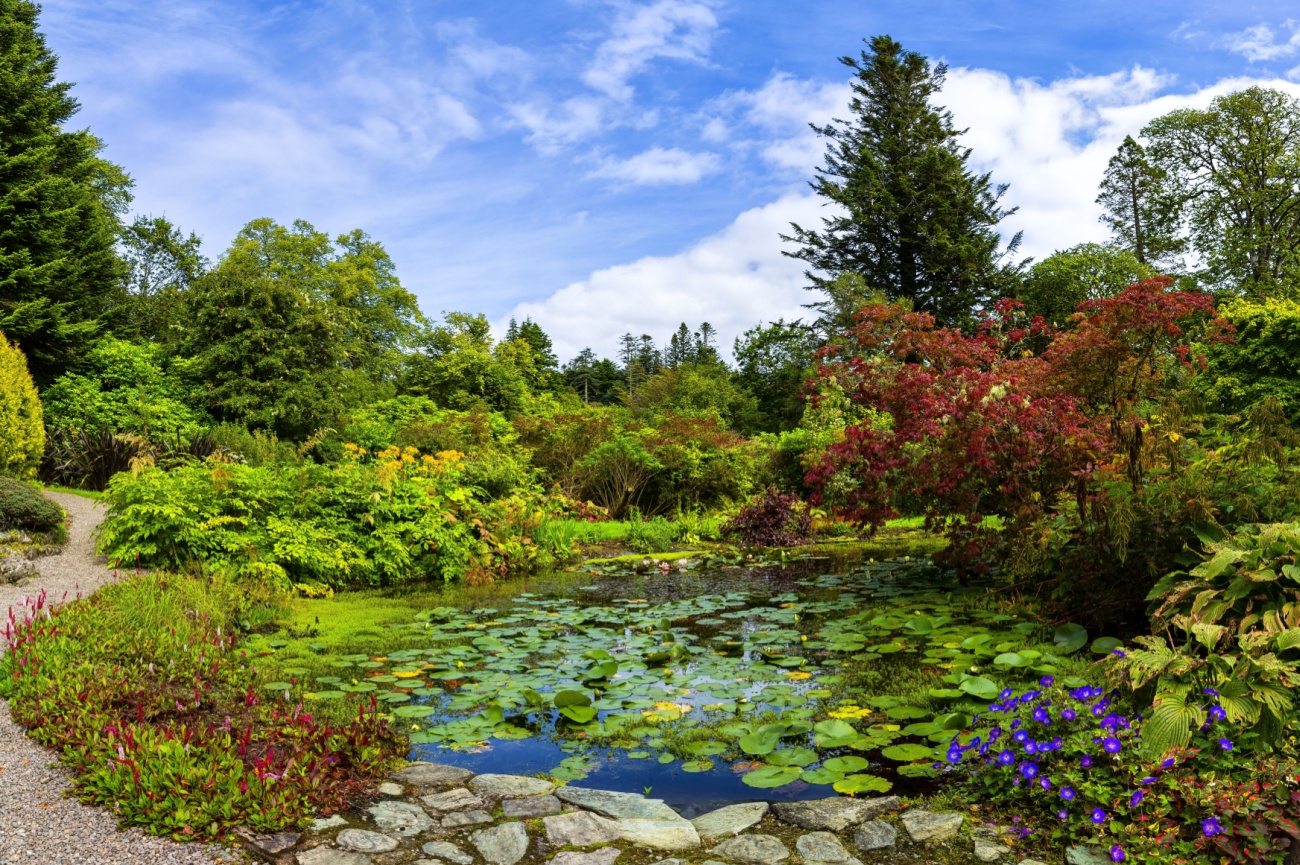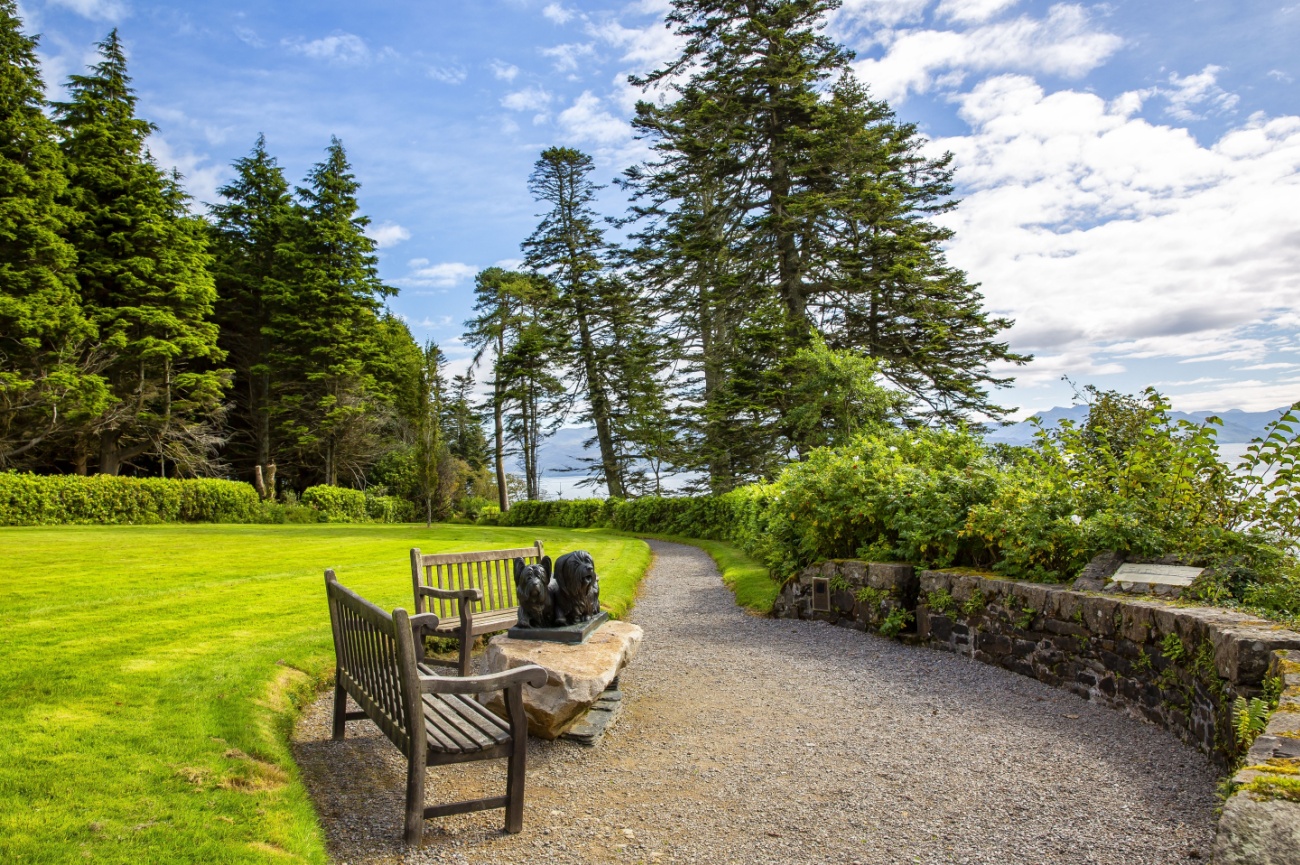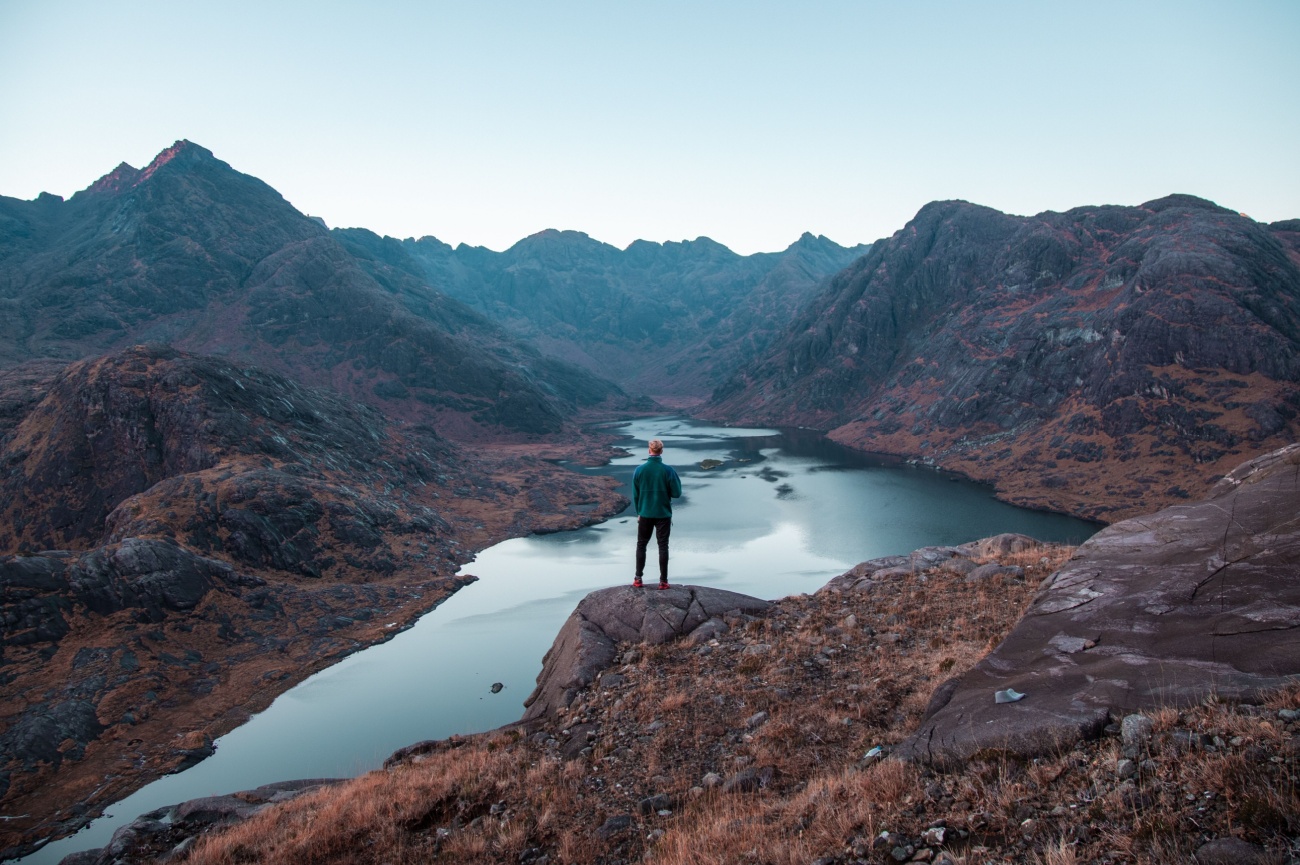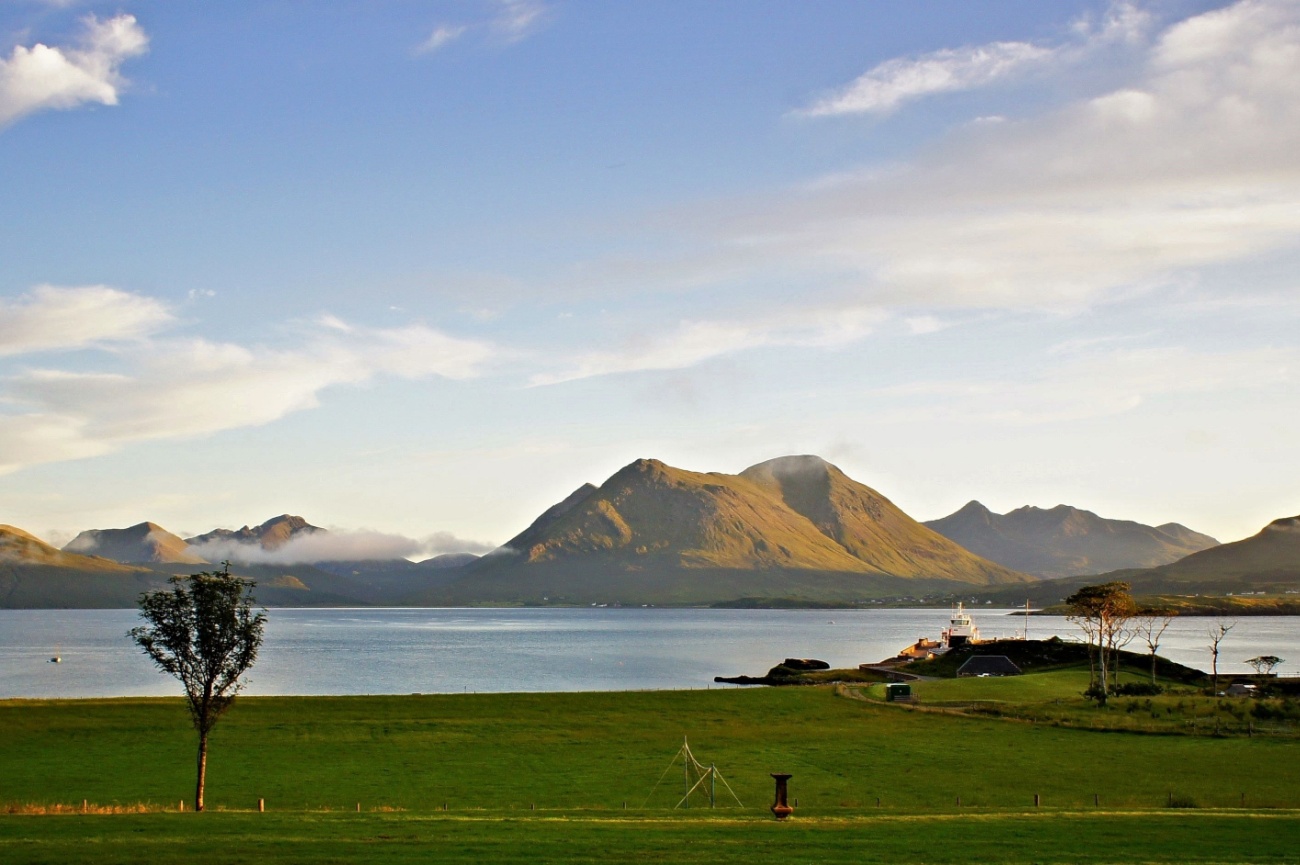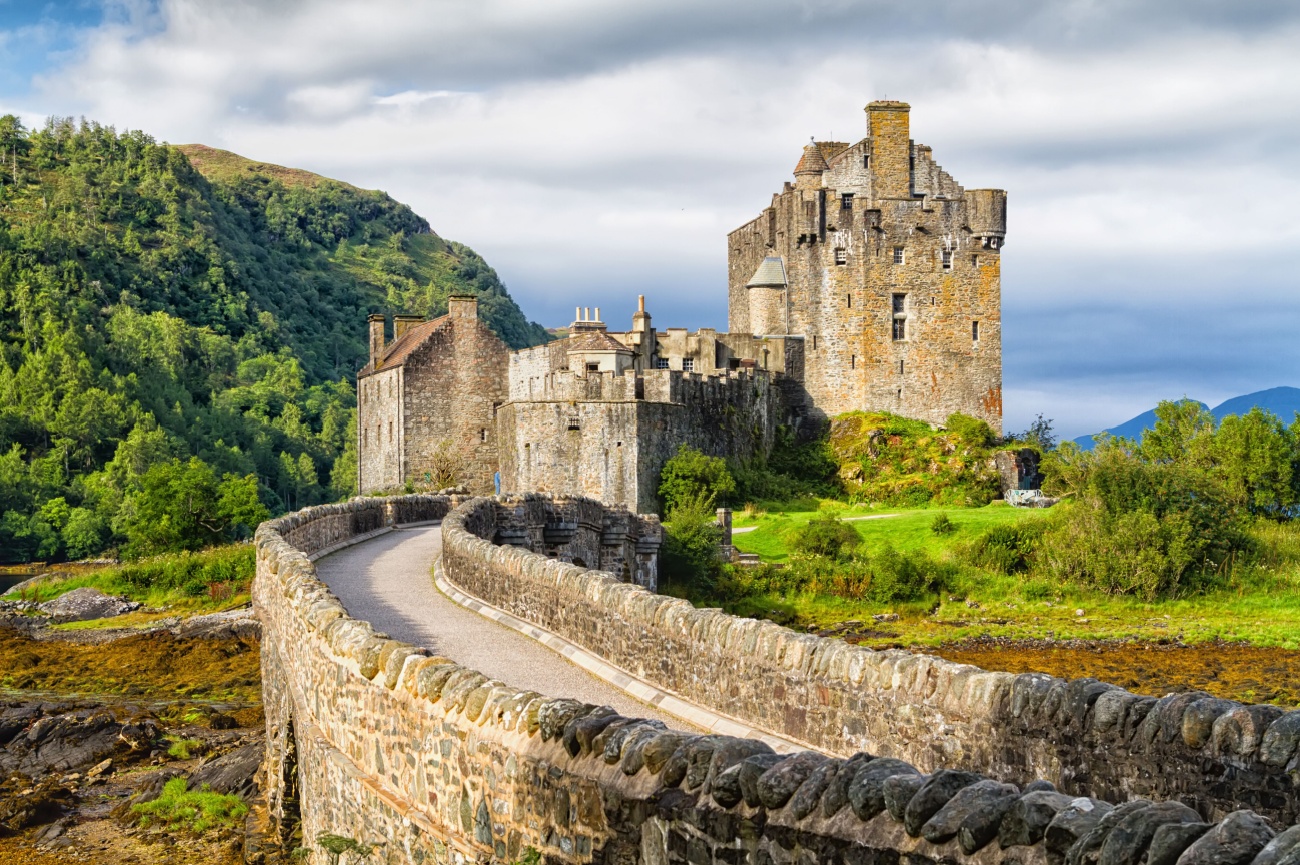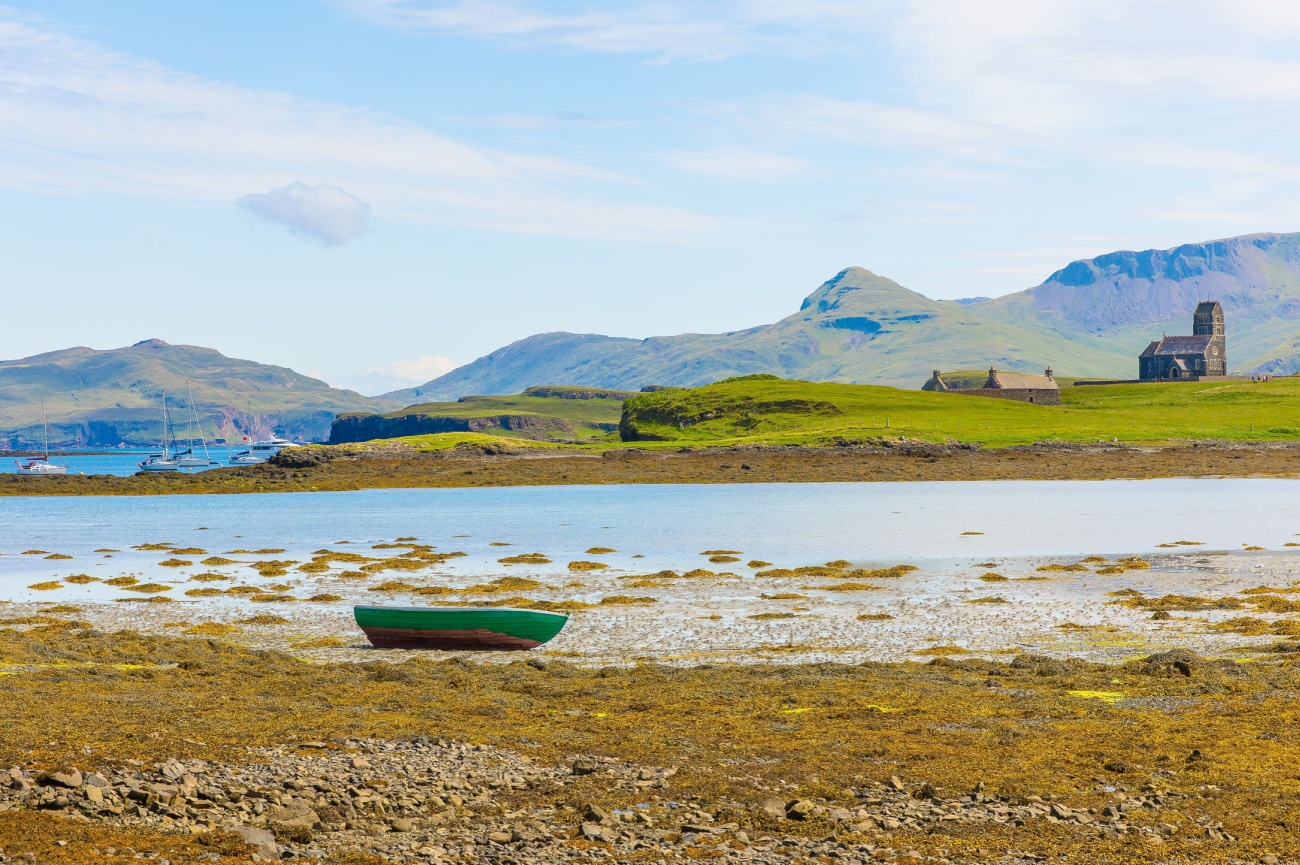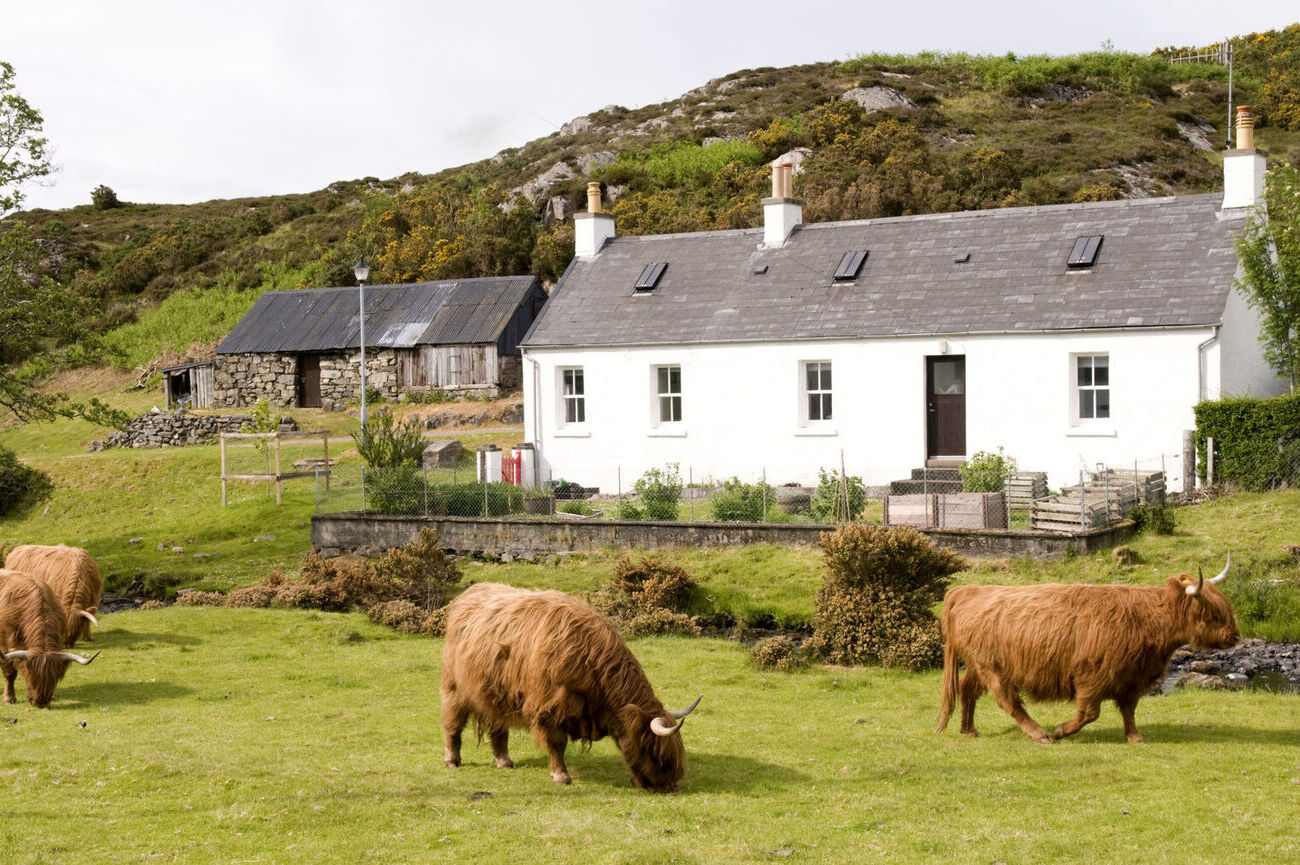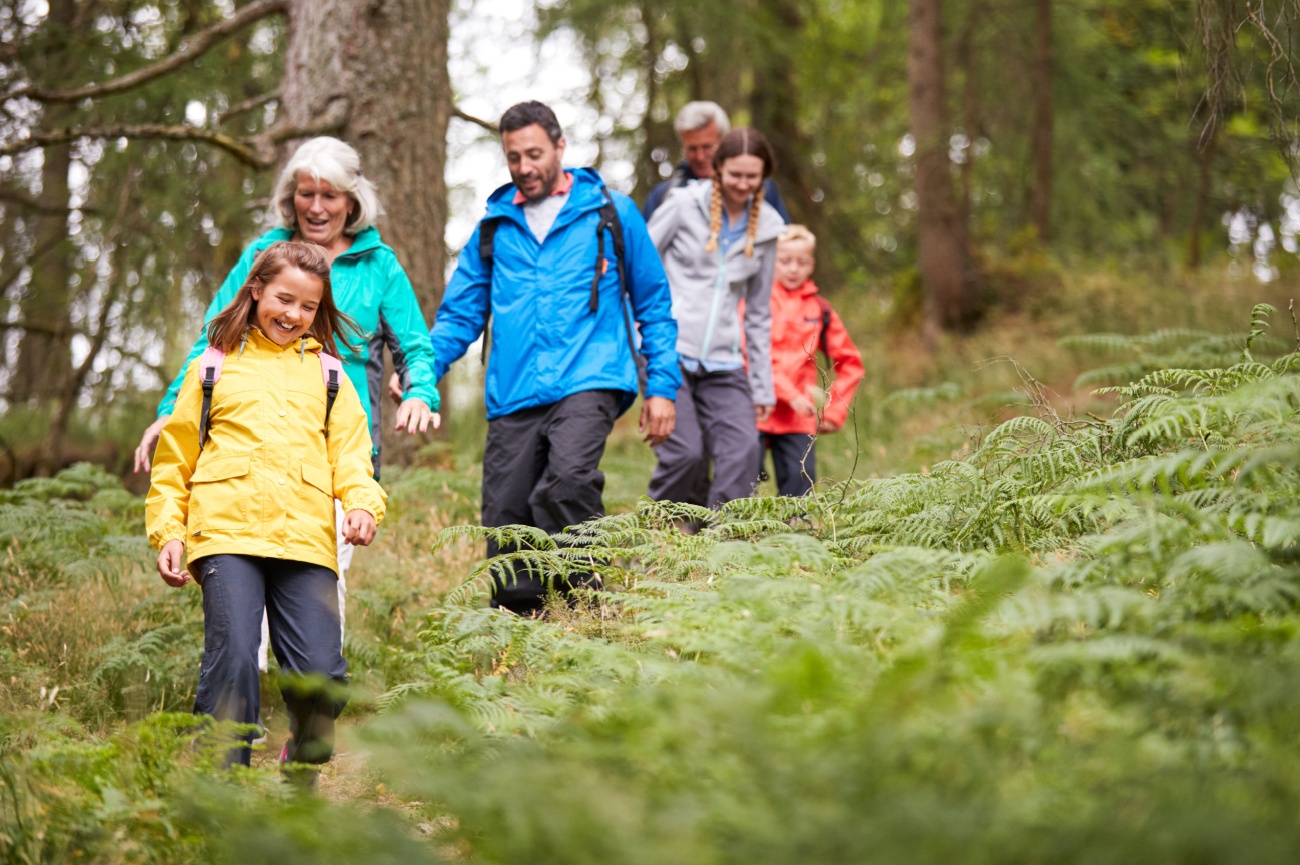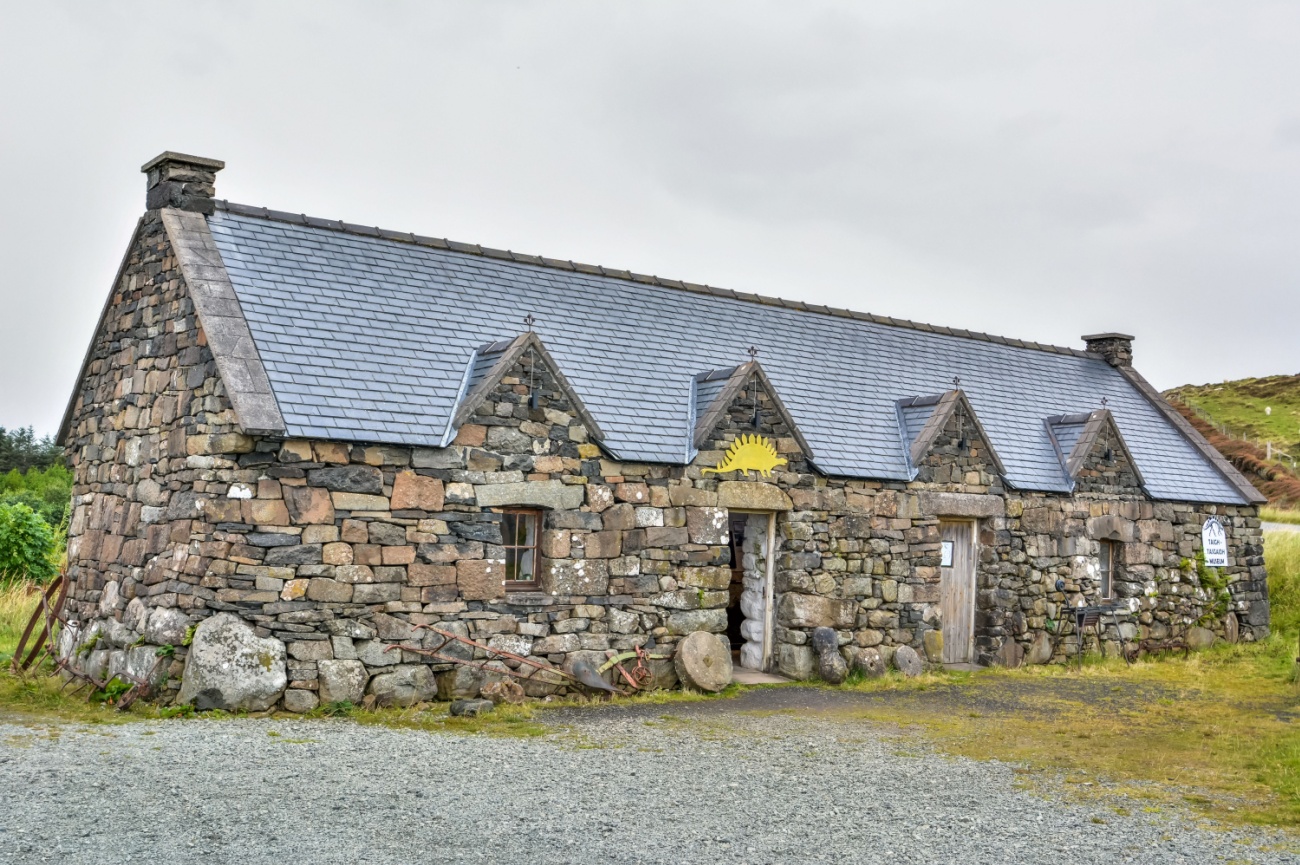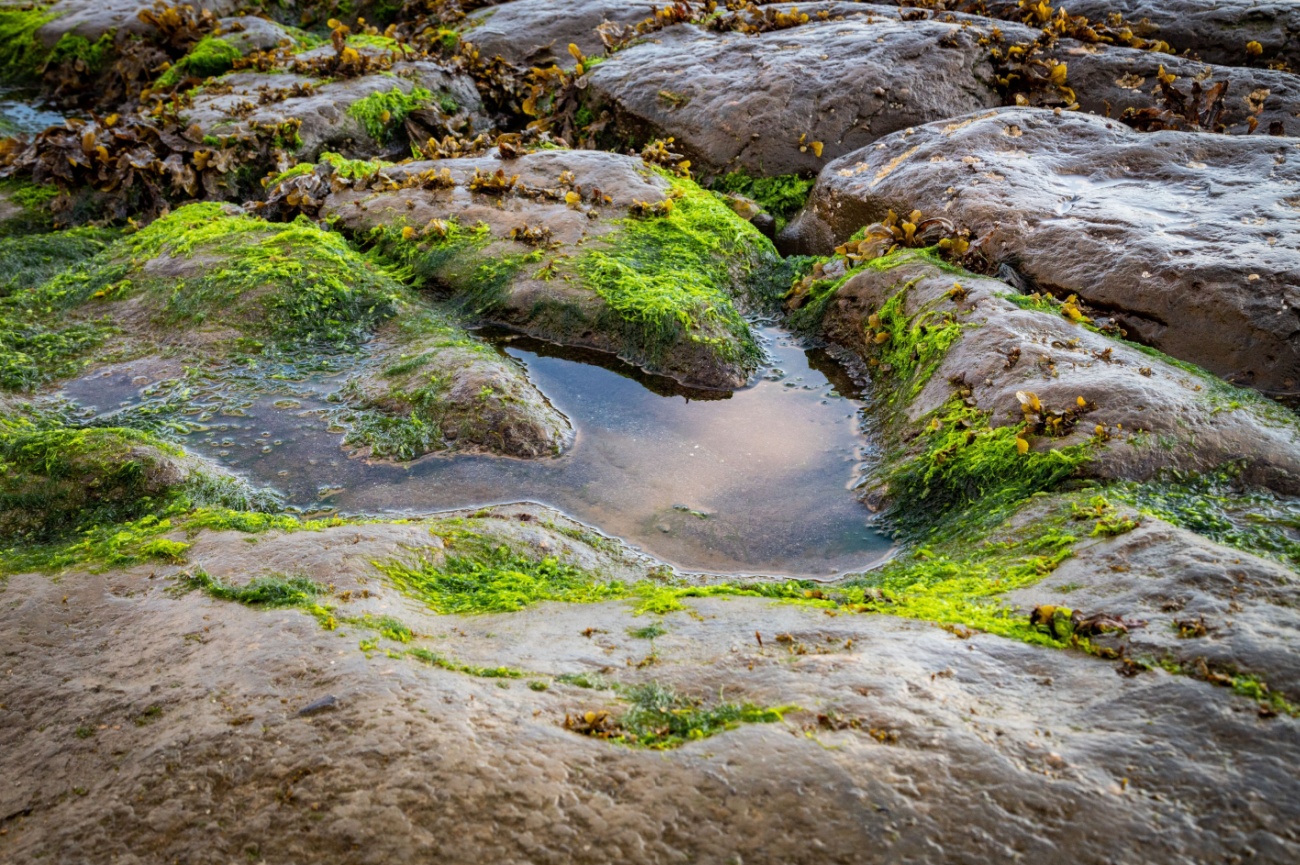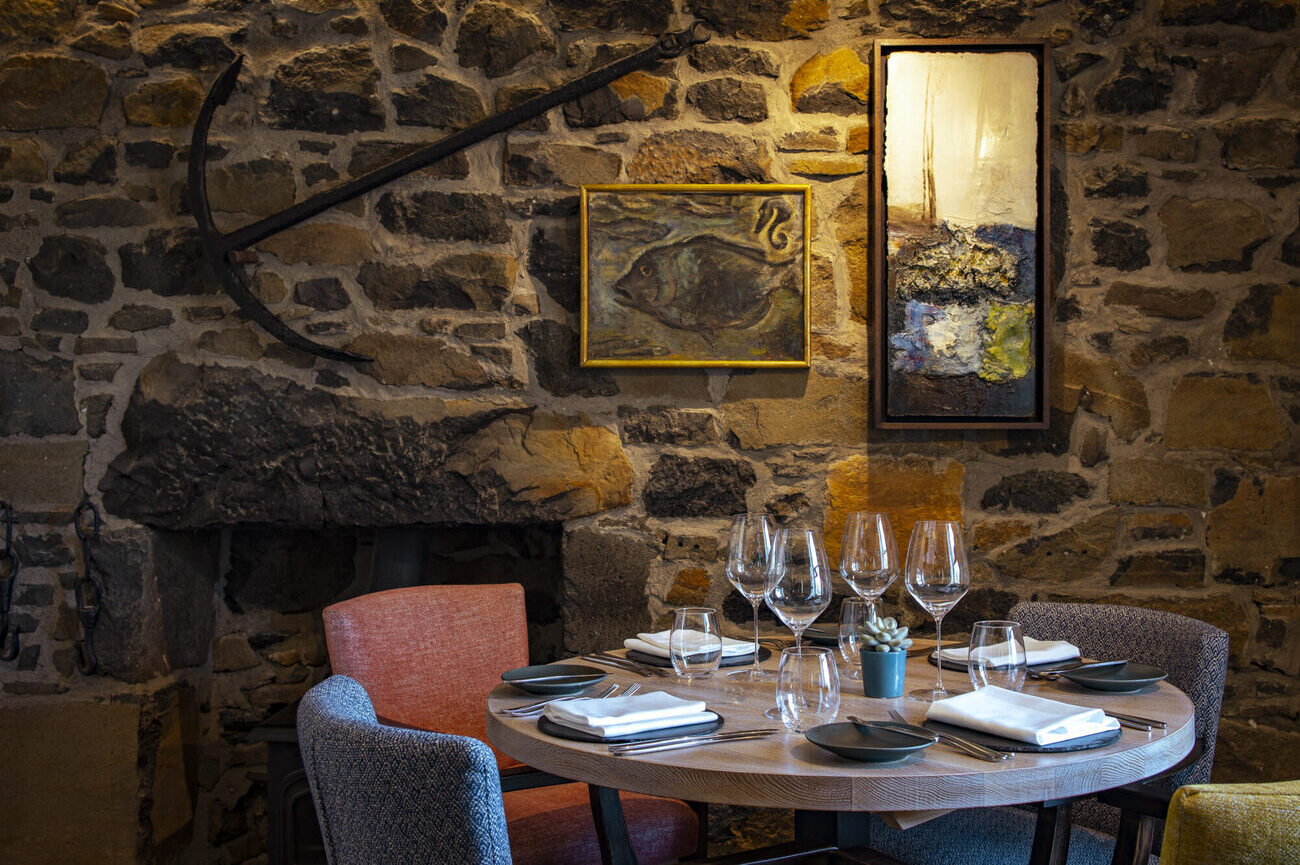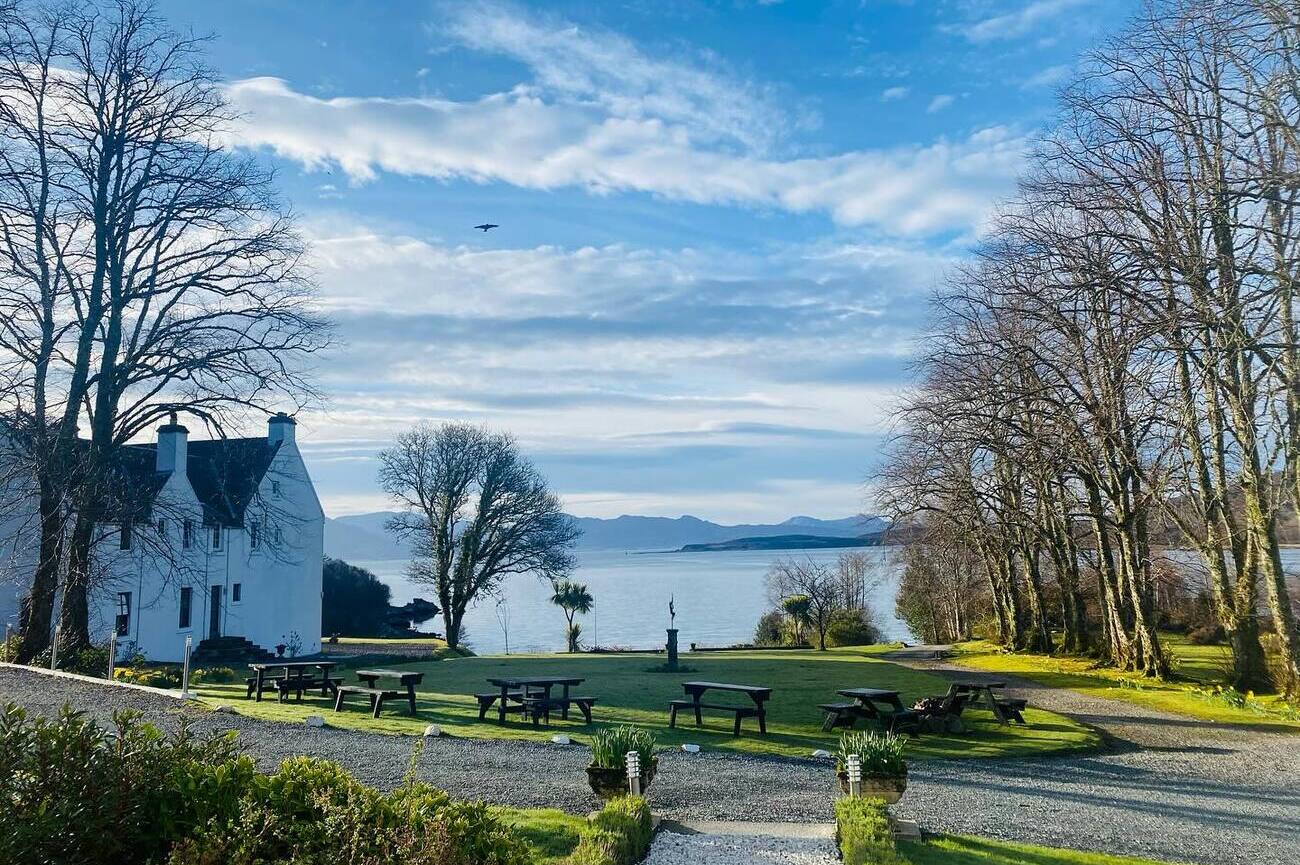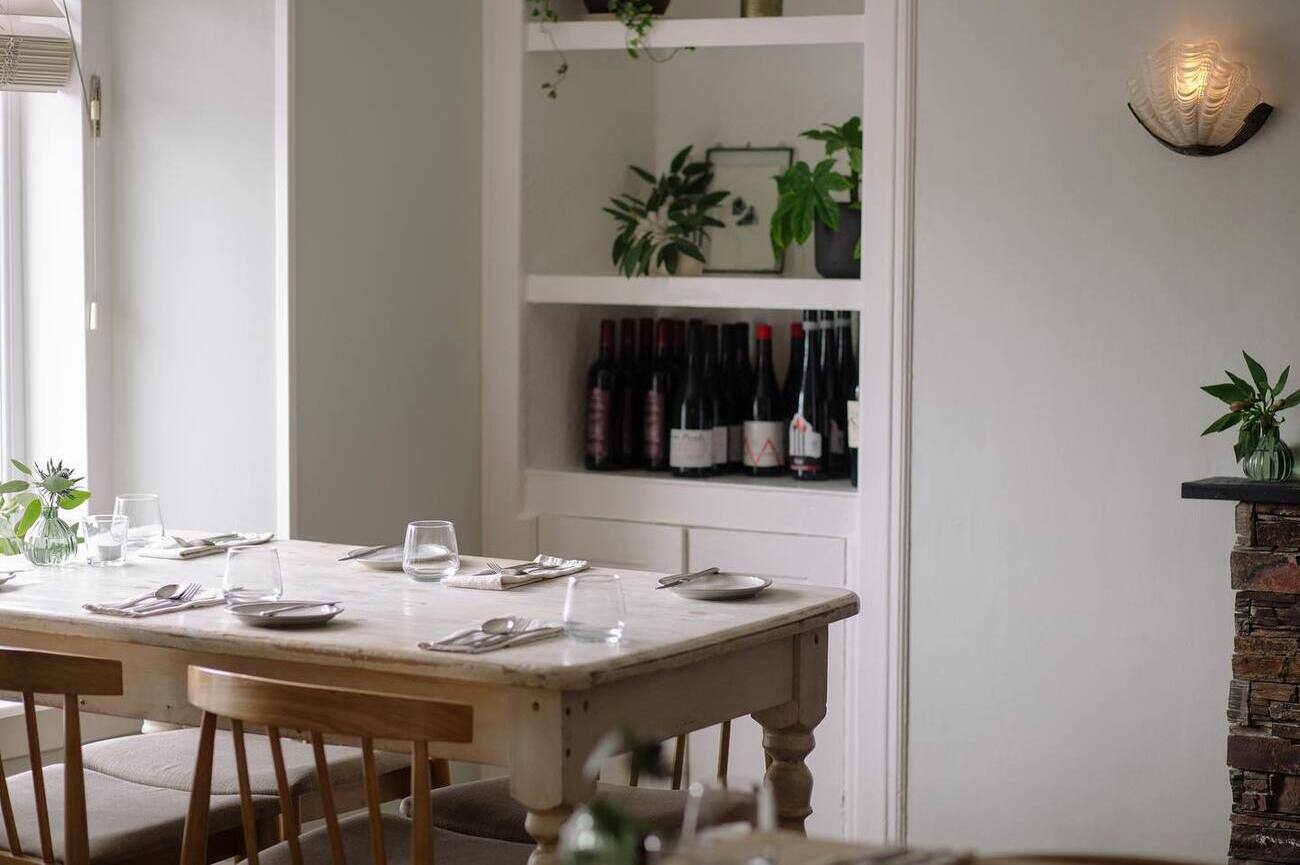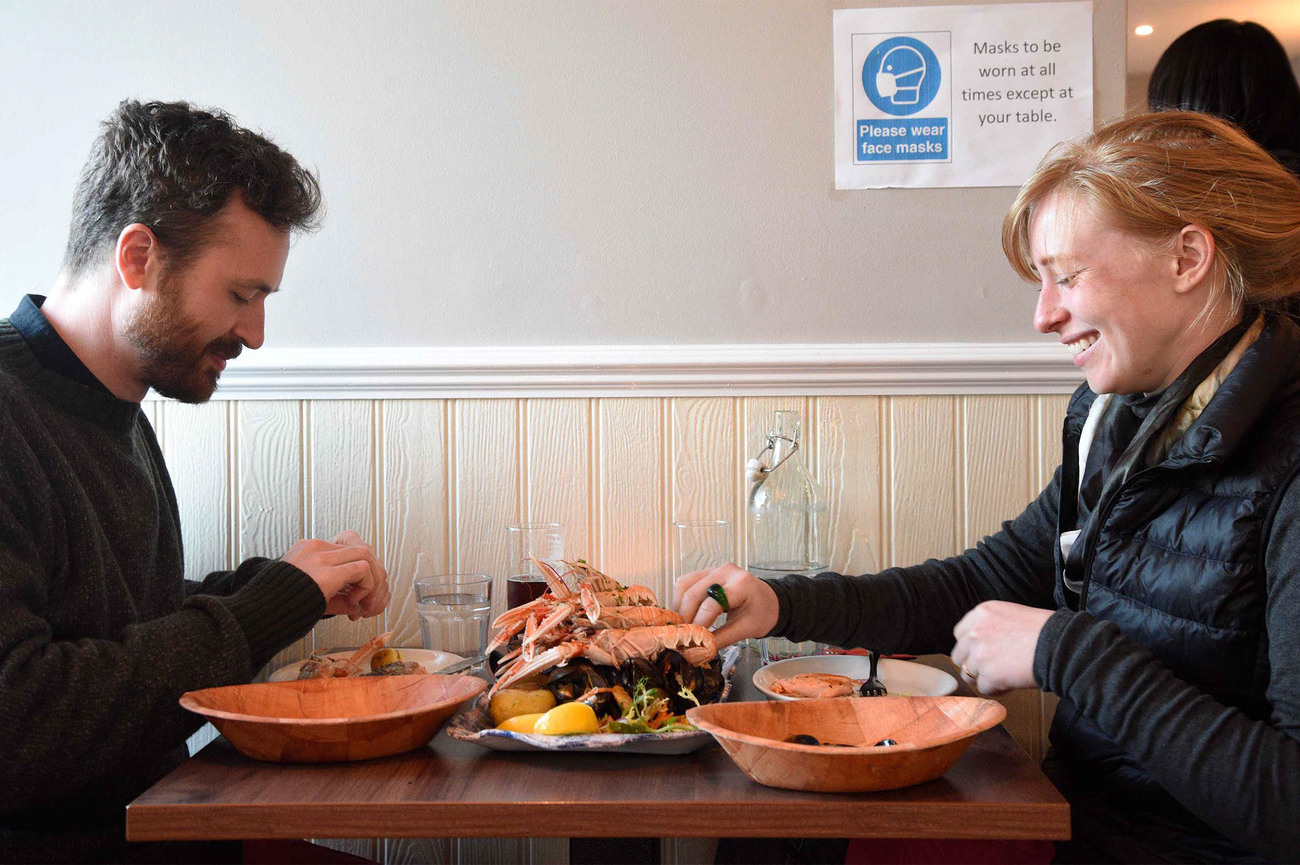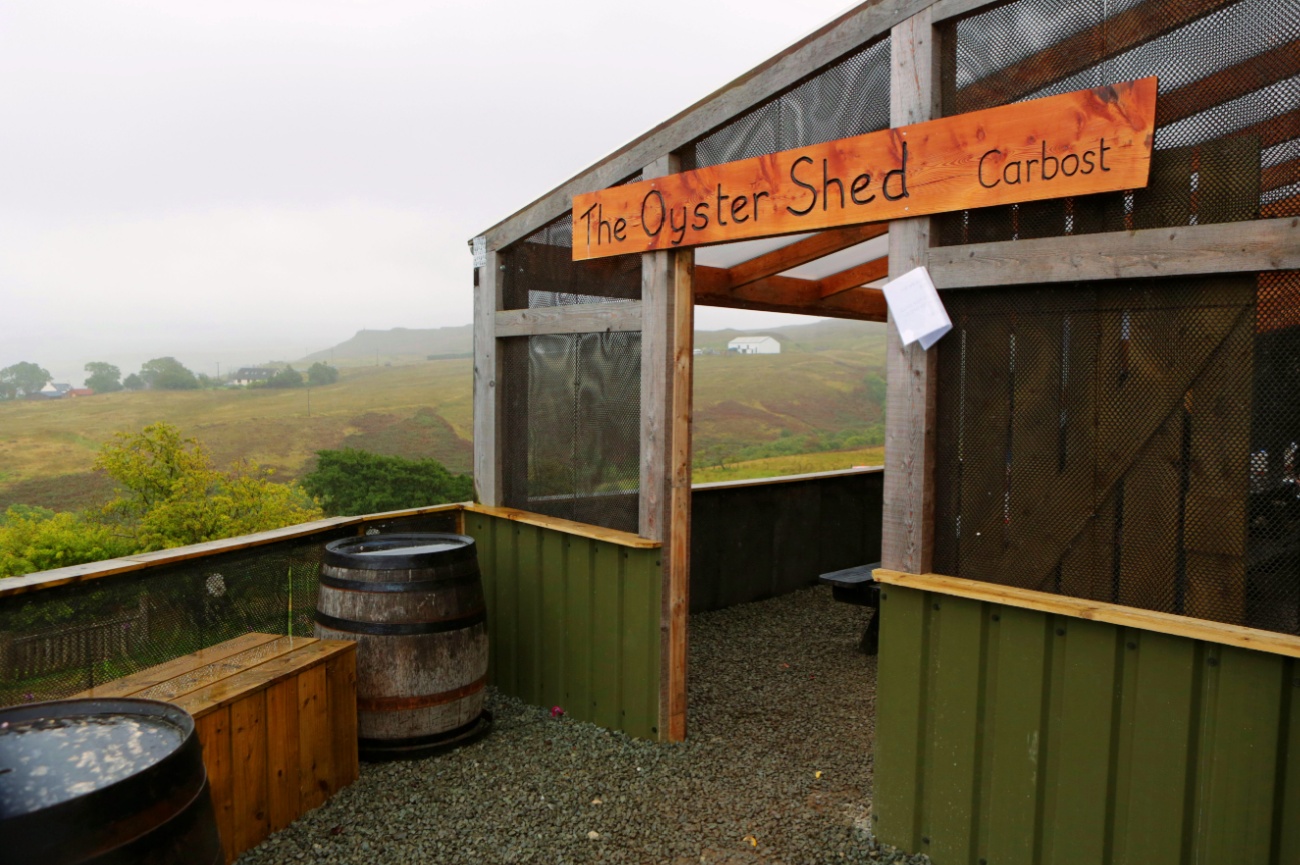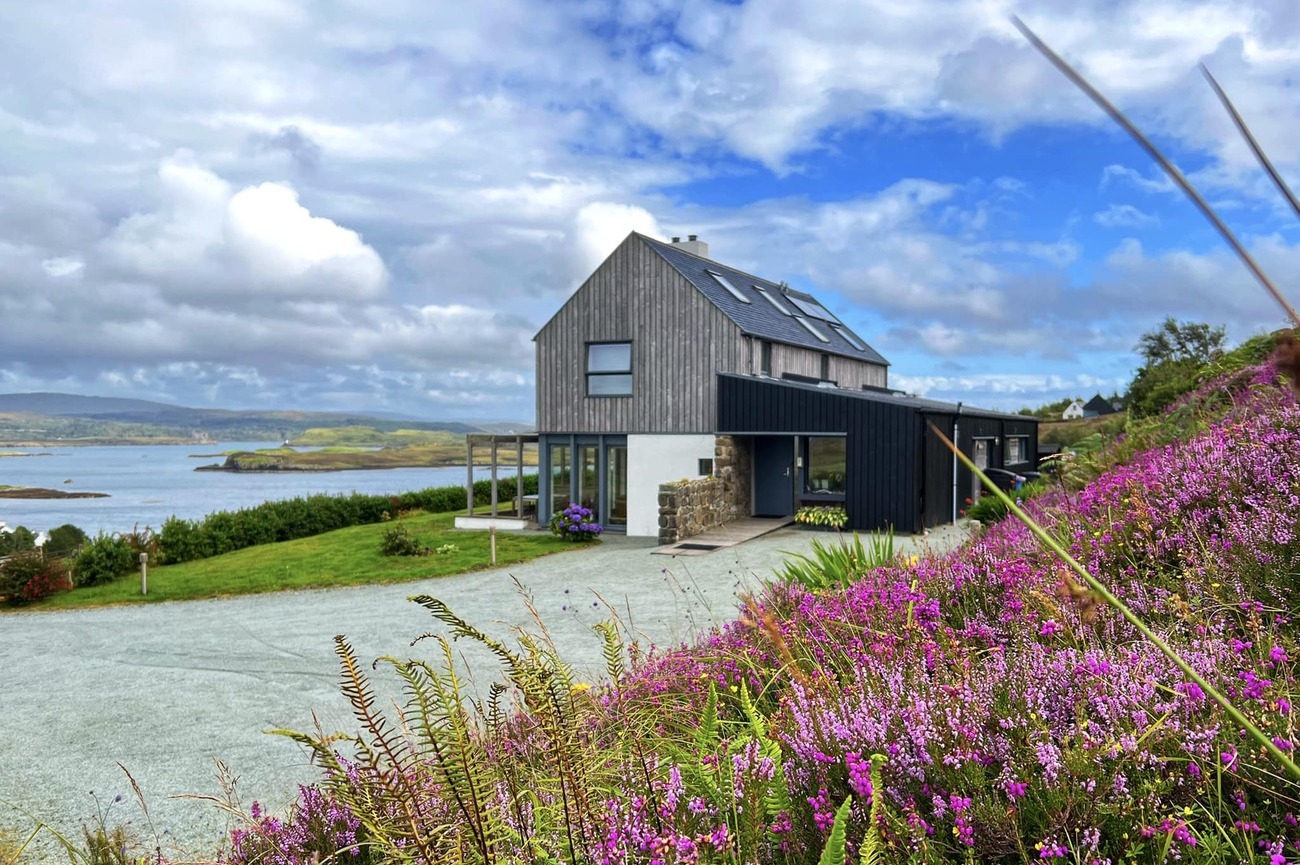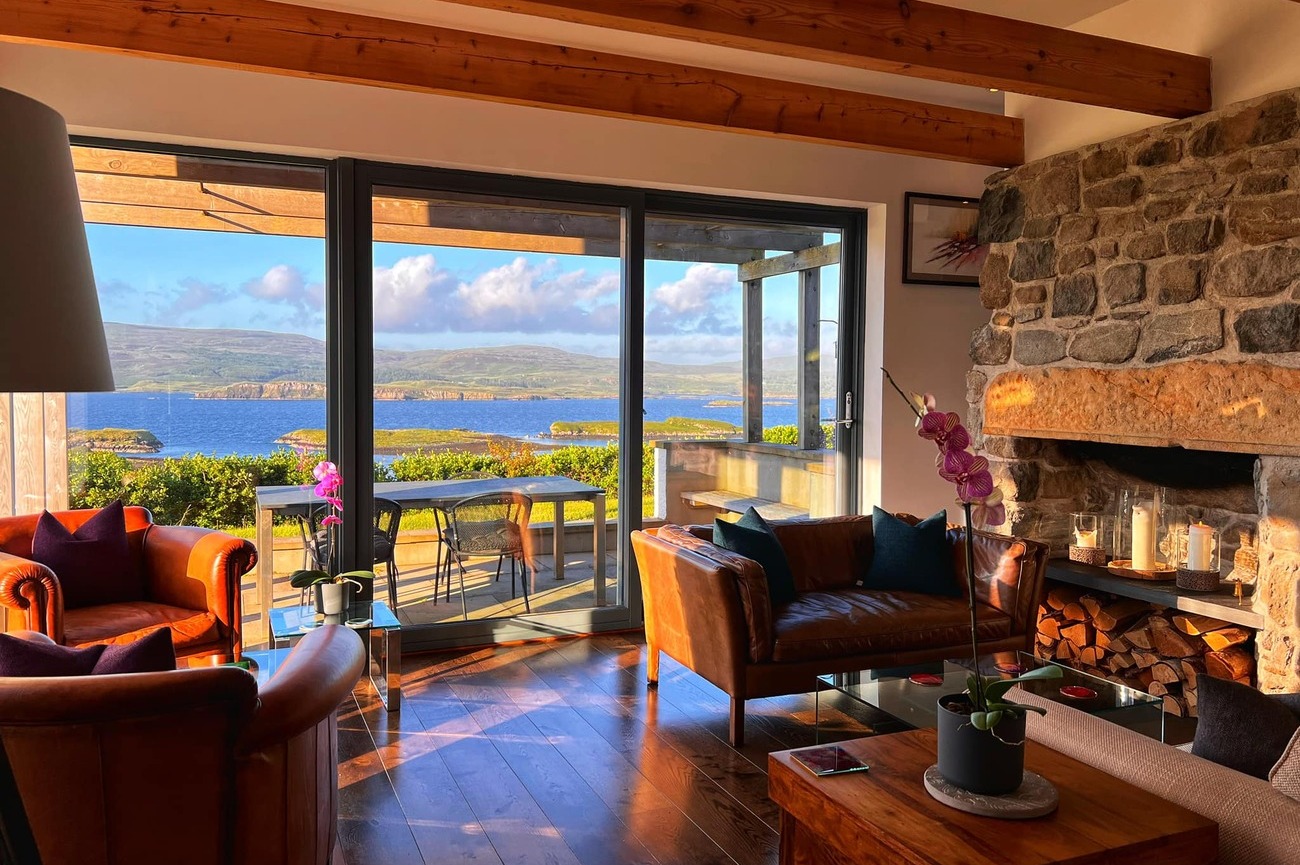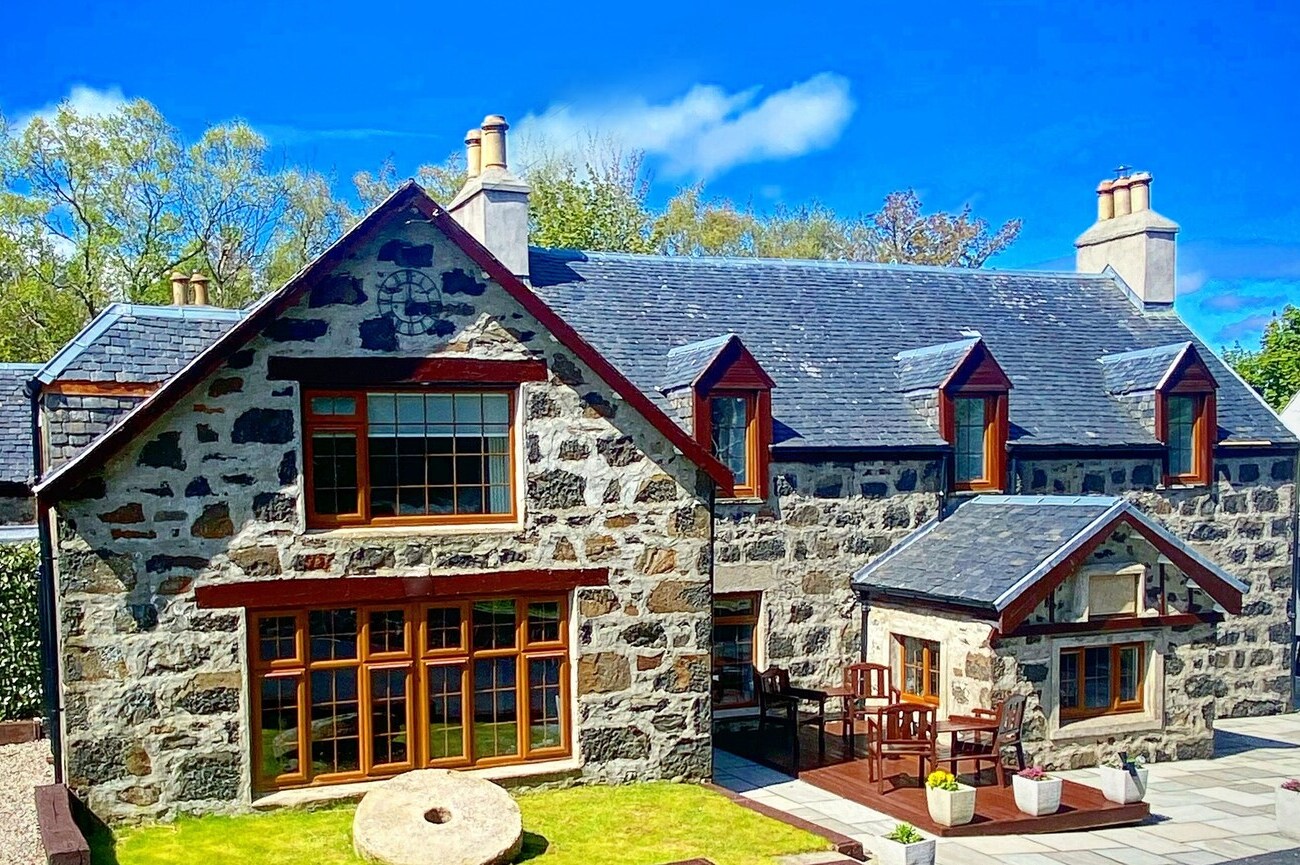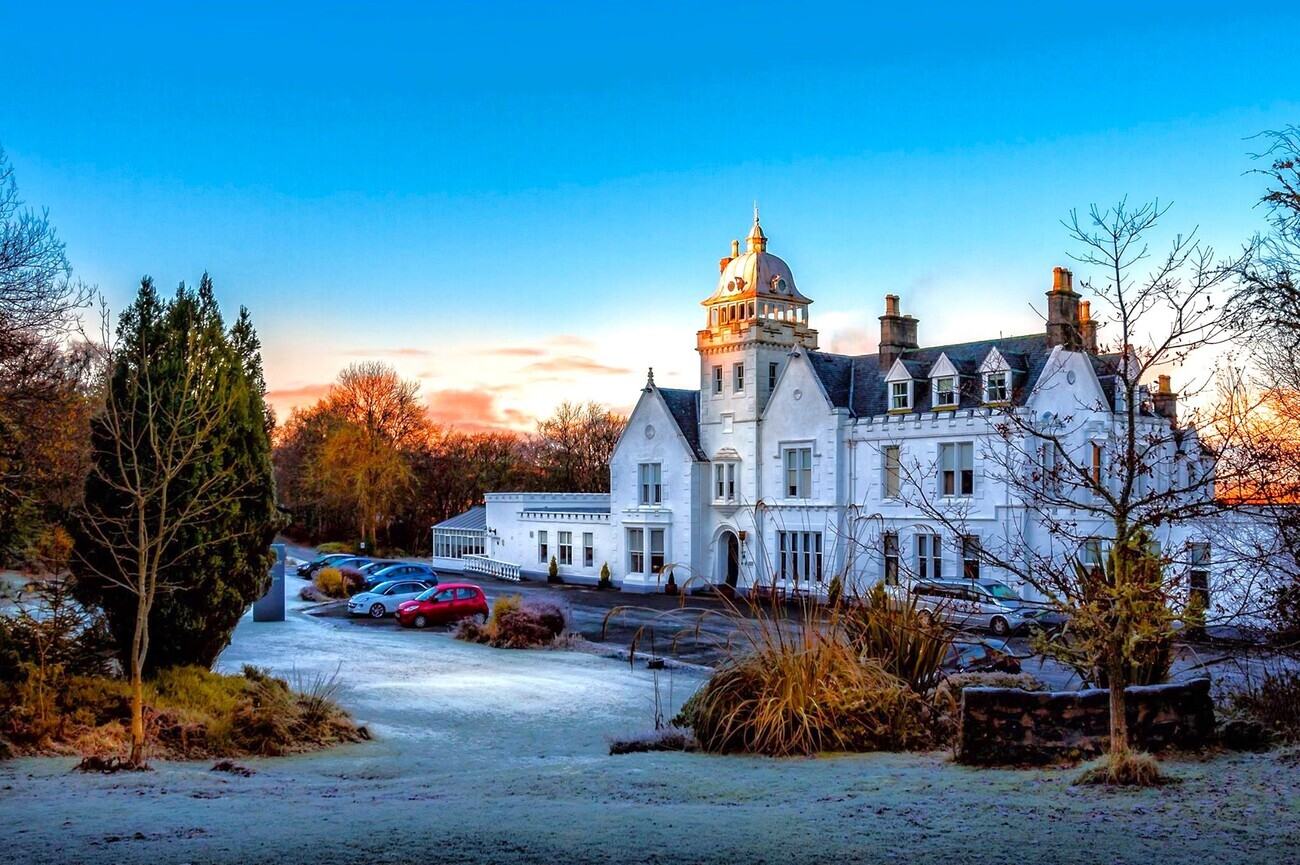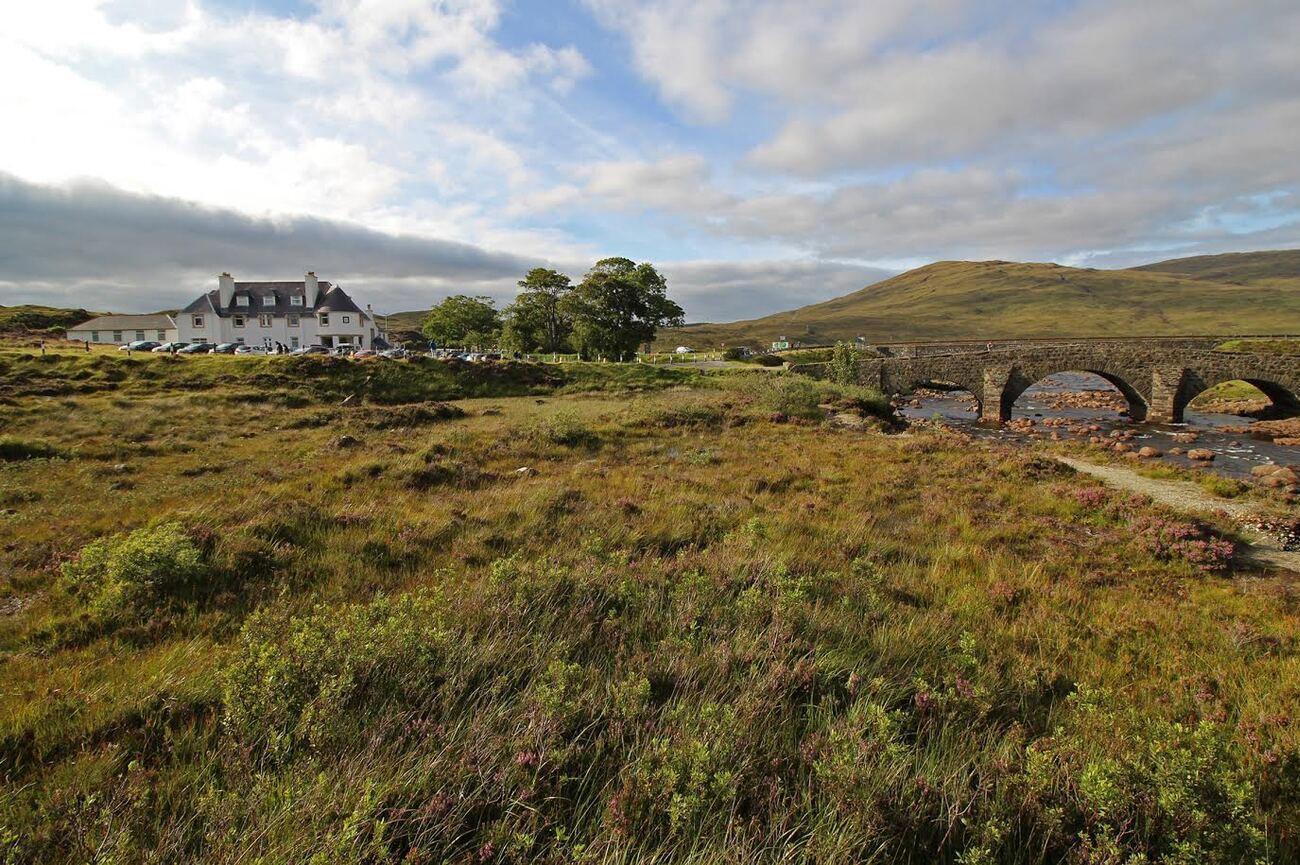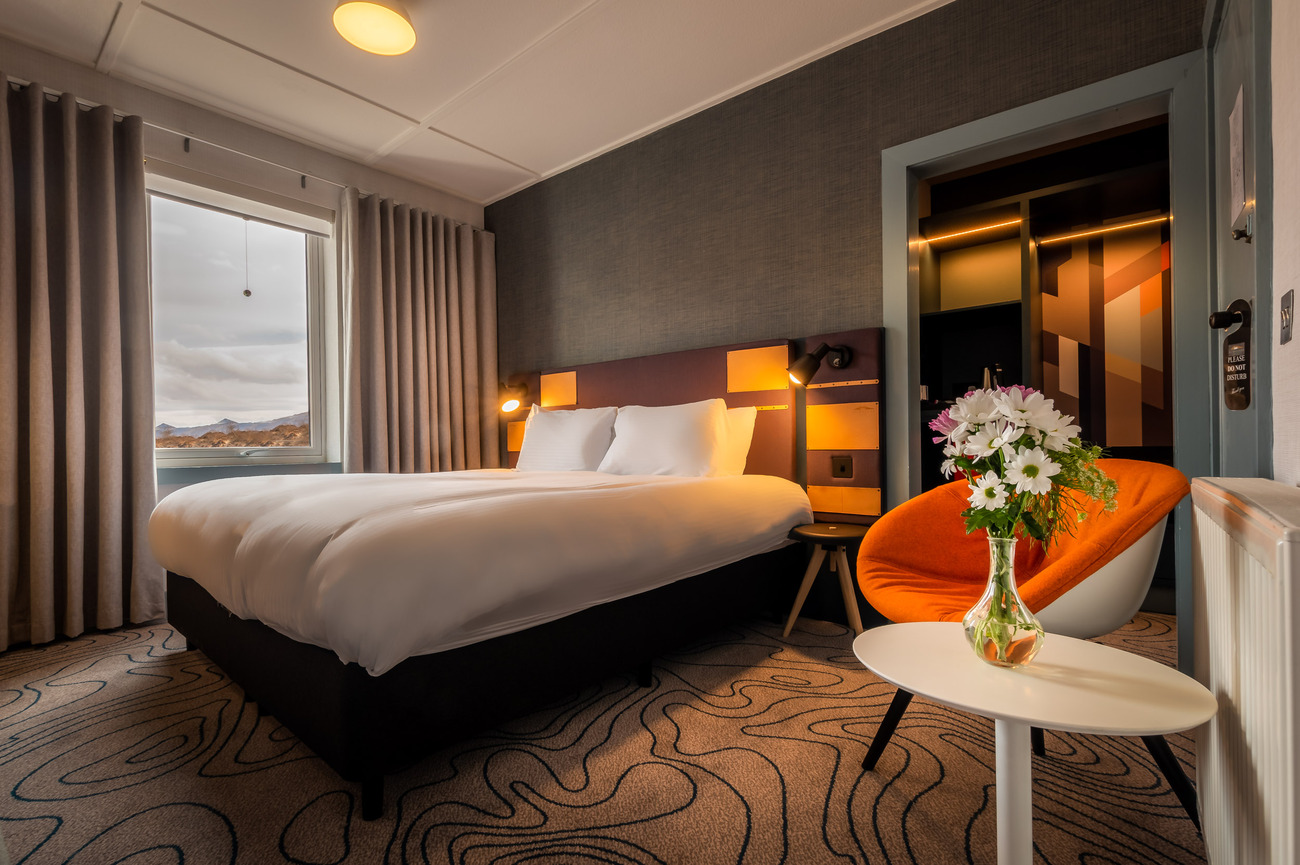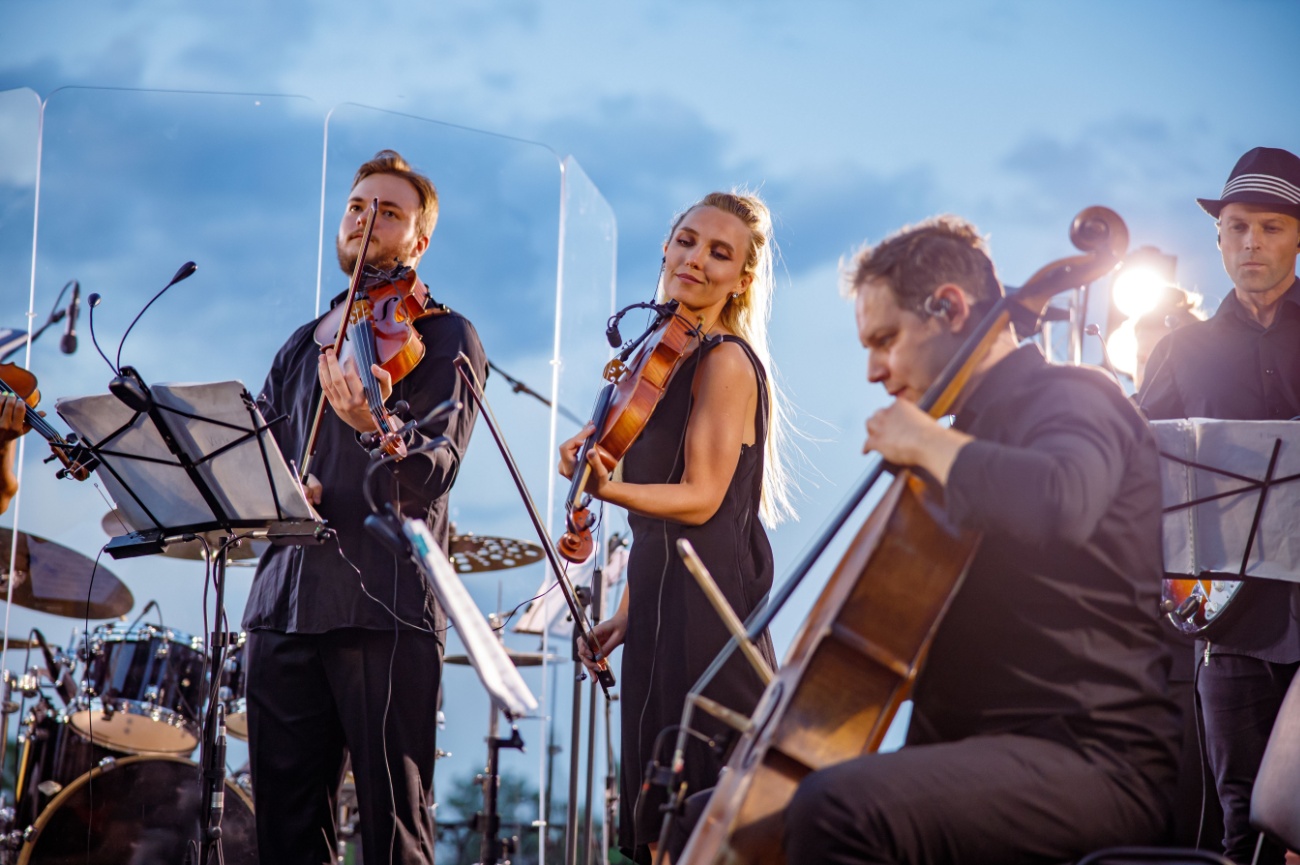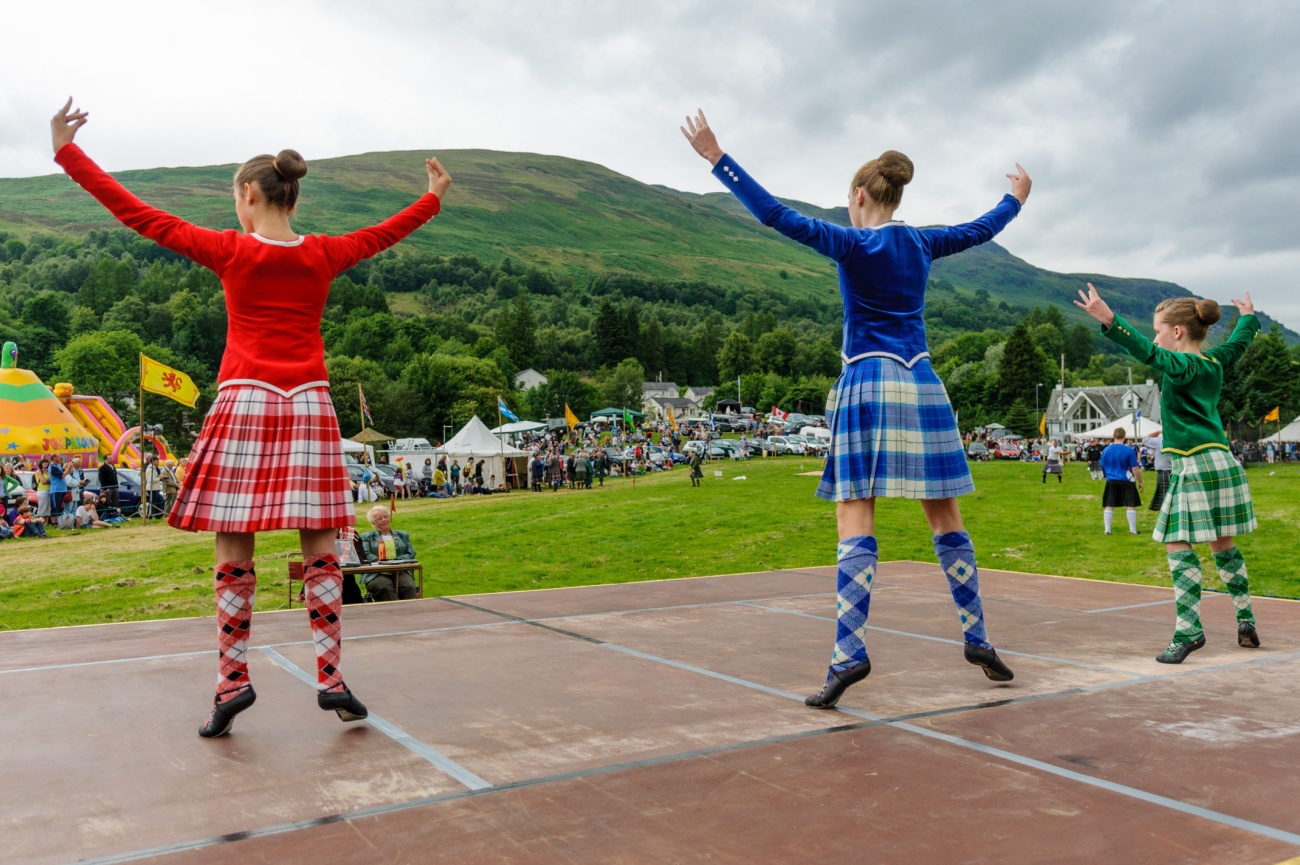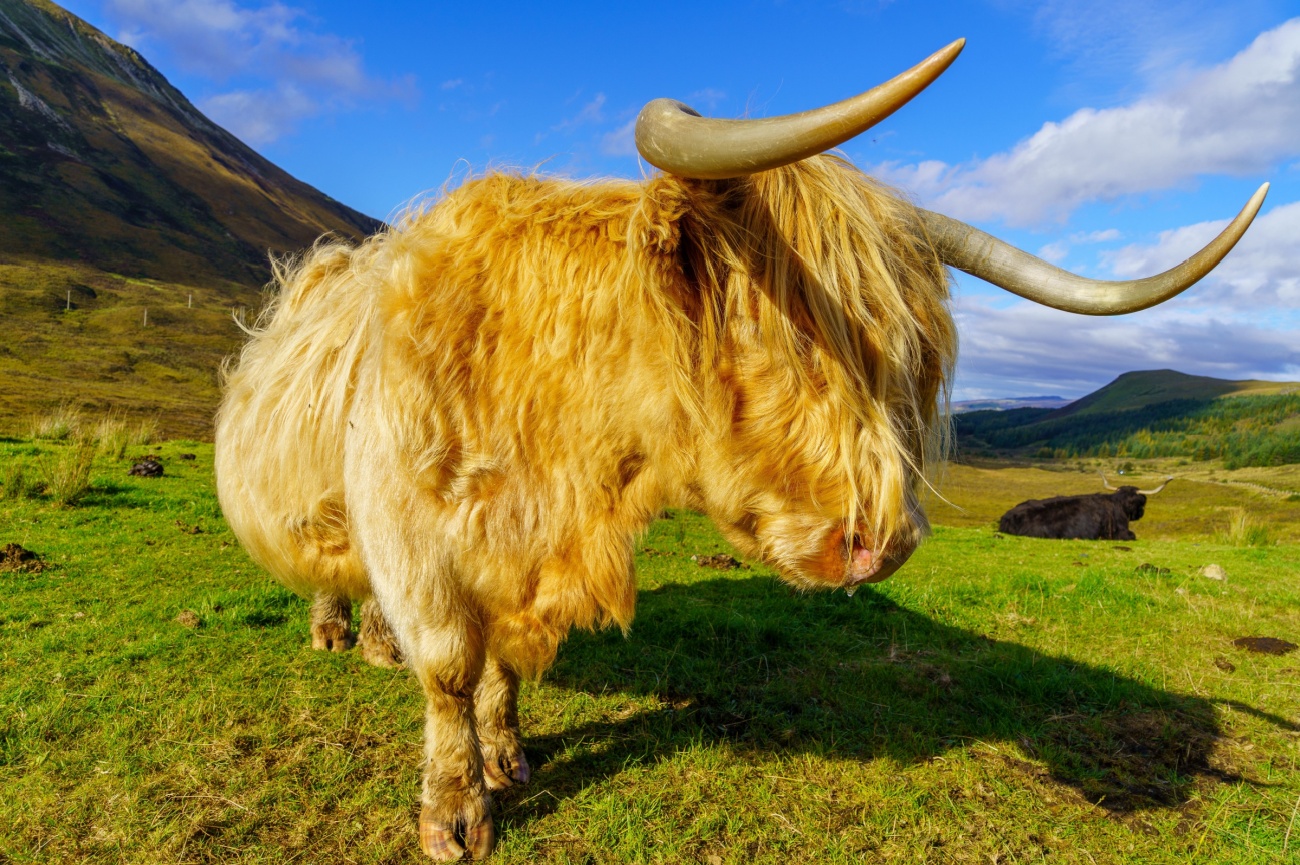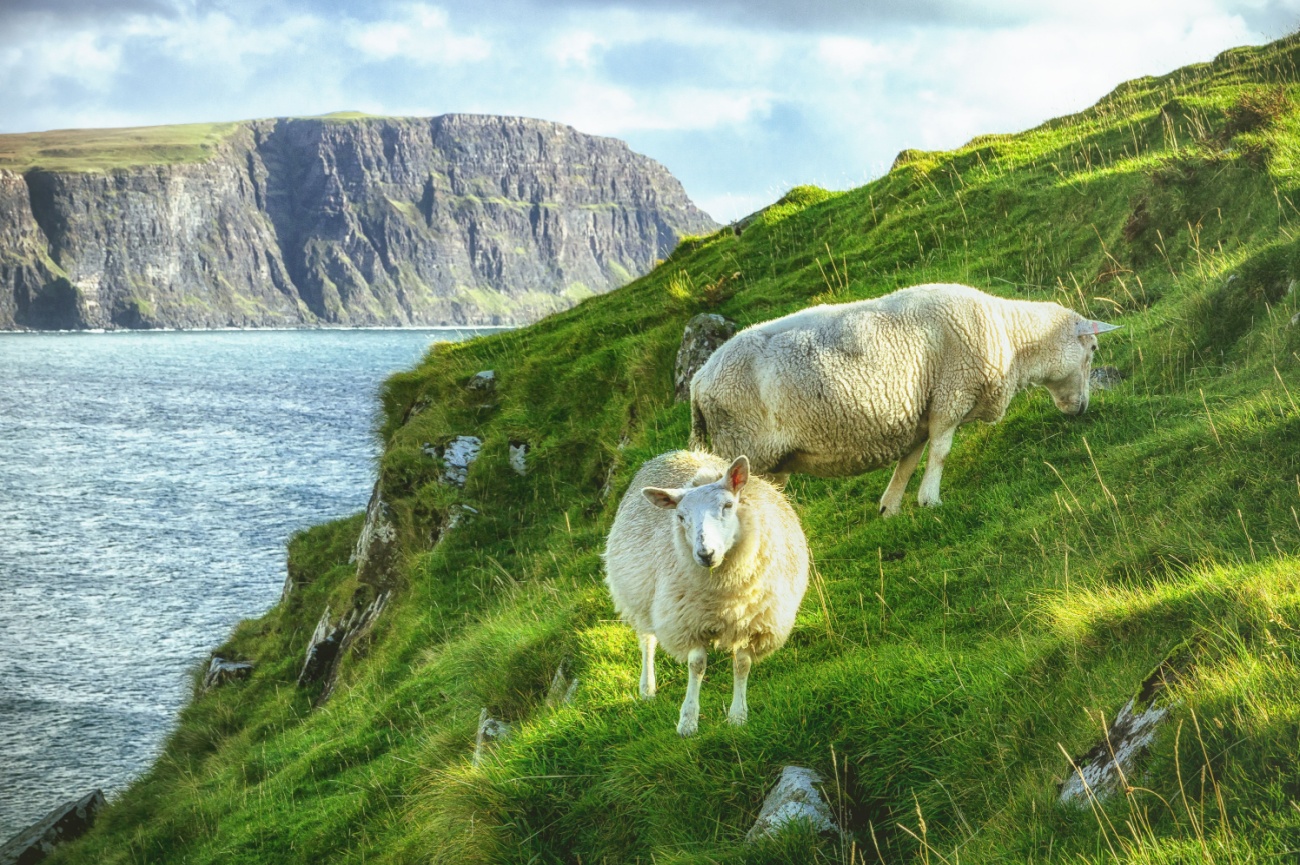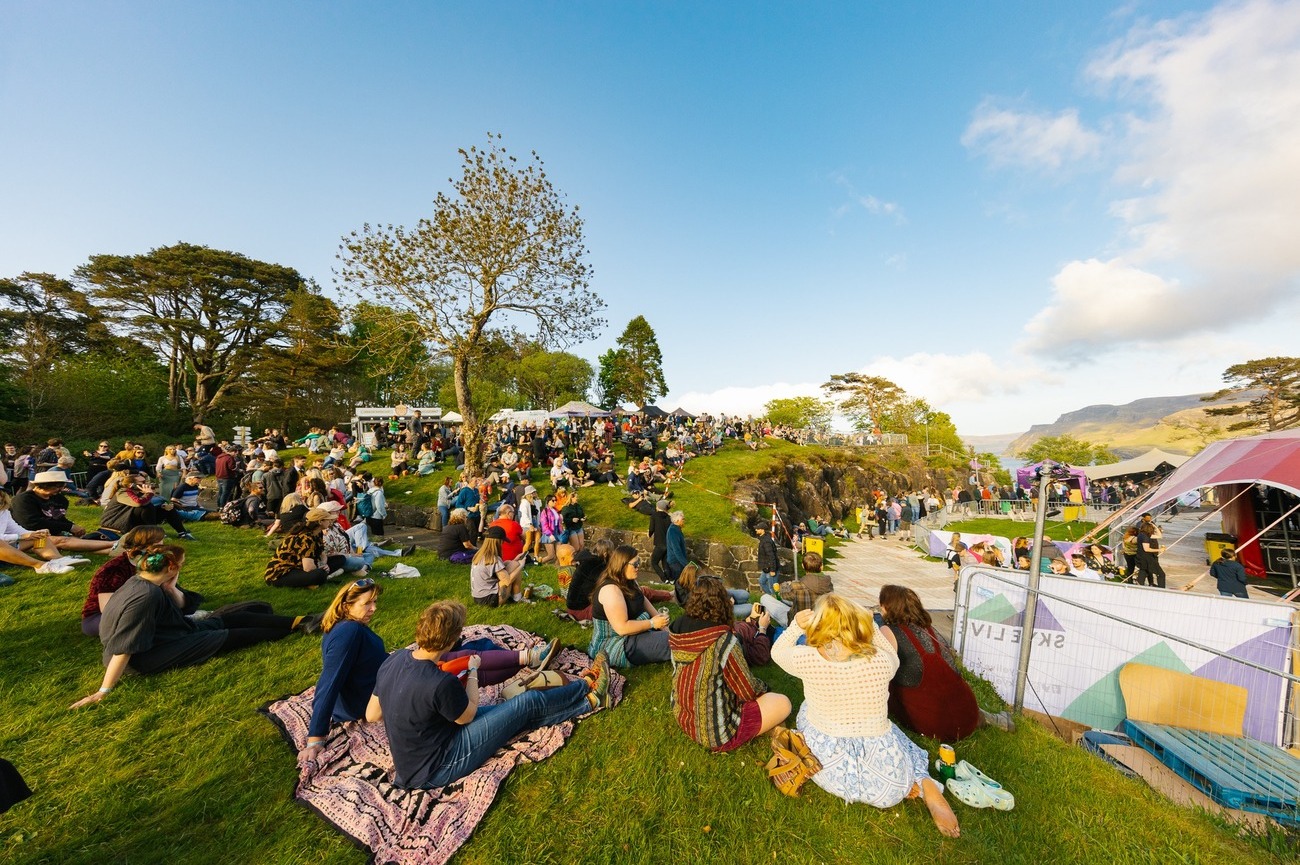Things to Do in Isle of Skye: 2-Day Itinerary
Dramatic scenery, cascading waterfalls and fascinating sites steeped in history and folklore, the Isle of Skye is a beautiful and enchanting place to visit.
Our two-day itinerary features two circular loops exploring the north and west of the island, taking in top attractions such as the Old Man of Storr, the Fairy Pools and the Quiraing. Both routes are circular and assume a start and end point of the island’s charming village capital, Portree, so feel free to do them in reverse if you prefer.
Skye is the largest of the Inner Hebrides and if you’re looking to extend your visit, check out our ideas for more things to do and day trips from Skye. You’ll also find suggestions for where to eat and stay as well as when to visit. Pack your hiking boots and raincoat and discover what this beautiful island has to offer.
Day 1

Morning: The Old Man of Storr
Set off early from Portree this morning to start your adventure on the route known as the Trotternish Loop. This circular journey round the north of the island boasts numerous magnificent spots. If you have time, you could take in Bride’s Veil Falls, where the water cascades down the rocks giving the impression of the delicate lace of a bride’s veil. Otherwise, head straight to arguably Skye’s most famous landmark, the Old Man of Storr. An ancient landslide created this dramatic basalt rock formation, which is set amongst the impressive scenery of the Trotternish Ridge. Choose to hike the trail to the pinnacle’s base or admire the breathtaking scenery from afar. The popularity of this spot means it’s best to visit earlier in the day if possible.
Lealt Falls
Skye is famous for its various waterfalls and your next stop is the dramatic cascades of Lealt Falls. The impressive setting for this less well-known attraction is a narrow gorge created by the River Lealt. A short walk from the car park takes you to the upper falls viewing platform or for even more impressive scenery, follow the steep trail to the lower falls.
Kilt Rock and Mealt Falls
Continue along the Trotternish Loop heading north along Skye’s dramatic coastline until you reach the Kilt Rock and Mealt Falls viewpoint. Unlike the gorge location of your previous stop, Mealt Falls tumble directly over the cliff face and down to the sea some fifty-five metres below. Although this isn’t the largest waterfall you’ll come across, it certainly boasts an impressive location with Kilt Rock jutting out beyond. The distinctive formation of this basalt backdrop is thought to look like the pleats of a kilt and on a clear day can be admired from the convenient viewing platform.
Quiraing
Your next stop on the Trotternish Peninsula is another of Skye’s most famous attractions: the breathtaking landscape of the Quiraing. Like the Old Man of Storr, the Quiraing is part of the Trotternish Ridge which was created by an ancient landslide. A short stroll from the car park, you’ll find a viewpoint where you can take in this iconic and distinctive scenery complete with rolling hills, shimmering lochs and almost mythical rock formations. Alternatively, there is the opportunity to follow the hiking trail if you have time.
Afternoon: Duntulm Castle
As the Trotternish loop reaches its most northerly point, be sure to make a quick stop at the ruins of Duntulm Castle. Dramatically perched overlooking Tulm Bay, the crumbling remains of this fifteenth century structure are actually too dangerous to access but can be partially seen from the road.
Skye Museum of Island Life
As you start your return journey back to Portree, take a break from Skye’s extraordinary scenery to learn about local traditions at the Skye Museum of Island Life. This charming attraction includes a series of thatched roof cottages, which offer a glimpse of traditional island life in the nineteenth century. The museum isn’t open all year round, although you can still see the exterior of the cottages when it’s closed. For an alternative point of historical interest, head to Kilmuir Cemetery, where you’ll find the grave of Flora MacDonald, who is most famous for her role helping Bonnie Prince Charles escape to Skye in 1746.
Uig
The charming port village of Uig has several places to eat and stay, so it’s a great opportunity for a coffee or to restock on snacks for the remainder of your day. At Uig ferry terminal and pier, watch the comings and goings of the ferries out to Uist and Harris, or pick up some locally brewed beer at the Isle of Skye Brewing Company shop. You’ll also find a selection of traditional handmade Scottish pottery across the road at Uig Pottery. Just outside Uig, you’ll find the pretty woodland that’s home to Rha Waterfalls. Although these are less dramatic than some of the route’s other natural attractions, they make for a picturesque short stop.
Fairy Glen
Known for its resemblance to a fantastical fairy world, at the Fairy Glen you’ll find a beautiful landscape of paths that wander between verdant hills and small pools. There’s Castle Ewen, a castle-like rock formation towering in the centre and a man-made stone spiral below. From the Fairy Glen, return to Portree to complete the Trotternish Loop.
Day 1 - Isle of Skye Tour Map
Day 2

Morning: Portree
Before you head off exploring Skye’s north-west, take a stroll through the island’s main village, Portree. Here you’ll find the iconic charming row of colourful harbourside terraced houses, as well as cute cafes and the all-important shops to pick up supplies for the day ahead. Wander over to the Lump, the headland which juts out from just beyond the village centre for a panoramic vista over the bay and beyond. Here, you can also climb the Apothecary’s Tower, where on a clear day you can enjoy views as far as the Old Man of Storr.
Dunvegan Castle and Gardens
Impressively perched on the island’s north-west coast, Dunvegan castle is over 800 years old and the oldest continuously inhabited castle in Scotland. You can learn about its history as the home of the MacLeod clan in the exhibitions inside, with treasures including the Fairy Flag and the Dunvegan Cup. Be sure to leave enough time to explore the beautifully maintained formal gardens. The castle is only open April to October so don’t forget to check opening times ahead of your visit.
Neist Point Lighthouse
Continue your exploration of Skye’s western coast with a stop at Neist Point. At the far end of this rocky peninsula, in a dramatic cliff-side setting, stands Neist Point Lighthouse. This beacon to those at sea was built in 1900, although is now unmanned. You can choose to take the short, steep track to the lighthouse or head slightly along the cliff for a photo stop.
Dun Beag Broch
Less well-known on the tourist trail, Dun Beag Broch is a circular stone tower thought to have been built around 2000 years ago. This type of structure exists mainly in north and west Scotland and its purpose is somewhat debated. You’ll need to climb to the top of a hill to reach the broch but you’ll be rewarded with breathtaking views of the surrounding landscape.
Afternoon: The Fairy Pools
The Isle of Skye is often referred to as magical or enchanting and it’s hard not to see why at the Fairy Pools, as crystal-clear spring water tumbles down into natural pools against the magnificent backdrop of the Cuillin mountains. For thrill-seekers, this is a popular place for wild swimming despite the chilly temperature of the waters. Meanwhile this will also be of interest for history enthusiasts, as it was the site of the final and bloody clan battle between the MacLeods of Dunvegan and the MadDonalds of Sleat.
Talisker Bay
In contrast to some of the most popular tourist attractions on Skye, Talisker Bay is a quieter and more secluded spot. The walk down to the beach goes through farmland and takes around twenty minutes. At low tide, you can wander along the wide expanse of grey sand and marvel at the nearby towering cliffs and waterfall.
Talisker Distillery
A short drive from Talisker Bay on the shores of Loch Harport, you’ll find the Talisker Distillery, which dates back to 1830, making it the oldest distillery on Skye. Enjoy whisky tastings in the bar and discover the site’s history at the visitor centre. If you’d like to take a tour, be sure to book in advance.
Sligachan Old Bridge
On your route back to Portree, don’t miss the Sligachan Old Bridge. This charming stone bridge, set in picturesque countryside, may only be crossed by walkers and cyclists but is well worth a photo stop. Like many of Skye’s top tourist attractions, there’s a mythical story attached to this spot. According to the tale, the waters beneath the bridge are enchanted and washing your face will grant you eternal beauty. This is the final stop on the two-day itinerary before you return to Portree.
Day 2 - Isle of Skye Tour Map
Other Things to See on Skye
- Rubha nam Brathairean (Brother’s Point): Between Lealt Falls and Mealt Falls on the Trotternish Loop, look out for a headland jutting out to the east known as Rubhan am Brathairean or Brother’s Point. Walking out to the end of the headland, you’ll be rewarded with breathtaking views over the ocean.
- An Corran Beach: Dinosaur enthusiasts won’t want to miss a tip to An Corran Beach, where at low tide you can search for fossilised dinosaur footprints. This sandy beach is between Lealt Falls and the Quiraing on the Trotternish Loop and boasts outstanding views of the surrounding landscape and over to Staffin Island. For more dinosaur-themed fun, head to nearby Staffin Dinosaur Museum.
- Rubha Hunish: Another point of interest at the very northern tip of the Trotternish Peninsula is Rubha Hunish. You can walk out on this steep, sometimes challenging path to Skye’s most northerly point, while enjoying exceptional views out to sea. On your return journey be sure to look out for the view over to Duntulm Castle.
- Claigan Coral Beach: To the north of Dunvegan Castle, follow the path from the designated car park for a gentle stroll to Claigan Coral beach. Despite its name, the beach is actually made of fossilised and bleached seaweed and shells, which also give the bay’s shallows its distinctive tropical blue colour. At low tide, you can wander over to explore the island of Lampay.
- Dunscaith Castle: Abandoned since the 17th century, today little remains of this castle, also called the Fortress of Shadows. At various points it belonged to the Clan MacDonald of Sleat and the Clan McLeod and it was also captured by King James IV of Scotland in the 15th century. It’s a little difficult to access the ruins but the surrounding scenery across to the Inner Hebrides is spectacular.
- Loch Coruisk: Head to the southern part of the island and stop at the small village of Elgol for impressive views of the Cuillin mountains. From here, there are boat trips to Loch Coruisk, during which you can enjoy the beautiful scenery and look out for seal colonies and other marine wildlife. Take a stroll in the beautiful scenery which has inspired myths and folktales before your return boat trip to Elgol. Be sure to book your boat trip in advance as sailing is dependent on weather conditions.
- Torabhaig Distillery: This is a distillery for single malt whisky, the famous Scottish spirit. You will be able to participate in tours, whisky tastings, or even buy a bottle.
- Sound of Sleat Beach is an undiscovered gem on the Isle of Skye with its pure white sand and crystal-clear waters. It is located near Point of Sleat, the southernmost point of Skye. Take a dip, unwind, take in the view, or visit a local lighthouse.
- Camas Daraich is a stunning white sandy beach with pure blue waters. The hike from the nearest road in Sleat takes about an hour due to steep slopes and wet landscape. However, the effort is rewarded with a secluded beach often all to yourself. It's a fantastic spot for wildlife watching, with opportunities to spot dolphins, jellyfish, and seals.
- Armadale Castle: This ancient castle is located on the Sleat peninsula. It houses the Clan Donald Museum, revealing the rich history of the region.
- Loch Coruisk: This freshwater loch is situated amidst dramatic mountains and is only accessible by boat. It is one of the most popular destinations for boat trips that offer breathtaking views.
Day Trips From Skye
- Raasay: Take the ferry from the village of Sconser over to the nearby Isle of Raasay and enjoy walking amongst the rugged landscape and breathtaking views. As well as numerous beautiful and varied trails, the Isle of Raasay boasts a distillery, perfect for tasting a dram or two of whisky, and the ruined Brochel Castle. There are also opportunities for wildlife watching and adventure activities.
- Dornie and Eilean Donan: Set on its own small island, Eilean Donan Castle is an iconic Scottish landmark and one of the most photographed spots in the country. The castle itself is full of interesting artefacts and family-friendly displays. You can also visit the small village of Dornie and follow trails in the area to fabulous viewpoints of Eilean Donan to capture the perfect photo. It’s on the main route to the Skye Bridge, so you might prefer to do this on your way to or back from Skye.
- Isle of Canna: This tiny island which is believed to have been inhabited for over 7000 years can be accessed by taking a boat trip from the Isle of Skye. Many trips include opportunities for wildlife watching, especially seabirds, as well as time on the island to enjoy the hike up to Prison Rock or take a stroll along Sanday Beach.
- Balamacara Estate: There’s a huge amount to see on this scenic crofting estate cared for by the National Trust for Scotland. Visit the Coille Mhor and discover the rare type of woodland called Celtic rainforest. Here, you’ll find emerald green moss, unusual fungi and enchanting oak and birch trees. There are numerous hiking trails amongst the hills, lochs and woodlands with the chance to spot wildlife including red squirrels, pine martens and otters. There’s also a gallery, café, deli and shop at Balamacara Square. Like Eilean Donan, Balamacara is accessible from the route which heads towards Skye, so it also makes a great visit on your way to or from the island.
Best Golf Courses on the Isle of Skye
Golf courses accessible from Skye aren’t particularly numerous but they certainly are scenic. The Isle of Skye Golf Club in Sconser dates back to 1964 and its nine-hole course boasts impressive views across to the Isle of Raasay and the Cuillin mountains. Meanwhile slightly further afield on the mainland you’ll find Traigh Golf Course, which features a seaside location and breathtaking views. The easiest way to get to Traigh Golf Course from the Isle of Skye is via the ferry from Armadale to Mallaig.
Things to Do With Kids on the Isle of Skye
The Isle of Skye is full of enchanting trails and magical locations sure to inspire children’s imaginations, especially the Fairy Glen and the Fairy Pools. Many of the other points of interest featured in our two-day itinerary can be seen from viewing points near the associated car parks so it’s still possible to see a lot without lots of walking. If you prefer to do some hikes, be sure to do your research ahead of time to understand which options are best for your family and remember to dress for all weathers. Many of the island’s beaches are also great family-friendly options, whether that’s searching for dinosaur footprints on An Corran beach or enjoying space to roam away from the crowds at Talisker Bay or Coral Beach. Boat trips to see wildlife including birds, seals and dolphins are also popular with families.
Visiting the tiny but fascinating Staffin Fossil Museum is a must for dinosaur enthusiasts. The museum houses an impressive collection of dinosaur fossils discovered on Skye. Run by Dugald Ross, the guy who discovered them, it provides a personal and educational experience. Guided trips to view the nearby dinosaur footprints can be arranged.
Where to Eat on the Isle of Skye
The island has a great range of restaurants to choose from with many focusing on local produce, particularly seafood. Do check opening times as many establishments are seasonal and it’s usually best to book in advance, particularly during the peak summer season.
- The Three Chimneys: This fine dining restaurant has become something of an institution and makes every list of the best places to eat on the Isle of Skye. The Three Chimneys is particularly celebrated for its locally sourced fish and seafood dishes as well as its fabulous location overlooking Loch Dunvegan. Booking is essential.
- Kinloch Lodge Restaurant: There’s no doubting the scenic location of the Kinloch Lodge restaurant, set on the shores of Loch na Dal with the birch forest climbing up the rugged terrain beyond. The menu boasts seasonal, locally sourced Scottish produce, while there’s also an impressive wine and whisky list.
- Scorrybreac: Modern Scottish cuisine with a focus on delicious local produce along with a fabulous setting on Portree Harbour make Scorrybreac (meaning specked rock) a popular fine dining choice. Upstairs you’ll find a cosy bar with views over to the colourful harbourside houses and an excellent choice of whiskies and cocktails.
- Sea Breezes: Enjoy a platter of Skye seafood, while gazing out over Portree’s bustling harbour at Sea Breezes. Although famed for its locally sourced langoustines and mussels, this relaxed and friendly establishment offers a varied menu including delicious desserts.
- The Oyster Shed: The oyster shed is exactly as its name suggests, a large tin shack selling delicious seafood to take away. The menu varies depending on what’s available each day and it’s just a short walk from the Talisker Distillery. You can enjoy your locally sourced hot and cold seafood dishes on the limited benches outside the Oyster Shed or head over to Carbost village’s waterfront and perch on the jetty overlooking picturesque Loch Harport.
Where to Stay on the Isle of Skye
- Hillstone Lodge (5 stars): The three rooms at this luxury guesthouse each boast exceptional views over Loch Dunvegan. The building was designed by award-winning architects with the aim of making the most of the exceptional lochside setting. You’ll enjoy modern amenities, Scottish artwork and delicious home baked goods, while the popular Three Chimneys restaurant is just a short walk away.
- Edinbane Lodge (5 stars): Set in the quiet village of Edinbane, this luxurious former hunting lodge oozes historic charm. However, what particularly sets Edinbane Lodge apart is its award-winning restaurant, which offers a seasonally inspired tasting menu created with locally sourced ingredients. Meanwhile, the six tastefully decorated rooms are equipped with modern amenities.
- Skeabost House Hotel (4 stars): If you fancy the opportunity to fish in one of the island’s best salmon fishing rivers, then the Skeabost House Hotel is the one for you. During a stay at the former hunting lodge, you can also enjoy the beautiful grounds on the shores of the River Snizort. There are a range of dining options including afternoon tea with views over the loch.
- Cuillin Hills Hotel (4 stars): Conveniently located just outside Portree town centre, Cuillin Hills Hotel overlooks the bustling harbour, the Sound of Raasay and the Cuillin mountains beyond. The former hunting lodge boasts comfortable, carefully decorated rooms equipped with all the modern amenities you could ask for and despite its central location, you’ll find the property is set in fifteen acres of private grounds.
- Sligachan Hotel (3 stars): The Sligachan Hotel has a history as a resting place for climbers returning from hikes up the nearby Cuillin mountain range. While there are plenty of links to the property’s history, at the Sligachan Hotel you’ll find a range of modern and comfortable rooms. As well as impressive scenery on the doorstep, there’s a selection of eating and drinking options to enjoy during your stay.
Best Time to Visit Skye
The best time to visit Skye is May or September. Although the weather is generally warmest from June to August, the island tends to get very busy with tourists and the midges are at their worst which can detract from the enjoyment of some of the attractions. Meanwhile, visiting in the shoulder season of May or September means fewer visitors but still warmer, drier weather (though even in summer, rain should be expected!). Although Skye can be visited all year round, some attractions and restaurants are seasonal and tend to be closed from October to April. If you’re planning to visit in the peak summer season, be sure to book hotels and restaurants well in advance.
Isle of Skye Festivals
- Skye Festival (Feis an Eilein): This annual summer festival celebrates the island’s culture and traditional Scottish music. Events are held across the island with performances featuring music, theatre, dance and literature.
- Skye Highland Games: This competitive and entertaining celebration of Highland traditions has been running for over 140 years and takes place on the Lump in Portree. Events include highland dancing, piping, track races and the caber toss as well as a sailing regatta.
- Isle of Skye Agricultural Show: This family-friendly event held each year in August is a celebration of the agricultural aspects of island life. You’ll find traditional entertainment including pipe bands and highland dancing plus agricultural competitions featuring cattle, sheep, and poultry. There are also demonstrations, cookery classes, fun events and food and drink stalls to keep the whole family entertained.
- Skye Live Festival: Another event which occurs each year in Portree on Am Meall (also known as the Lump) is the Skye Live Festival. The varied programme of music includes Scottish contemporary folk and electronica and is thought to be one of the world’s most picturesque festivals thanks to its scenic location.
Our offices:
